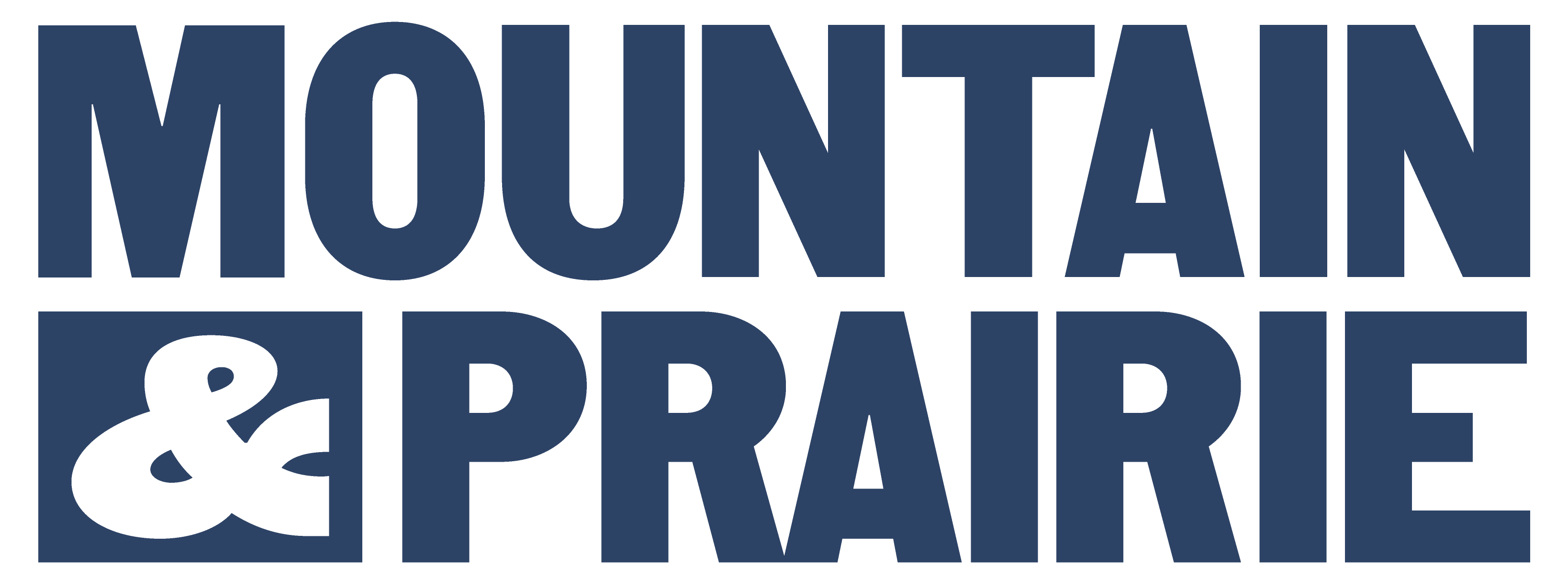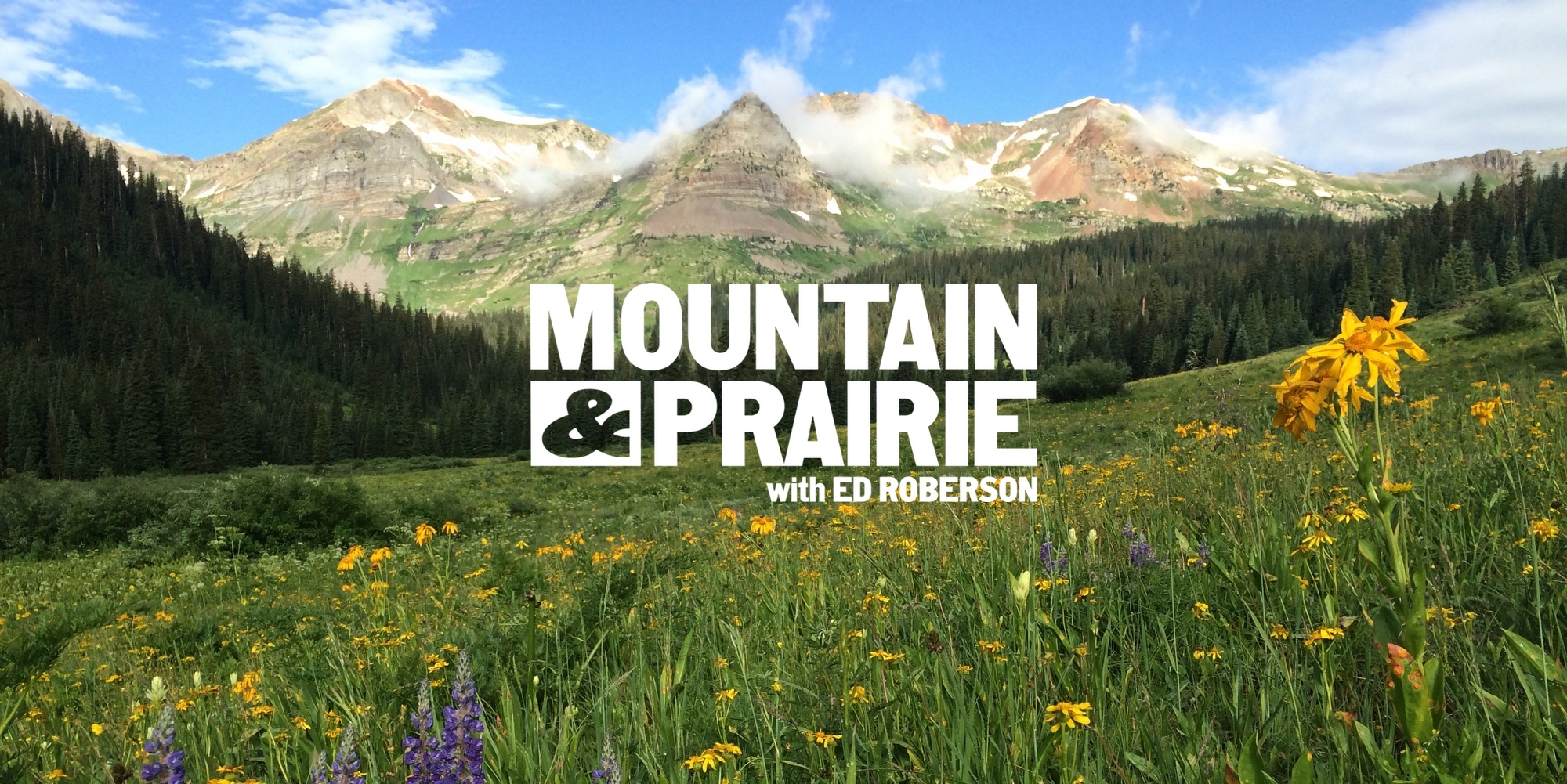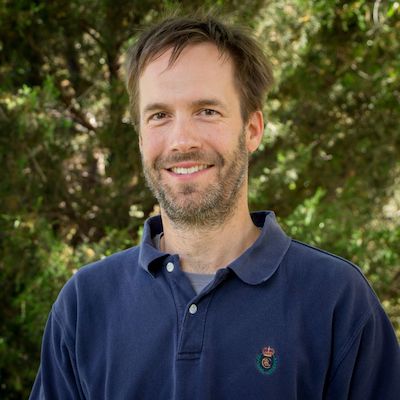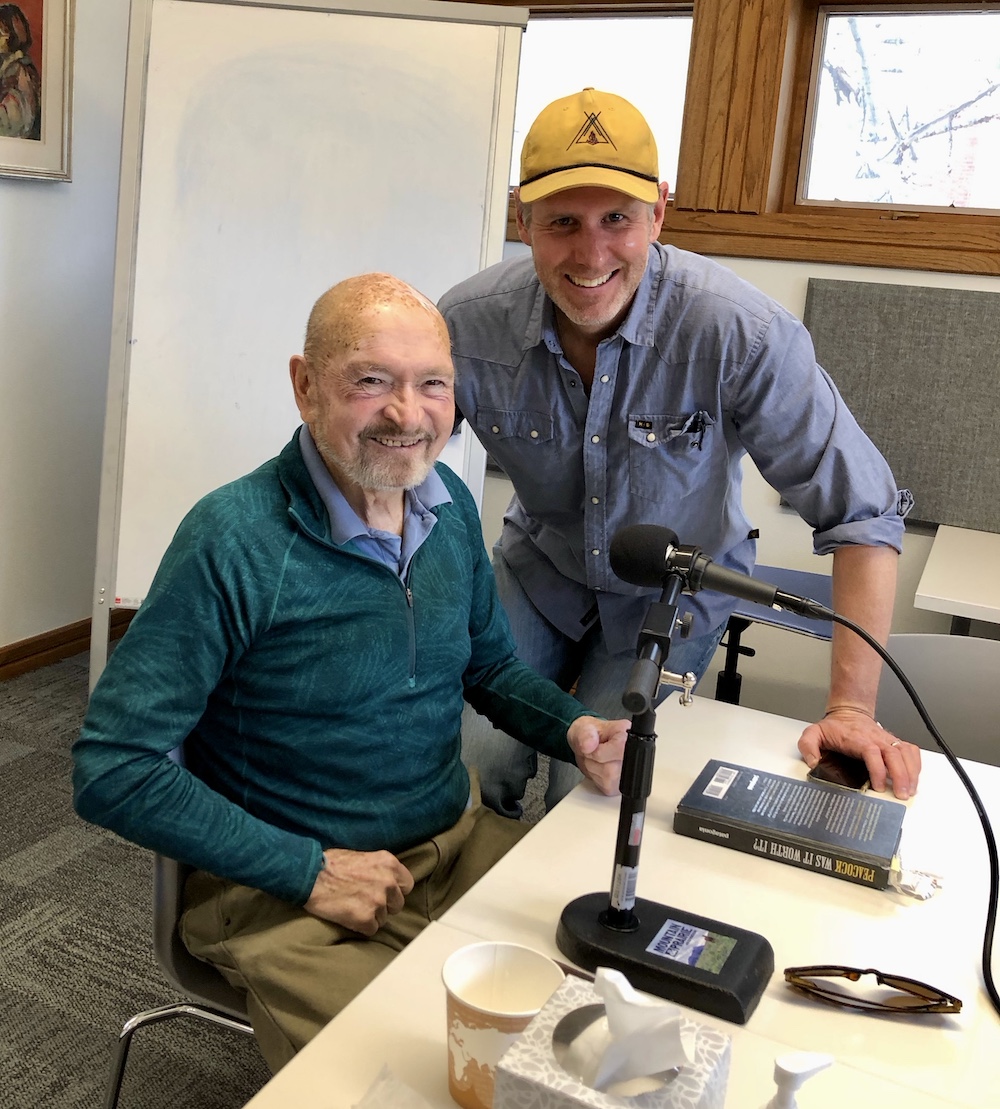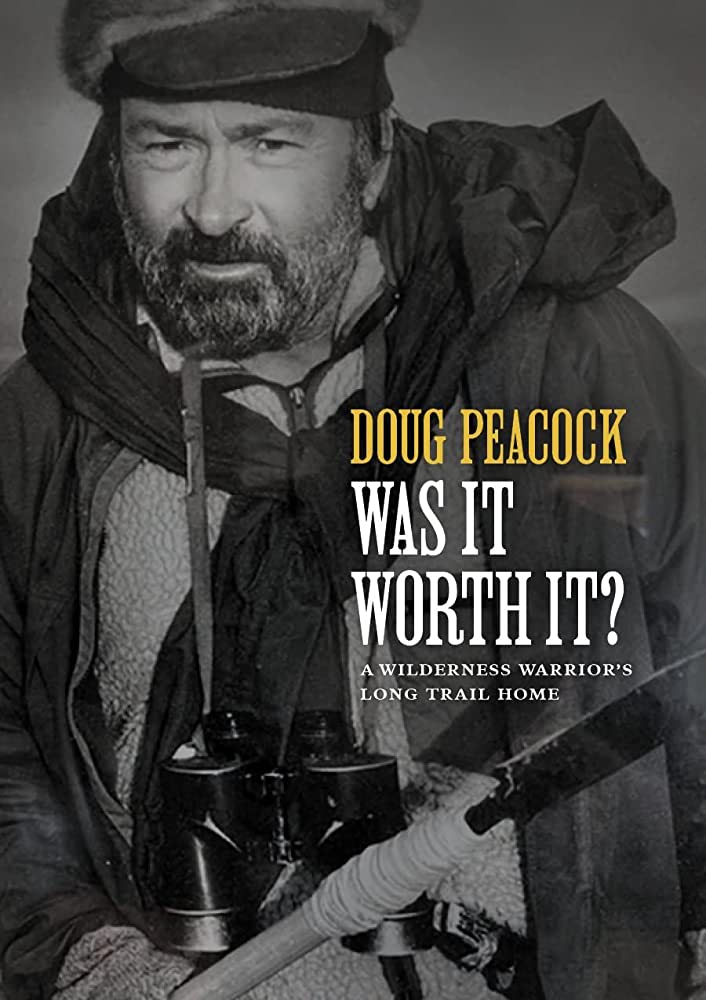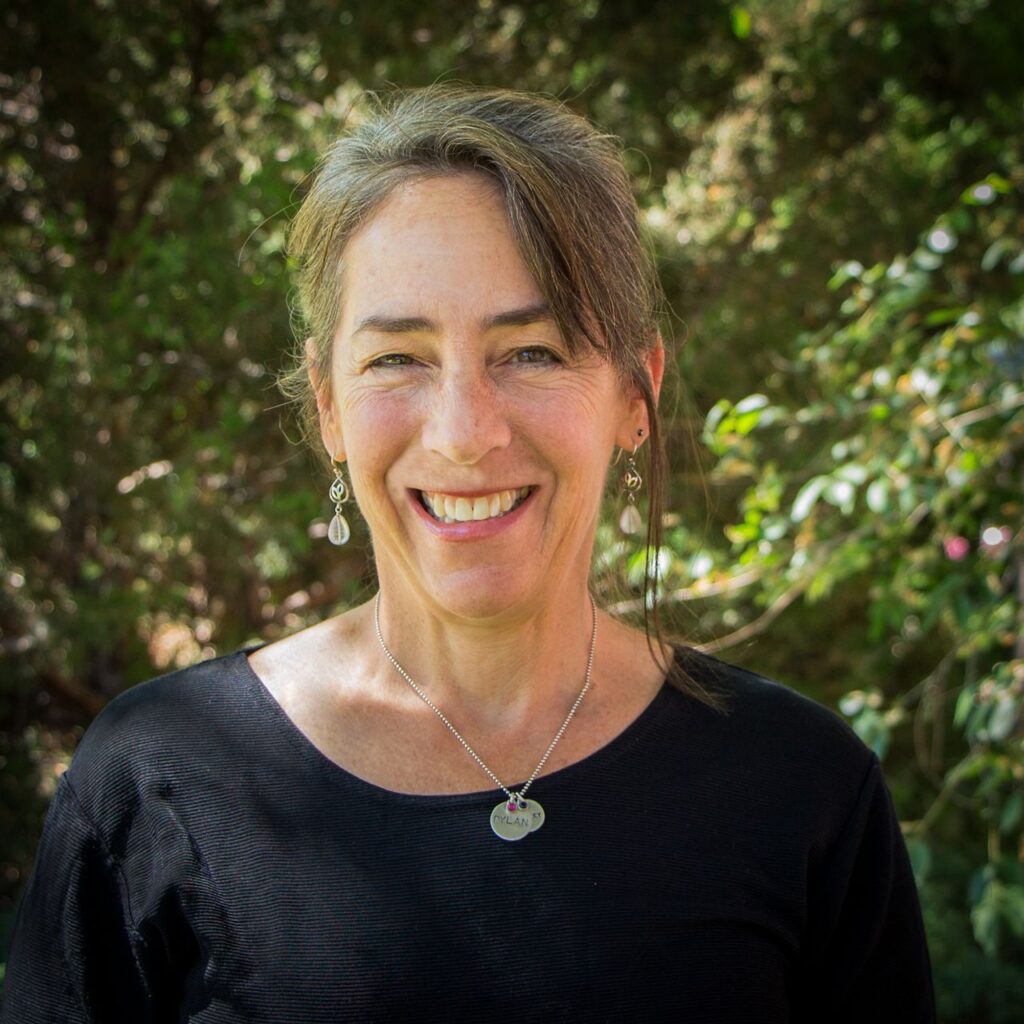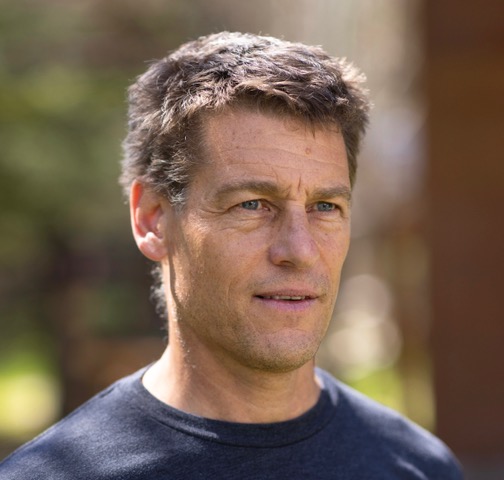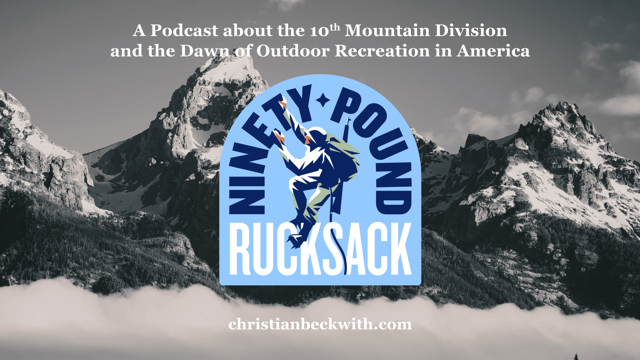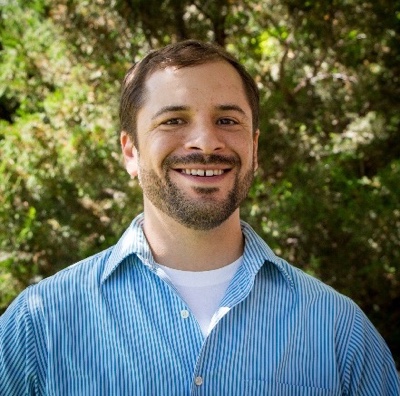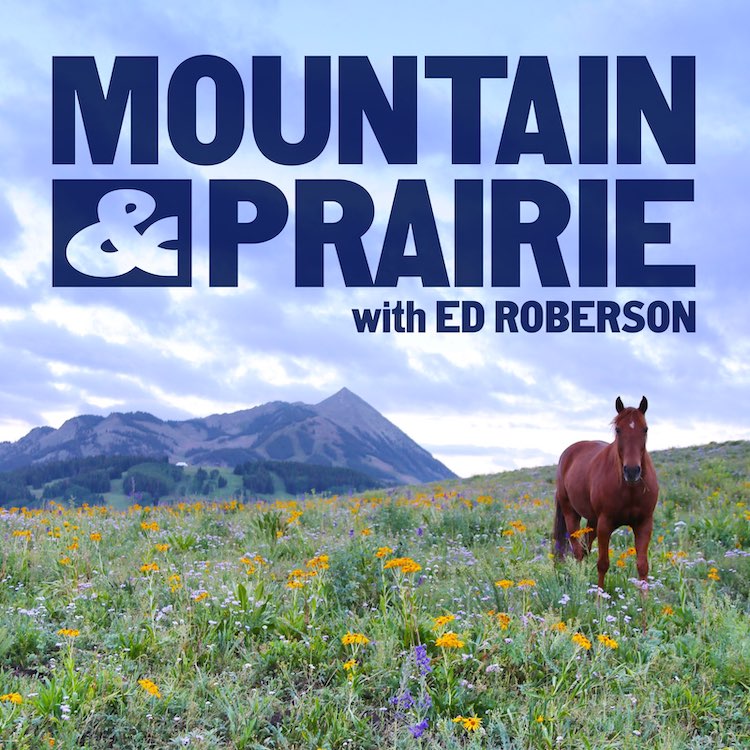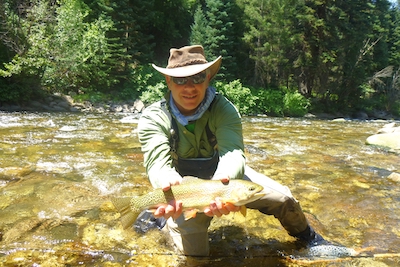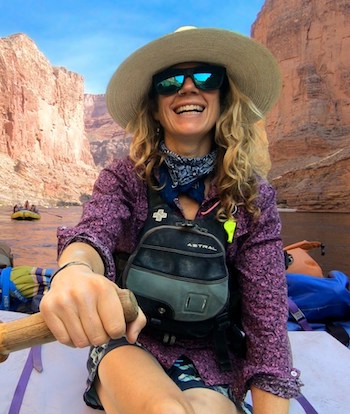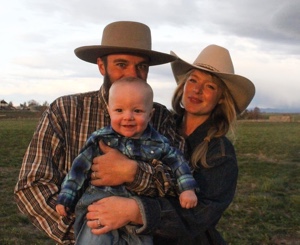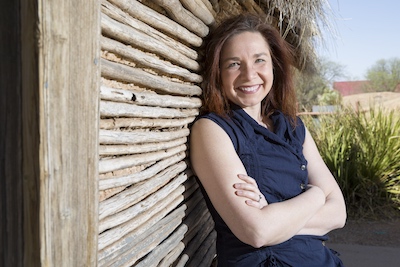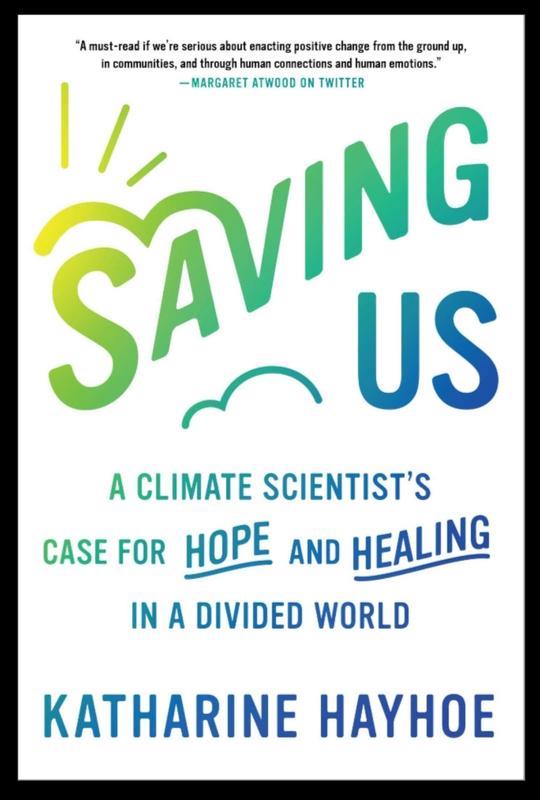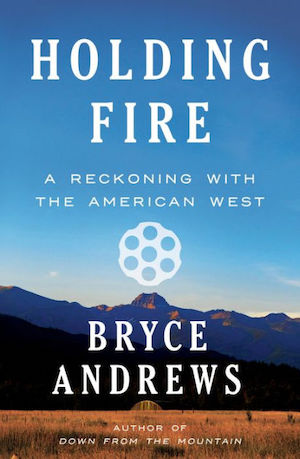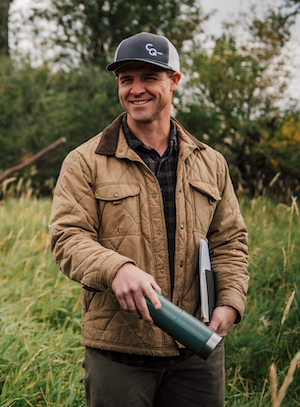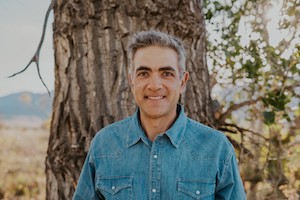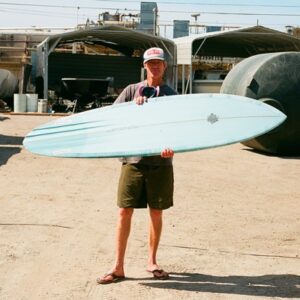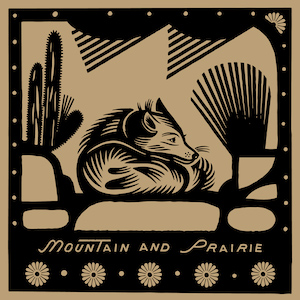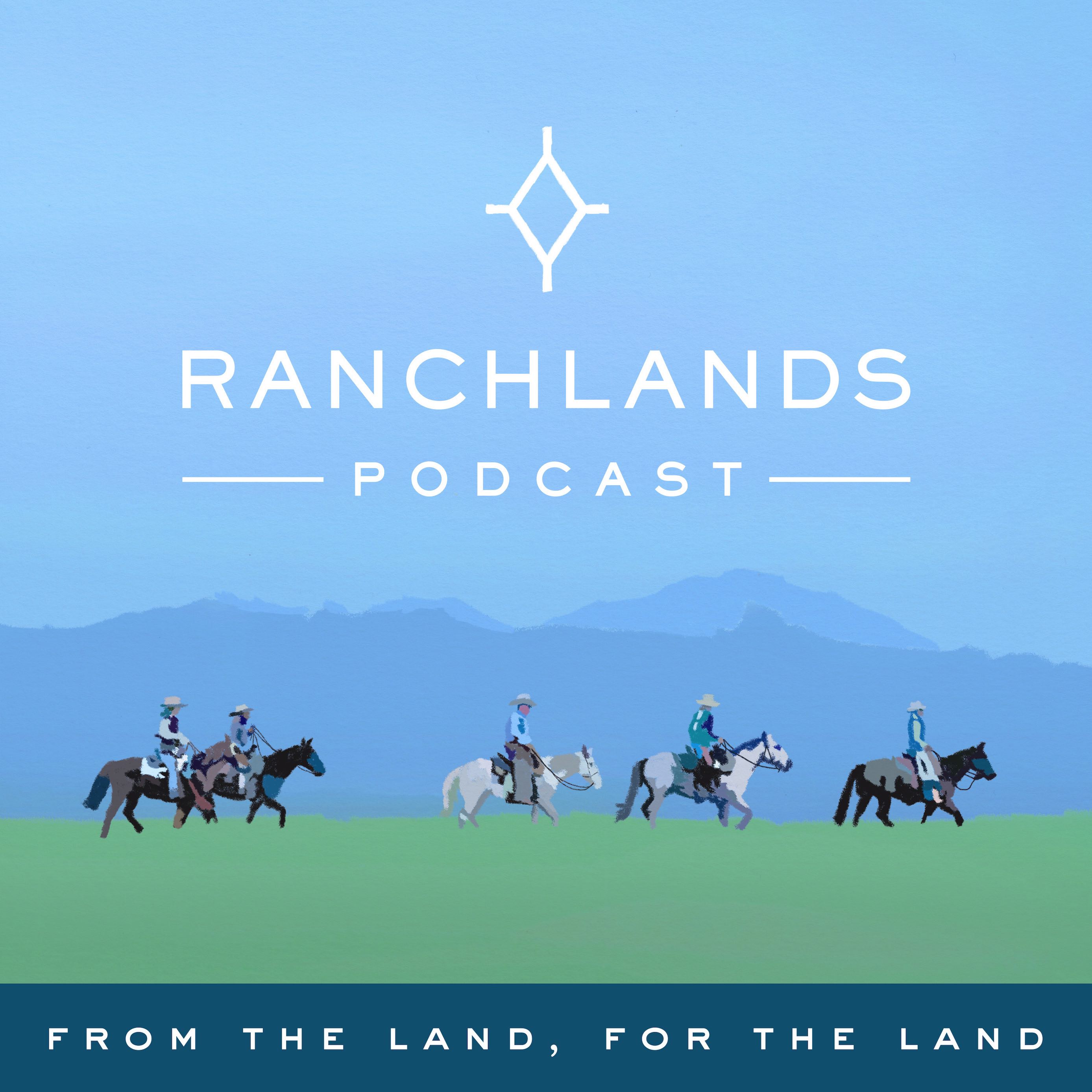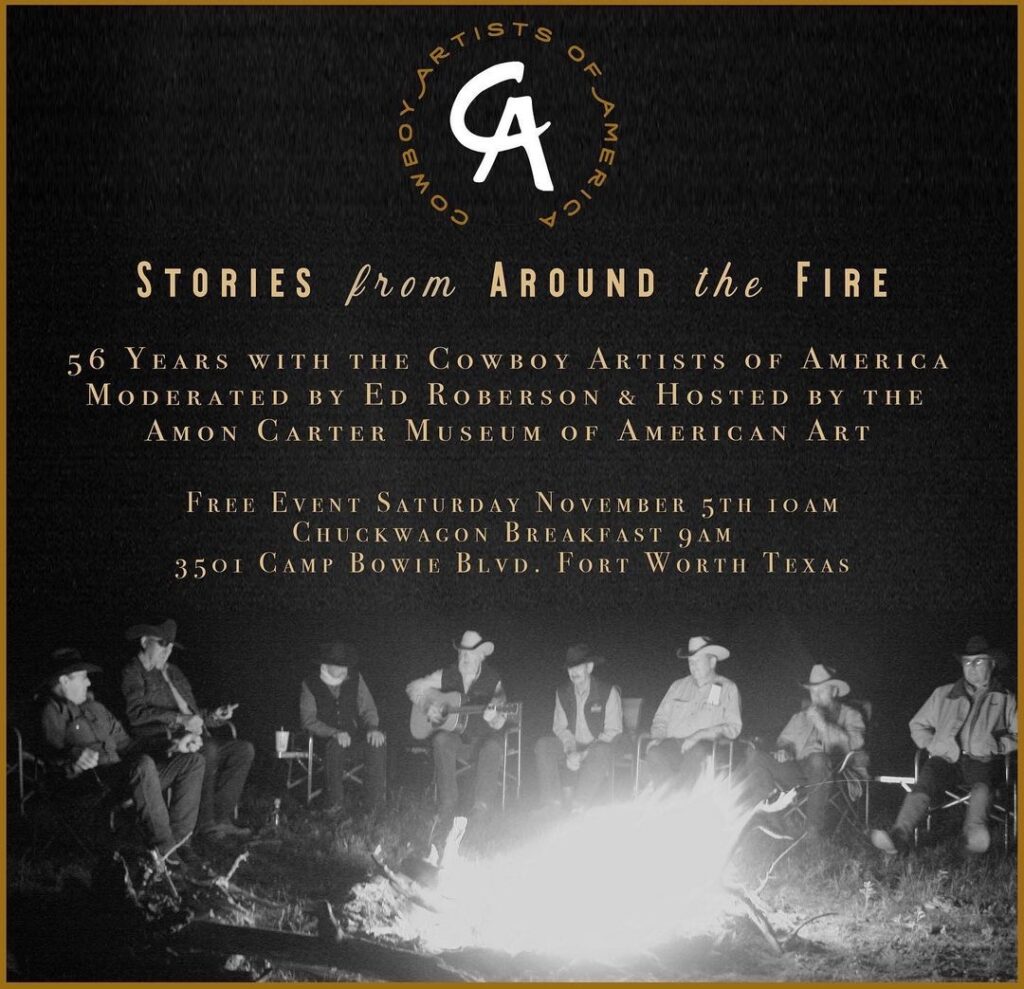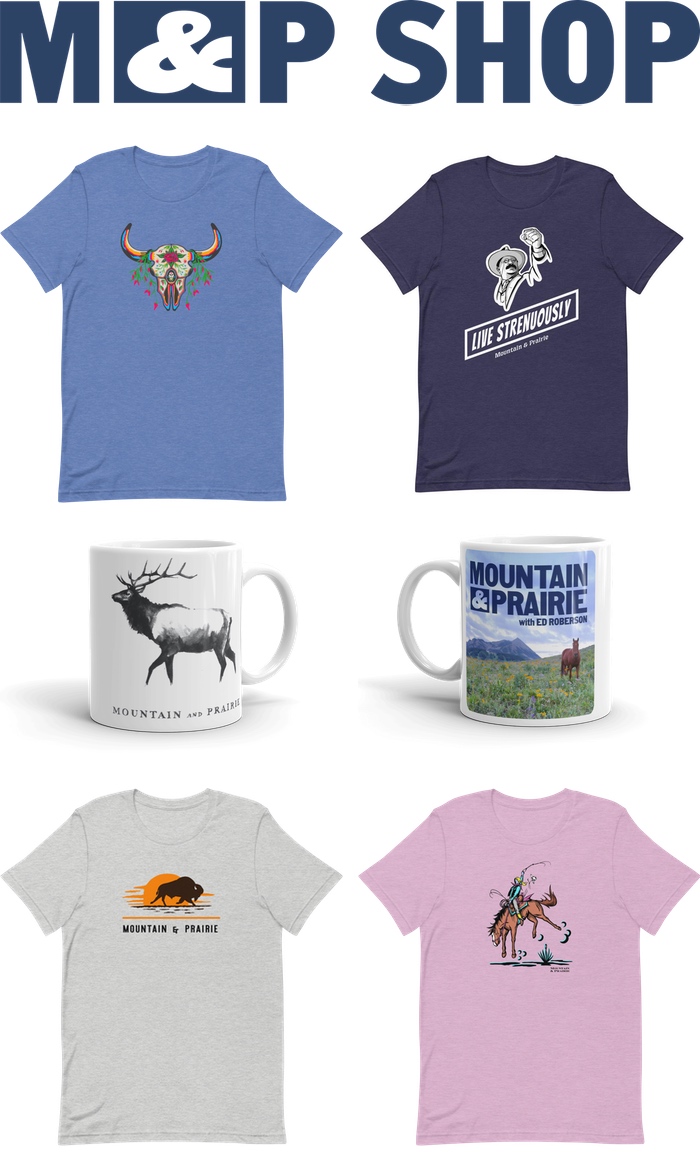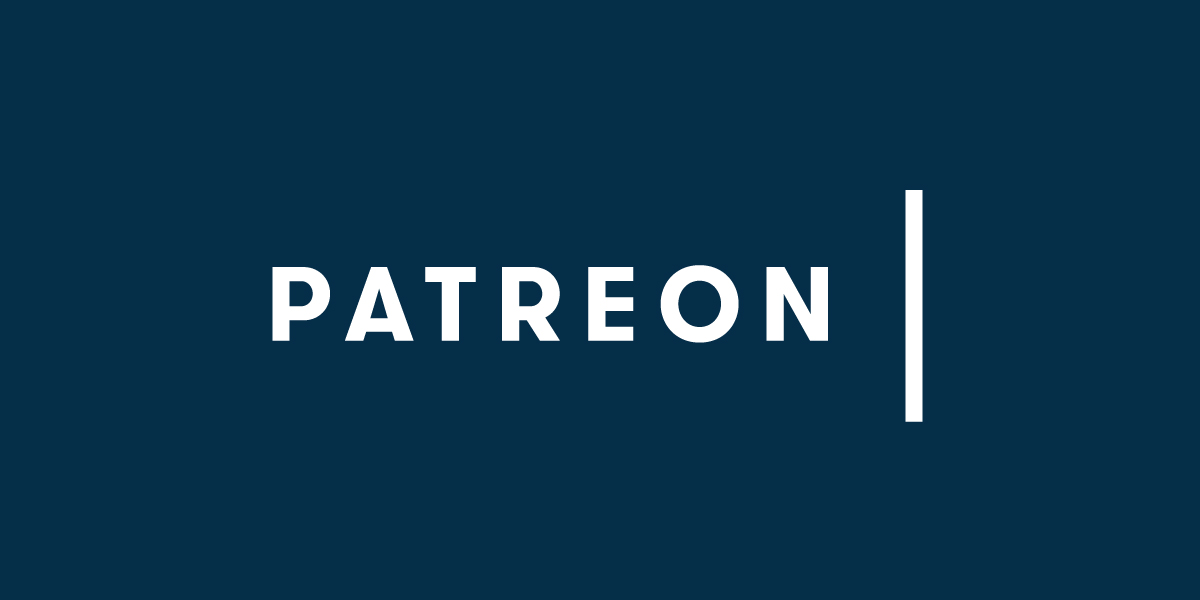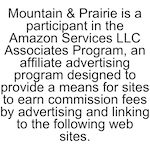Rebuilding a Resilient, Regional Meat Supply Chain – LIVE at the Old Salt Festival

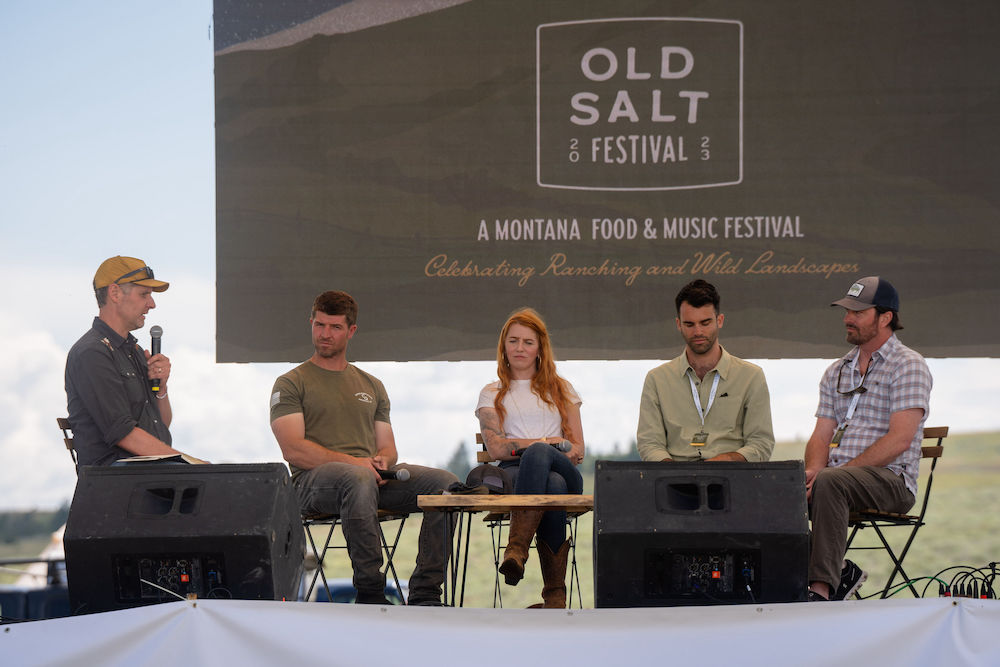
This is a special live episode that was recorded in late June 2023 at the first-ever Old Salt Festival, which was held on the Mannix Family Ranch in Helmville, Montana. The Old Salt Festival is a three-day celebration of ranching, land stewardship, and wild places that features live Western music, wood-fired cooking, products from some of the West’s most renowned artisans, readings and interviews with Western authors and poets, and in-depth discussions about conservation and land stewardship. The festival was a resounding success, so I’m thrilled to share one of the many conversations with you here.
The episode is a panel discussion titled Rebuilding a Resilient, Regional Meat Supply Chain, featuring several of the West’s leading voices in sustainable meat production and regenerative agriculture. In order of their appearance in the episode, you’ll hear from Cole Mannix, President of the Old Salt Co-op; Kate Kavanaugh, owner of Western Daughters Butcher Shoppe and host of the Mind, Body, and Soil Podcast; Dan Miller, Founder of Steward; and Wyatt Nelson, President of Wild West Local Foods. As you’ll hear, each panelist is deeply immersed in a different aspect of the meat production supply chain, and each of them brings a unique and wise perspective to the challenges facing producers and small businesses involved in meat production.
Many of you may already know, but the Old Salt Festival is a part of the Old Salt Co-op, a new, purpose-driven company that “provides meat raised with integrity from Montana landscapes its customers know and care about.” The Old Salt Co-op is working to rebuild the meat business in Montana, creating a sustainable business model that is beneficial to local ranchers, local consumers, and local economies– all while responsibly and effectively stewarding the lands that support agriculture. Rebuilding Montana’s meat supply chain is no small feat, but with smart, purpose-driven people like Cole, Kate, Dan, and Wyatt working to find solutions, I think you’ll be both inspired and encouraged.
To learn more about the Old Salt Co-op, you can go back to my first podcast conversion with Cole from February of 2023. And be on the lookout for another live Old Salt Festival episode, which I’ll be releasing on August 8, 2023– that one will feature a conversation with famed western author David James Duncan followed by a reading from his new novel Sun House.
A huge thanks to Cole and the Old Salt team for inviting me to the Festival, and a huge thanks to the Mannix Family for sharing their stunning ranch with all of us. Thanks to Cole, Kate, Dan, and Wyatt for sharing their wisdom. And last but definitely not least, thanks to the one and only, always hilarious and energetic Bex Frucht for the amazing intro. Hope you enjoy.
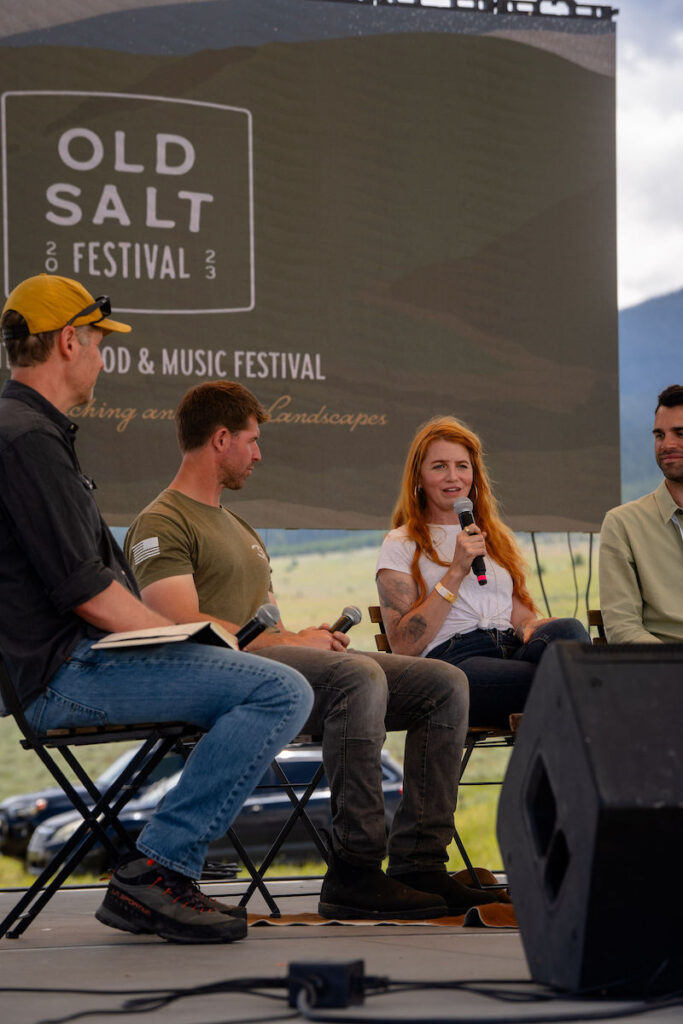
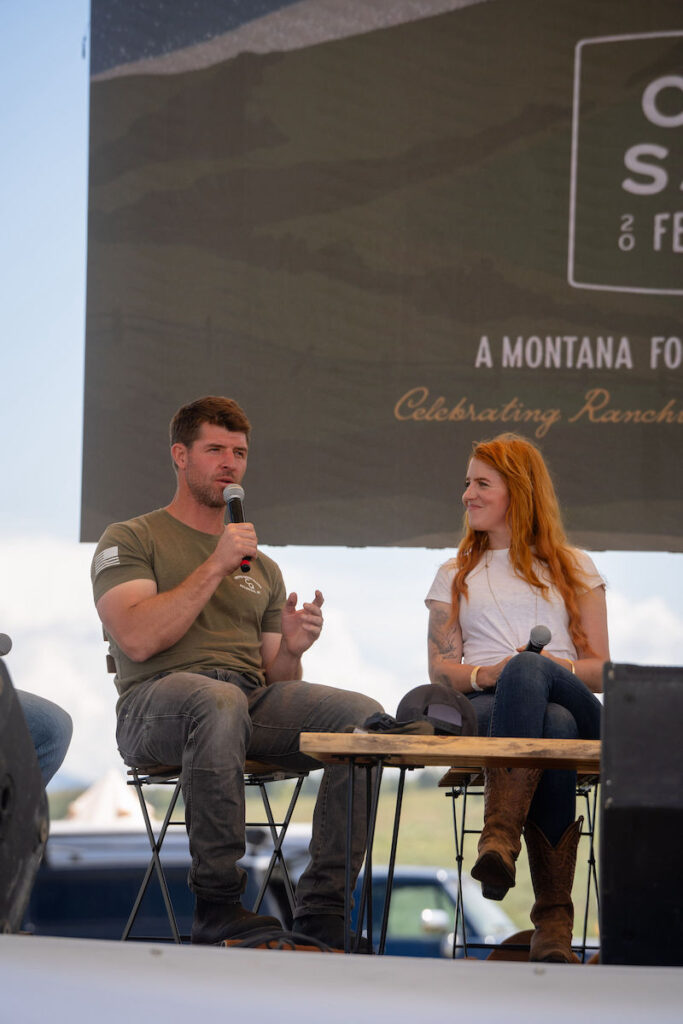
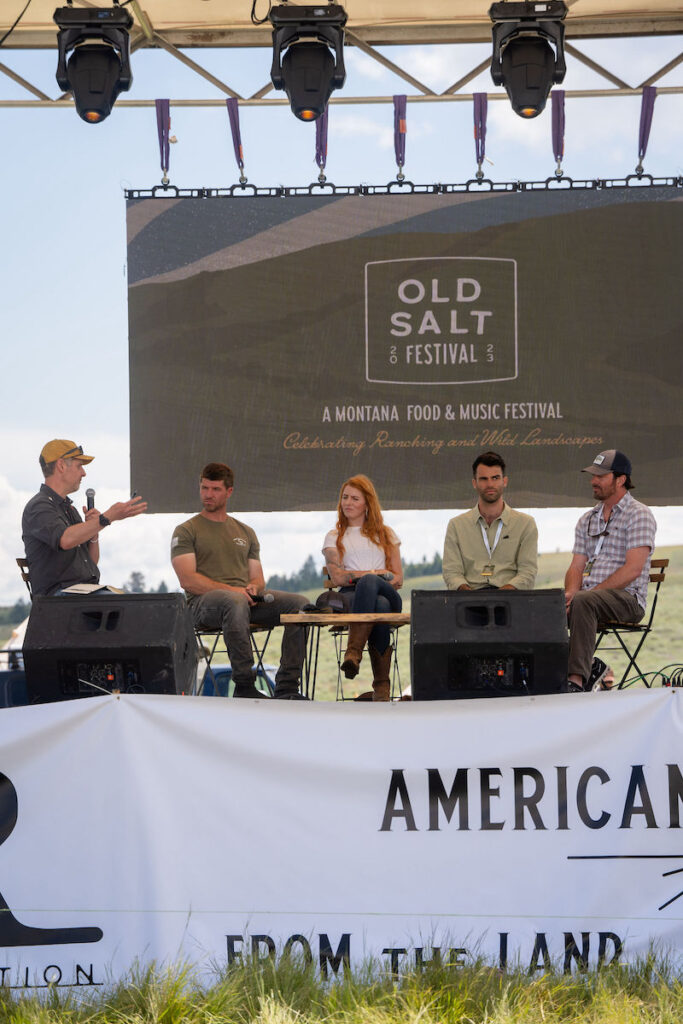
Photos by Anthony Pavkovich for the Old Salt Festival
LISTEN & DOWNLOAD:
Apple Podcasts
Spotify
Google Podcasts
… or wherever you get your podcasts!
—
RESOURCES:
Topics Discussed:
- 2:45 – Introductions
- 6:15 – The challenge and opportunity that Cole saw, leading to the development of Old Salt Co-op
- 9:00 – What Kate sees as major potential challenges for Old Salt Co-op going forward
- 12:15 – What attracted Dan to finance regenerative agriculture, especially given that industry’s tight margins
- 15:00 – Wyatt’s introduction, as well as the roadblocks that Wyatt sees to a more resilient food system from the distribution side of things
- 17:15 – How the panel members go about getting people’s attention
- 24:45 – The work Cole’s family and neighbors have done to protect the local landscape, as well as trends in young people getting involved with agriculture
- 32:15 – What Kate is seeing on the retail side of meat production, and how to address it
- 38:15 – What Old Salt Co-op is working on right now
- 41:15 – What we can do that would help build a resilient meat and food system
Information Referenced:
- Old Salt Festival
- Roadhouse
- Cole Mannix
- Mannix Family Ranch
- Old Salt Co-op
- Kate Kavanaugh
- Western Daughters Butcher Shop
- Mind, Body, and Soil Podcast
- Dan Miller
- Steward
- J-Bar-L Ranch
- LF Ranch
- Sieben Livestock Company
- Andrew Mace
- Ross Eickenbary
- Spike Gjerde
- Woodberry Kitchen
- Matt Skoglund
- Wyatt Nelson
- Helena, MT
- Chesapeake Bay
- Arkansas River
- David James Duncan
- Wes Jackson
Enjoy this episode? Then you might like these too:
- Jesse Griffiths – Humility, Curiosity, and Creative Cuisine
- Taylor Hawes – Innovative Conservation in the Colorado River Basin
- Cate Havstad-Casad, Part 2 – Building Businesses for the Greater Good
- Bryce Andrews, Part 2 – “Holding Fire”
- Chris Dombrowski, Part 2 – “The River You Touch”
- Amber Smith – Creating Connection & Community
- Kate Mannix – A Legacy of Land Stewardship
Visit the podcast page for a full, searchable list of episodes
Rob Addington – A Deep Dive into Western Wildfires and Forest Health

Rob Addington is the Director of the Forest and Fire Program with The Nature Conservancy in Colorado. He and his team are focused on increasing the pace and scale of forest restoration in Colorado to reduce hazardous fuels and promote landscape resilience to natural disturbances such as wildfire as well as climate change.
You don’t have to live in the West to know that the region has been battling ongoing drought, historically large and intense wildfires, and various forms of insect-induced forest devastation. Over the past few years here in Colorado, we’ve experienced some of the most destructive wildfires in recorded history, and the pine beetle infestation continues to be a source of serious and increasing concern. And Colorado is obviously not alone– there are similar stories of struggling forests throughout all of the Western states.
While the current conditions may be dire, you’ll be happy to know that Rob and his team at The Nature Conservancy are working extremely hard to find collaborative, creative, and effective solutions to the challenges facing our forests here in the West. By partnering with government agencies, Tribal nations, private landowners, various non-profits, and more, TNC has been leading and implementing some of the most innovative forest health work in the country– work that is creating more resilient, healthy landscapes across hundreds of thousands of acres.
For all the listeners who have been asking for a wildfire and forest health-focused episode, this one is for you. I met up with Rob at the TNC office in Boulder, and he was kind enough to educate me on both the big picture and finer details of all things forest health. You can check out the notes for a full list of everything we discussed, but a few of the topics include: The infamous 2020 wildfire season and the outlook for 2023, the history of land management and how that has affected wildfires, pine beetles, wildfire’s effects on water quality, how beavers can play a role in fire mitigation, some specific success stories, business solutions for forest health, the all-important focus on partnerships, post-fire land management strategies, good books, and much more. Be sure to visit the episode webpage for links to everything, including TNC’s exciting new Western Division Forest and Fire Initiative.
A huge thanks to Rob for taking the time to answer all my questions and another huge thanks to TNC for leading all of this important work. I hope you enjoy!
Headshot courtesy of The Nature Conservancy
LISTEN & DOWNLOAD:
Download on Apple Podcasts
Download on Spotify
Download on Google Podcasts
…or wherever you get your podcasts!
EPISODE PARTNER:
This episode is brought to you in partnership with the Colorado chapter of The Nature Conservancy. Guided by science and grounded by decades of collaborative partnerships, The Nature Conservancy has a long-standing legacy of achieving lasting results to create a world where nature and people thrive.
On the fourth Tuesday of every month throughout 2023, Mountain & Prairie will be delving into conversations with a wide range of The Nature Conservancy’s leaders, partners, collaborators, and stakeholders, highlighting the myriad of conservation challenges, opportunities, and solutions here in the American West. You can access all of the 2023 episodes here.
To learn more about The Nature Conservancy’s impactful work in Colorado and around the world, visit www.nature.org/colorado
RESOURCES:
Topics Discussed:
- 3:30 – Discussing the fire season of 2020
- 9:45 – The outlook for the fire season of 2023
- 12:00 – Discussing the variability in Colorado’s recent fire seasons
- 14:45 – The causes for Colorado’s changing fire seasons
- 17:30 – Exploring, specifically, the role of historic land management and how it impacts fire behavior
- 20:30 – Discussing pine beetles
- 26:00 – How the forest regime progresses in beetle-killed stands without fire, and how changing fire behavior is impacting the forest regime
- 32:00 – How fires impact water
- 39:15 – Discussing potential solution strategies for Colorado’s fire situation
- 42:00 – Discussing the importance of managing partnerships in this work
- 44:45 – A specific, fire-related project that Rob is happy about
- 47:15 – Exploring the potential of a for-profit business that is incentivized to thin out fire-prone forests
- 50:30 – Beavers’ role in wildfire prevention
- 54:30 – Rob’s favorite period of history to read about
- 56:30 – Management strategies for an area that has been wiped clean by fire
- 1:00:30 – Rob’s book recommendations
Information Referenced:
- Rob Addington
- Monsoon
- Cameron Peak Fire
- East Troublesome Fire
- Calwood Fire
- Grizzly Creek Fire
- Pine Gulch Fire
- Division of Fire Prevention and Control
- Hayman Fire
- High Park Fire
- Waldo Canyon Fire
- Black Forest Fire
- Ponderosa Pine
- The Big Burn by Timothy Egan
- Gifford Pinchot
- Ten o’clock Rule
- Lodgepole Pine
- Spruce-Fir forest
- Grand County, CO
- Winter Park
- Red Phase of beetle kill (and others)
- Forest Canopy Bulk Density
- Incident Management Teams
- Rocky Mountain Research Station
- Aspen trees
- Boulder, CO
- Taylor Hawes
- Buffalo Creek Fire
- Strontia Springs Reservoir
- Cheesman Reservoir
- Fort Collins, CO
- Cache La Poudre River
- Big Thompson River
- Bipartisan Infrastructure Act
- Inflation Reduction Act
- USFS Wildfire Crisis Strategy
- Upper Monument Creek Landscape Restoration Initiative
- South Platte River
- Northern Colorado Fireshed Collaborative
- Pike National Forest
- Jefferson County Open Space
- Denver Mountain Parks
- Conifer, CO
- Bailey, CO
- Biochar
- Mass timber/Cross-laminated timber
- Emily Fairfax
- Beaver dam analogs
- Eager by Ben Goldfarb
- Salt by Mark Kurlansky
- Cod by Mark Kurlansky
- Astoria by Peter Stark
- Peter Stark
- Oregon State University
- Katherine Schloegel
- Colorado Forest Restoration Institute
- Ecological Restoration Institute (NAU)
- Northern Arizona University
- Young Men and Fire by Norman Mclean
- Mann Gulch Tragedy
- Chief Left Hand by Margaret Coel
- Governor Evans
- Colonel Chivington
- Sand Creek Massacre
- Western Division Forest and Fire Initiative
Enjoy this episode? Then you might like these too:
- Russ Schnitzer – A Life Devoted to Western Landscapes
- Robert Krapfel – On Living A Purpose-Driven Life
- Mike Phillips – Audacious Goals, Relentless Action
- Daniela Ibarra-Howell – Healing the Land Holistically
- Shane Doyle – Reverence for the Past, Hope for the Future
- Land Tawney – Energetic & Optimistic
- Francesca Claverie – A Borderlands Conservation Success Story
- Taylor Hawes – Innovative Conservation in the Colorado River Basin
Visit the podcast page for a full list of episodes where you can filter episodes by topic and guests’ vocations.
David Gessner Returns – “A Traveler’s Guide to the End of the World”
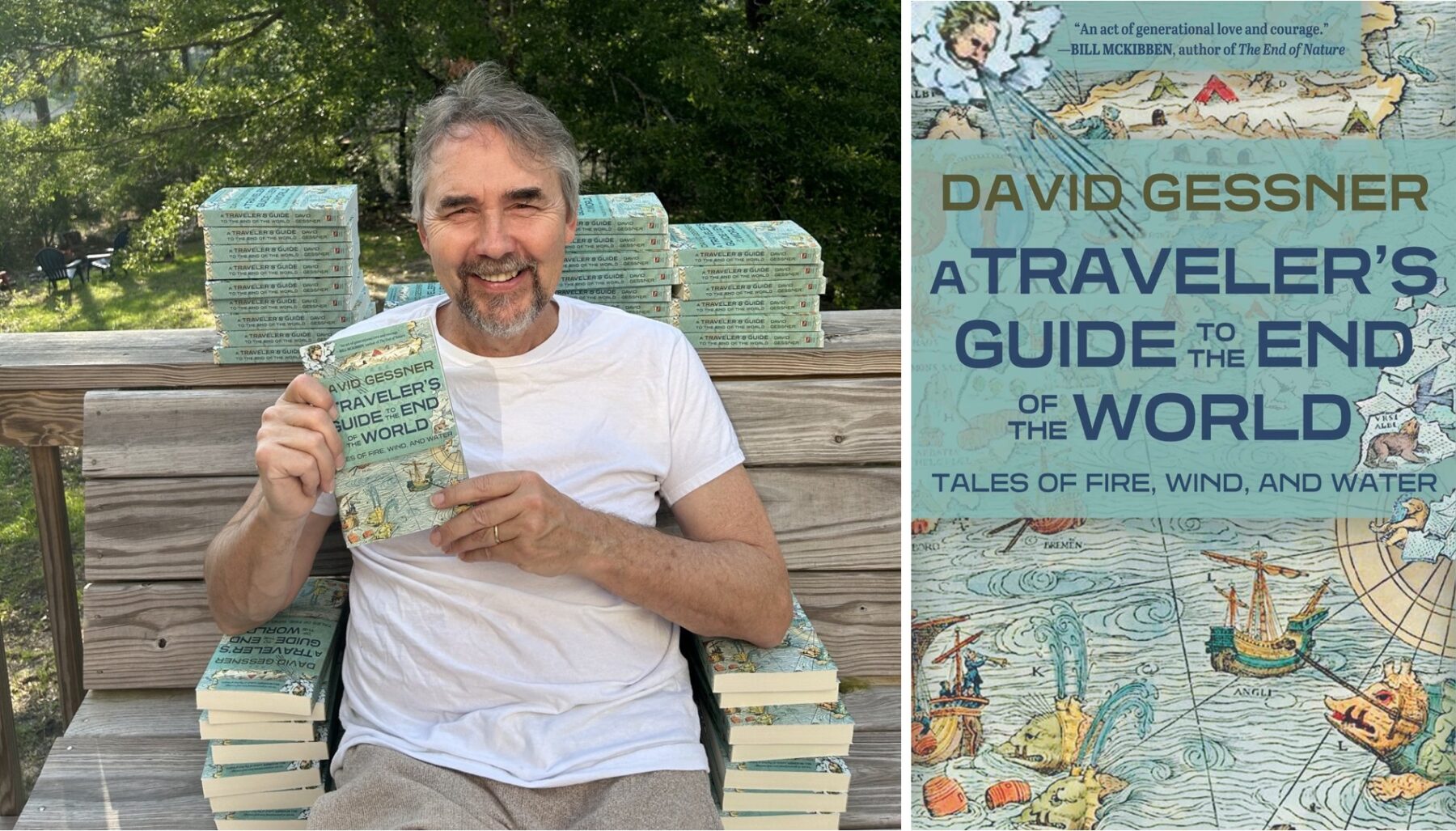
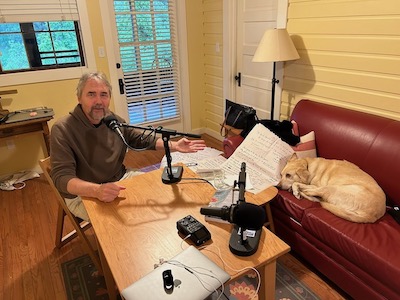
David Gessner is no stranger to Mountain & Prairie listeners– he’s joined me for many episodes and is the author of many of my favorite books, including All the Wild That Remains, Leave It As It Is, My Green Manifesto, and more. His newest book is A Traveler’s Guide to the End of the World: Tales of Fire, Wind, and Water, which once again showcases David’s unique ability to combine humor, travel, and memoir in service of connecting the reader with the natural world.
A Traveler’s Guide to the End of the World chronicles David’s journeys around the country, where he finds himself in the middle of an unsettling number of climate disasters– from historic forest fires in the American West to hurricanes on North Carolina’s Outer Banks. Eschewing the ubiquitous facts, figures, and policy debates that often dominate climate-focused books, David does what he does best: he tells stories. Specifically, he tells impactful, insightful stories from the front lines of the climate crisis– stories that will stick with the reader for years to come.
As has been our tradition for several years now, David and I met up in Boulder, Colorado, where he and his family visit each summer. We obviously talk a lot about the book, but as is the case whenever we get together, the conversation flows into many fun and unexpected topics. You can check out the episode notes for a full list of everything we discussed, but some of the topics include: David’s recent writing workshop at the Zapata Ranch with his friend, author Craig Childs, the importance of momentum and dailiness in writing, how David’s daughter was the influence for the new book, optimism vs pessimism when reporting current events, thoughts on death and loss, David’s good friend, the late Mark Spitzer, the next generation of conservation-minded writers, some book recommendations, the idea of being a “polygamist of place,” and much more.
I’m always happy to have the opportunity to sit down with David for a conversation, so I greatly appreciate his carving out the time. I hope you can check out A Traveler’s Guide to the End of the World, and I hope you enjoy this episode.
Photos courtesy of David Gessner
LISTEN & DOWNLOAD:
Apple Podcasts
Spotify
Google Podcasts
… or wherever you get your podcasts!
—
RESOURCES:
Topics Discussed:
- 3:15 – David’s Zapata Ranch retreat
- 6:45 – Discussing the power of “dailiness”
- 7:45 – Whether or not teaching helped in David’s practice of writing
- 9:00 – How many books David has written in the past 18 months
- 10:30 – How David knows when an idea becomes a book in his mind
- 16:45 – David’s goal for A Traveler’s Guide to the End of the World, including how he balanced stories with statistics and humor with the weight of the subject
- 20:45 – Evaluating how the news of the West is reported
- 27:45 – What David means when he identifies as a “polygamist of place”
- 33:15 – David’s relationship with Mark Spitzer
- 39:30 – How David feels about entering a stage in life where his friends are beginning to pass away
- 43:45 – Discussing David’s daughter, climate change, and how they figure into A Traveler’s Guide
- 50:30 – David discussing the various tools he would like to use to face climate change
- 52:45 – Who David thinks will continue the work of the Doug Peacocks of the world
- 56:45 – Discussing the political alignment affiliated with climate change work
- 1:01:30 – David’s book recommendations
Information Referenced:
- A Traveler’s Guide to the End of the World by David Gessner
- Leave It As It Is: A Journey Through Theodore Roosevelt’s American Wilderness by David Gessner
- All the Wild That Remains by David Gessner
- Return of the Osprey by David Gessner
- The Tarball Chronicles by David Gessner
- Sick of Nature by David Gessner
- Chautauqua Park
- Zapata Ranch
- Craig Childs
- Andre Hamm
- Samuel Johnson
- Henry David Thoreau
- Jaimie Raskin
- Boulder, CO
- Ken Sleight
- Seldom Seen Smith
- The Monkey Wrench Gang by Edward Abbey
- Pack Creek Fire
- Pack Creek
- Quonset Hut
- Paradise, CA
- Flagstaff, AZ
- Bill McKibben
- The End of Nature by Bill McKibben
- The Ministry for the Future by Kim Stanley Robinson
- Winston Churchill
- Maya Angelou
- Yellowstone to Yukon Conservation Initiative
- Leadville, CO
- Wallace Stegner
- Ryan Lambert
- Ducks Unlimited
- Tarboro, NC
- Morehead City, NC
- Atlantic Beach, NC
- Wendell Berry
- Cape Cod
- Worcester, MA
- University of North Carolina Wilmington
- Wilmington, NC
- Bears Ears National Monument
- Mark Spitzer
- Monster Fishing by Mark Spitzer
- Lea Graham
- Tom Wolfe
- Beatnik
- The New Yorker
- Shakespeare and Company
- Gar
- Brad Watson
- Phillip Gerard
- John Denver
- Rocky Mountain High by John Denver
- Annie’s Song by John Denver
- Mt. Pinatubo
- Orrin Pilkey
- Hurricane Florence
- Hurricane Dorian
- Mancos, CO
- Durango, CO
- Doug Peacock
- Gary Snyder
- Orion Magazine
- Camille Dungy
- Drew Lanham
- Ed’s interview with Dr. Drew Lanham
- Joe Wilkins
- Orion Magazine’s 2023 Environmental Writers’ Workshop
- Ginger Strand
- Kathryn Miles
- Zack Podmore
- Salt Lake Tribune
- San Juan County, UT
- ZZ Top
- Katherine Hayhoe
- Lancet Study of youth climate anxiety across the world
- Vernal, UT
- The Overstory by Richard Powers
- Braiding Sweetgrass by Robin Wall Kimmerer
- True West by Betsy Gaines Quammen
- Bernard DeVoto
- Nate Schweber
Enjoy this episode? Then you might like these too:
- Betsy Gaines Quammen – A Fascinating History of Public Lands in the West
- Nate Schweber – A Forgotten Chapter of American Conservation
- Douglas Brinkley – Exploring the Past to Find Inspiration for the Future
- Taylor Hawes – Innovative Conservation in the Colorado River Basin
- Doug Peacock – 50 Years of Fighting for the Grizzlies
- Ryan Busse – Standing His Ground
Visit the podcast page for a full, searchable list of episodes
Doug Peacock – 50 Years of Fighting for the Grizzlies
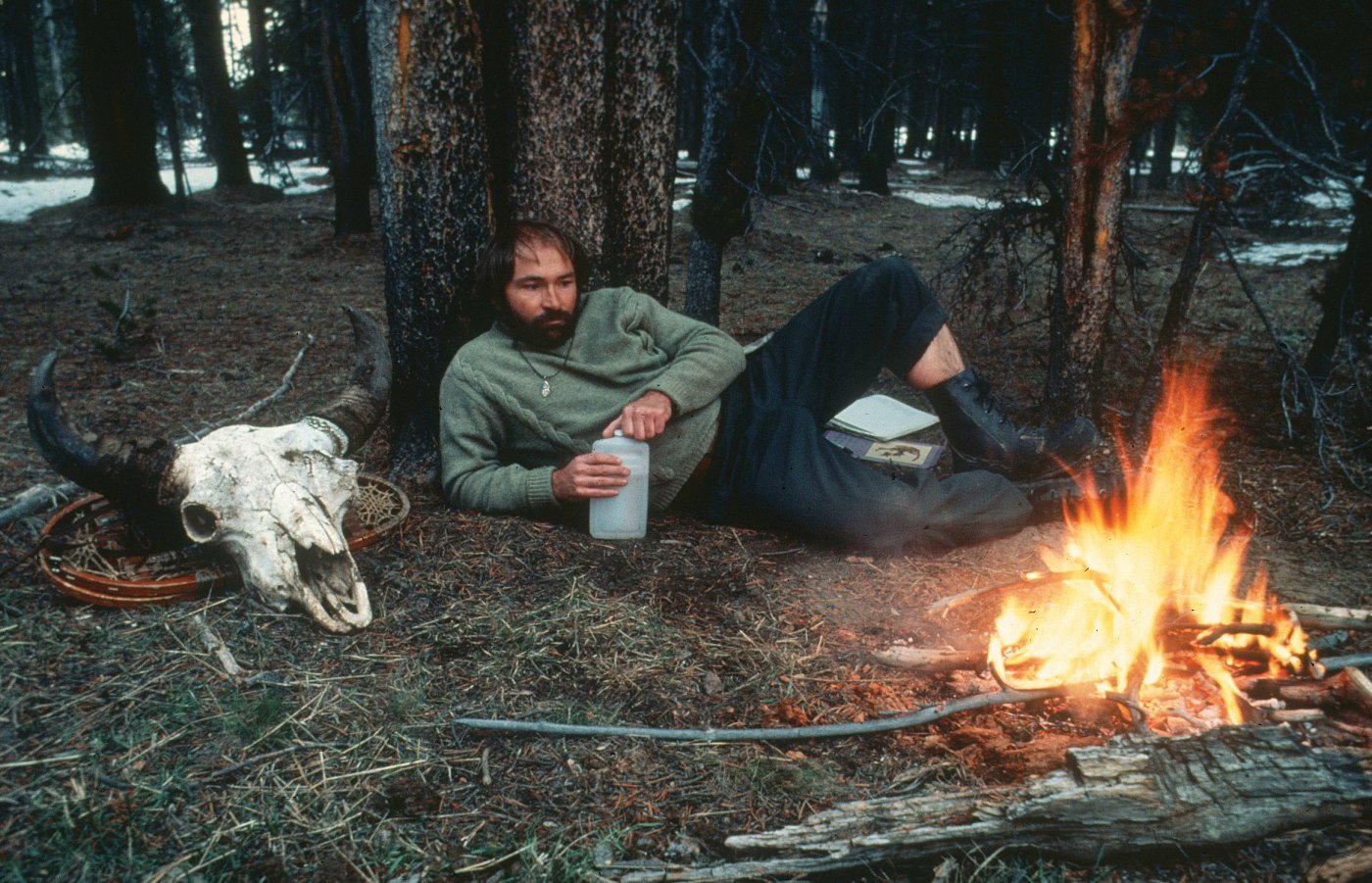
Doug Peacock is a legendary environmentalist, writer, filmmaker, and grizzly bear advocate. He’s the co-founder of two conversation nonprofits– Round River Conservation Studies and Save the Yellowstone Grizzly. Doug was also the inspiration for the character George Washington Hayduke in his friend Edward Abbey’s classic novel The Monkey Wrench Gang. And to top it all off, he is the author of many classic books, including Grizzly Years: In Search of the American Wilderness and his most recent award-winning book Was it Worth It? A Wilderness Warrior’s Long Trail Home, published by Patagonia Books.
Doug was born and raised in Michigan, where he grew up obsessed with nature and the outdoors. As a young man, he was drafted into the Vietnam War, where he served as a Green Beret combat medic, an experience that placed him squarely in the middle of devastating violence toward his fellow soldiers, as well as civilian men, women, and children. In 1968, he returned home from Vietnam spiritually broken, mentally unwell, and physically debilitated with malaria. Not knowing where to turn, he headed deep into the wilderness of Yellowstone National Park by himself, where he formed an unlikely bond with the Yellowstone Grizzly Bear. Eventually, he recovered both physically and mentally and, to this day, he credits the grizzly with saving his life. He has spent the last half-century repaying his debt to the grizzly bear, aggressively fighting for their protection and recovery in the Greater Yellowstone Ecosystem and beyond.
I met up with Doug in Aspen, Colorado, where he was in town for a reading of Was it Worth It? at Aspen’s only bookstore, Explore Booksellers. Even though I could’ve talked with Doug for many hours, we managed to jam a lot of stories into this conversation. Some of the topics we discussed include: Why Doug does not carry a gun in grizzly country; why it is important for humans to love and protect a creature as powerful, even dangerous, as a grizzly; his friendships with Edward Abbey, Yvon Chouinard, Jim Harrison, and others, and how each of those high-voltage personalities helped to elevate the others; the death and secret burial of Edward Abbey; why climate changes is such a threat to grizzlies, the challenges and financial realities of a life dedicated to environmental advocacy; his greatest source of pride and greatest disappointment; what is giving him hope now; and Doug reads several passages from Was It Worth It?
Today, at age 81, you can still feel the fire in Doug’s spirit and his passion for grizzlies is palpable. I was honored to have the opportunity to chat with Doug, and I loved his book Was it Worth It? I hope you enjoy this conversation as much as I did.
Photos courtesy of Doug Peacock and Patagonia Books
LISTEN & DOWNLOAD:
Apple Podcasts
Spotify
Google Podcasts
… or wherever you get your podcasts!
—
RESOURCES:
Topics Discussed:
- 4:10 – Discussing the picture on the front of Doug’s book
- 6:25 – When Doug decided it wasn’t fair to be in grizzly country with guns
- 8:40 – How Yellowstone became a part of Doug’s life
- 10:55 – How grizzlies provided a much-needed community for Doug after his time at war
- 12:40 – How long it took for Doug to find peace in grizzly country after Vietnam
- 15:10 – Exploring Doug’s balance between telling the good stories and being willing to fight for conservation
- 18:10 – Why specifically it is so important for humans to learn to love and protect a creature as powerful, even dangerous, as a grizzly
- 19:40 – How Doug’s friends made him a better conservationist
- 21:40 – How Doug’s friends balance their very strong personalities
- 22:40 – The importance of ceremony and how Doug handled the passing of his dear friend, Ed Abbey
- 28:40 – Whether or not parenthood changed Doug’s outlook on risk and death
- 30:10 – Who or where Doug drew his motivation from
- 32:10 – How Doug managed his lifestyle
- 33:40 – What keeps Doug awake at night, as it pertains to grizzlies
- 36:40 – How Doug became interested in fighting climate change by way of grizzlies
- 39:30 – Where Doug would focus his energy if he were starting his career in conservation now
- 40:25 – Whether or not Doug is an optimist
- 43:40 – What work Doug is most proud of in his life, and where he thinks he may have fallen short
- 46:00 – Doug’s friendship with Jim Harrison
- 47:10 – What gives Doug hope
- 48:40 – Doug’s mandatory reading
Information Referenced:
- Doug Peacock
- Was it Worth It? by Doug Peacock
- Grizzly Years by Doug Peacock
- Doug Thompkins
- Somerset Island
- Beluga Whale
- Narwhal
- Tet Offensive
- NVA – Northern Vietnamese Army
- Viet Cong
- Lodgepole pine
- Edward Abbey
- Hayduke
- The Monkey Wrench Gang by Edward Abbey
- Sebastian Junger
- The Perfect Storm by Sebastian Junger
- Tribe by Sebastian Junger
- Mandan
- Tom Brokaw
- Federal Wildlife Service (US Fish and Wildlife)
- Terry Tempest Williams
- Jim Harrison
- Rick Ridgeway
- Peter Matthiessen
- Bordeaux
- Yvon Chouinard
- Yvon Chouinard giving away Patagonia
- Jack Loeffler
- Jeb Ellisan
- Umba River
- On the Trail of the Siberian Tiger with the Do-Boys by Doug Peacock
- Mesquite
- My Lai Massacre
- Zuni
- Haida Gwaii (Queen Charlotte Islands)
- Turkey vulture
- Round River Conservation Studies
- Save the Yellowstone Grizzly
- “Peacock’s War” by Doug Peacock
- Guggenheim grant
- Lannan Foundation
- Patagonia
- Tetonia, ID
- Mountain Journal Article about Doug’s suite against the government
- Cannes Film Festival
- The Beast of Our Time
- Jeff Bridges
- Bill Payne
- Lance Craighead
- Whitebark Pine
- Thomas Banyacya
- San Juan Mountains
- Doug Sues
- Video of Doug Peacock’s tribute to Jim Harrison
- Legends of the Fall by Jim Harrison
- Dalva by Jim Harrison
- Tom McGuane
- Hunter S. Thompson
- Desert Solitaire by Edward Abbey
- Arctic Dreams by Barry Lopez
- Silent Spring by Rachel Carson
- Dr. Drew Lanham
- Ed’s interview with Dr. Drew Lanham
Enjoy this episode? Then you might like these too:
- Rick Ridgeway – Purpose-Driven Adventurer
- Francesca Claverie – A Borderlands Conservation Success Story
- Mike McTee & Vince Slabe – Win-Win Solutions in the Fight to Save Eagles
- Pete McBride, Part 2: In Search of Silence
- Shane Doyle – Reverence for the Past, Hope for the Future
- Chris Burkard – The Art of Suffering
- Jason Gardner – A Life of Purpose & Service
- Iris Gardner – Living with Intention
- Hal Herring – A Man of Words & Wild Places
Visit the podcast page for a full, searchable list of episodes
Chris Hawkins – Using Nature to Build Healthier & More Equitable Communities
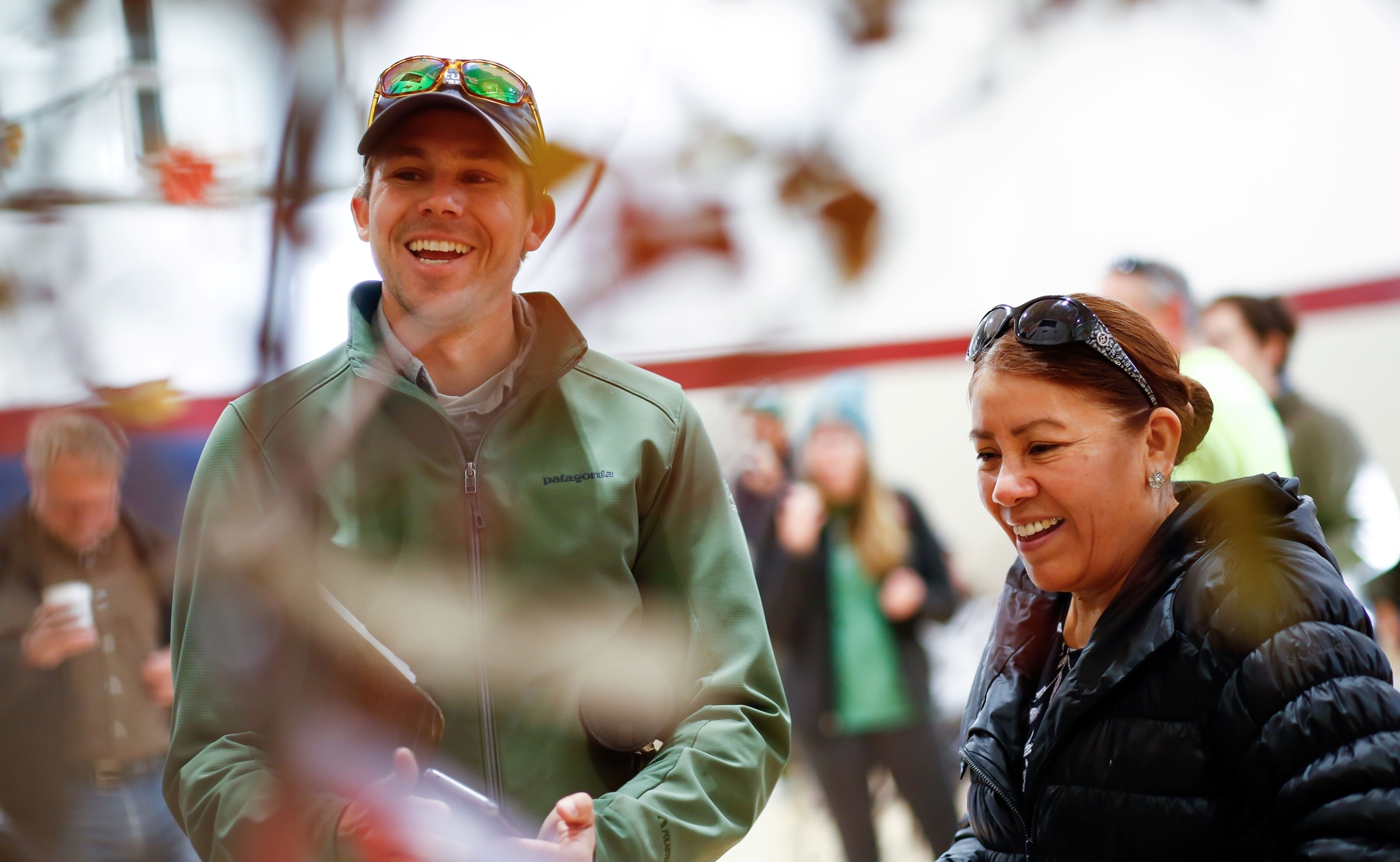
Chris Hawkins is the Colorado Urban Conservation Manager for The Nature Conservancy, where he leads the organization’s efforts in Denver to “solve global challenges like the biodiversity and climate emergencies by supporting and creating more sustainable, efficient ways of living.”
When many people think of The Nature Conservancy, they may envision large-scale conservation efforts across vast grasslands and wild landscapes– but TNC also conducts some of its most innovative conservation work in cities— work that leads to more resilient, healthy, and equitable communities. Chris’s work in Denver is a shining example of how nature-based solutions in densely populated urban areas can have positive ripple effects far beyond the city limits.
Chris was born and raised on the east coast, attended college in Boston, and from the very beginning of his career, he’s been focused on service and causes greater than himself. He’s worked as a Corps Member of AmericaCorps, as Chief of Staff in New York City’s Department of Environmental Protection, and for the past nine years, he’s been with the Nature Conservancy. As you’ll hear in this conversation, Chris’s diverse professional experiences have allowed him to bring a unique and effective perspective to the complex world of urban conservation.
Chris was nice enough to join me at my dining room table for an engaging and educational conversation about all things urban conservation. We started out by discussing why TNC has chosen to devote its resources and expertise to conservation in cities, and he explains the unique challenges facing cities in the West. We discuss how public health is directly related to people’s access to nature, and how the simple-but-not-easy strategy of planting trees in neighborhoods can have huge conservation and public health benefits. As is the case with all of my conservation-related conversations, we discuss the critical importance of relationships, and how Chris has managed to build relationships with a diverse group of Denver residents. We also discuss his professional trajectory, the importance of exporting urban conservation ideas to other cities, and the critical roles of mayors and local leadership. And finally, Chris is a serious history buff, so we have a great discussion about books.
There is so much fascinating information packed into this episode, and I greatly appreciate Chris’s taking the time to share his wisdom with the Mountain & Prairie community. Check out the episode notes below for links to everything we discuss. I hope you enjoy this conversation as much as I did.
Photos courtesy of Chris Hawkins and The Nature Conservancy
LISTEN & DOWNLOAD:
Download on Apple Podcasts
Download on Spotify
Download on Google Podcasts
…or wherever you get your podcasts!
EPISODE PARTNER:
This episode is brought to you in partnership with the Colorado chapter of The Nature Conservancy. Guided by science and grounded by decades of collaborative partnerships, The Nature Conservancy has a long-standing legacy of achieving lasting results to create a world where nature and people thrive.
On the fourth Tuesday of every month throughout 2023, Mountain & Prairie will be delving into conversations with a wide range of The Nature Conservancy’s leaders, partners, collaborators, and stakeholders, highlighting the myriad of conservation challenges, opportunities, and solutions here in the American West. You can access all of the 2023 episodes here.
To learn more about The Nature Conservancy’s impactful work in Colorado and around the world, visit www.nature.org/colorado
RESOURCES:
Topics Discussed:
- 3:45 – Why do Chris and TNC work in cities
- 7:00 – Thriving cities in the West and the unique challenges they present
- 9:30 – Whether or not the health benefits of the outdoors have become a larger part of Chris’s work recently
- 15:30 – Discussing trees
- 27:45 – How Chris builds relationships in his work in cities
- 33:45 – Specific strategies Chris uses to build trust
- 38:30 – Where Chris grew up and why he became involved in this work
- 43:30 – Discussing the work of city mayors
- 53:00- How ideas that are exported or imported between cities show up in Chris’s work in Denver
- 1:00:15 – Chris’s book recommendations
Information Referenced:
- Chris Hawkins
- Jaime González
- The Nature Conservancy
- The Nature Conservancy in Colorado
- TNC Cities program in Denver
- Global Cities Program, TNC
- The Nature Conservancy in Kentucky
- The Nature Fix by Florence Williams
- Last Child in the Woods by Richard Louv
- Melissa McHale
- Globeville, Denver
- Elyria-Swansea, Denver
- Office of Climate Action, Sustainability, and Resiliency, Denver, CO
- Carlos Fernández
- Matt Moorhead and Galen Guerro-Murphy
- Dr. Katherine Hayhoe
- Americorps
- Cape Cod
- John Hickenlooper
- Congestion pricing in London
- Yemi Mobolade
- New York Office of Charter Schools
- New York City Office of Sustainability
- New York City Water Board
- Rain garden map of New York City
- Trust for Public Land
- Colorado Cattlemen’s Association
- Green roof ordinance in Denver
- The Power Broker by Robert A. Caro
- Robert Moses
- Grant by Ron Chernow
- Ulysses S. Grant
- Frederick Douglass: Prophet of Freedom by David W. Blight
Enjoy this episode? Then you might like these too:
- Equitable Access to the Outdoors in Texas
- Cole Mannix – Building Community through Land Stewardship and Local Food
- Carlos Fernández, Part 2 – Creating Conservation Opportunities During Uncertain Times
- Douglas Brinkley – Exploring the Past to Find Inspiration for the Future
- Amber Smith – Creating Connection & Community
- Land Tawney – Energetic & Optimistic
- Betsy Gaines Quammen – A Fascinating History of Public Lands in the West
Visit the podcast page for a full list of episodes where you can filter episodes by topic and guests’ vocations.
Live from the Strenuous Life Retreat: In Conversation with Nancy Fishbein
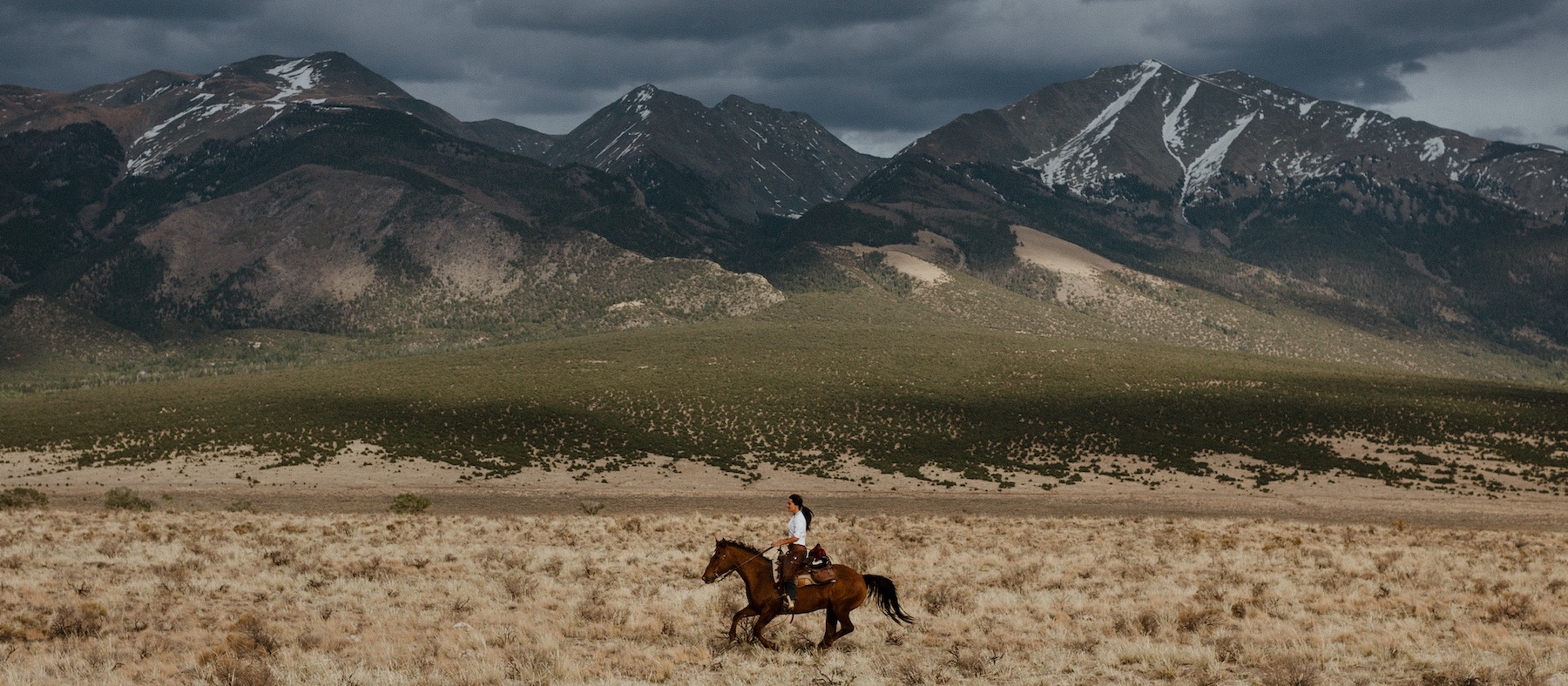
Back in September of 2022, I held the first annual Strenuous Life Retreat at the renowned Zapata Ranch in Colorado’s San Luis Valley. The retreat consisted of five days of adventure and education inspired by Theodore Roosevelt’s well-known commitment to living “the Strenuous Life.” We hiked high into the Sangre de Cristo Mountains, rode horses in Great Sand Dunes National Park, and enjoyed world-class meals. And each afternoon, we enjoyed facilitated conversations about land stewardship, conservation, and regenerative agriculture. This episode is a recording of one of those conversations.
I was honored to be joined by conservation veteran Nancy Fishbein, who serves as Director of Resilient Lands for the Colorado Chapter of The Nature Conservancy. Nancy has been a long-standing leader in the Western conservation community, so we were all honored that she took time out of her full schedule to join us and share some stories and hard-earned wisdom. The Zapata Ranch is owned by the Nature Conservancy and managed by Ranchlands, so Nancy has a unique insight into the history of the ranch, as well as the importance of conservation in the San Luis Valley.
We recorded this conversation at the ranch’s education center, one afternoon after a morning of horseback riding. The first half consists of me asking the questions, and the second half consists of questions from the retreat participants. We cover everything from the history of the Zapata Ranch to the establishment of Great Sand Dunes National Park, which adjoins the ranch to the north. We talk about the conservation bison herd that calls the ranch home, and some of the ongoing challenges in the San Luis Valley created by water speculation and development. We discuss how mineral rights development can coexist with conservation, the protection of biodiversity on ranches, how TNC and the National Park Service work together, and much more. As you’ll hear, everyone in attendance was super engaged and curious about Nancy’s work, and it showed in the range of interesting and thoughtful questions.
I hope this episode will give you a bit of insight into the types of conversations we had at the 2022 Retreat and the kind of conversations you can expect in 2023 and beyond. Colorado is blessed to have so many committed conservationists like Nancy who devote their time and energy to protecting and stewarding these spectacular landscapes, and I can’t thank Nancy enough for taking the time to join us.
If you’re interested in joining me for the 2023 Retreat, as of this recording there are still a few spots left. Follow this link to learn more and reserve your spot. Thanks for listening, and I hope you enjoy!
Header photo by Ranchlands, Nancy’s headshot by The Nature Conservancy.
LISTEN & DOWNLOAD:
Apple Podcasts
Spotify
Google Podcasts
… or wherever you get your podcasts!
—
RESOURCES:
Topics Discussed:
- 3:30 – A quick intro to Nancy
- 5:30 – The story of the Education Center on Zapata Ranch
- 7:00 – How Zapata Ranch first got onto TNC’s radar
- 10:00 – How TNC goes about acquiring properties like Zapata Ranch
- 12:15 – Why the previous owner of Zapata Ranch did not charge TNC full fair market value for the property
- 13:30 – The importance of relationships in TNC’s work
- 15:30 – What happened after TNC acquired Zapata Ranch
- 18:15 – Explaining a conservation easement
- 20:00 – Why the bison herd on Zapata Ranch were such a focal point of TNC’s conservation work there
- 22:15 – Why TNC has chosen to hold onto Zapata Ranch as an owner for so long
- 25:45 – How TNC works with various levels of government agencies
- 27:30 – Nancy’s biggest concern for the San Luis Valley
- 29:00 – The most recent scheme to remove water from the San Luis Valley
- 31:45 – Audience questions begin
- 32:00 – Whether or not Nancy wished that TNC had done something different in their acquisition of Zapata Ranch
- 32:45 – Nancy’s surprises and lessons learned about Zapata
- 34:30 – Why an easement cannot be put on San Luis Valley’s aquifer
- 36:15 – TNC’s role in the establishment of Baca Wildlife Refuge and the Great Sand Dunes National Park
- 40:45 – The distinction between a national park and national monument
- 41:30 – How the TNC navigated purchasing land that was managed by a private company (Rocky Mountain Bison) but on leased state land
- 42:30 – Exploring the potential causality between water export schemes in the San Luis Valley and the establishment of the Great Sand Dunes National Park
- 44:00 – Whether or not there remains the appetite for bipartisan action, such as the kind that led to the creation of the Great Sand Dunes National Park, in our current political climate
- 45:00 – Exploring TNC’s support of agriculture as a conservation service
- 43:30 – Whether or not TNC deals with agricultural leases
- 51:30 – How easements impact mineral and mining rights on a property
- 53:30 – How fracking might complicate conservation easements, and whether or not easements are a successful tool for reducing oil and gas development
- 55:45 – How TNC measures success in its conservation work and the preservation of biodiversity on a property, and ow they respond to and act on those measurements
- 1:00:55 – What TNC is working on right now in Colorado
Information Referenced:
- Nancy Fishbein
- The Nature Conservancy, Colorado
- Ranchlands
- San Luis Valley
- World Wildlife Fund
- Zapata Ranch
- Rocky Mountain Bison Company
- JE Canyon Ranch
- La Garita Creek Ranch
- Meshak Lakes Preserve
- David Cooper
- Colorado Parks and Wildlife
- Great Outdoors Colorado
- Chris Castilian
- Matt Moorhead
- Palmer Land Conservancy
- Colorado State Land Board
- Conservation easement
- Sangre de Cristo Mountains
- Great Sand Dunes National Park
- La Garita Wilderness
- Baca National Wildlife Refuge
- Blanca Wetlands
- Louis Bacon
- Bureau of Land Management
- Colorado Open Lands
- Confined and unconfined aquifers
- Closed Basin Project
- AWDI water export scheme
- Spanish Land Grants
- Treaty of Guadalupe Hidalgo
- Senator Wayne Allard
- Senator Ben Nighthorse Campbell
- Scott McInnis
- Bruce Babbitt
- Ken Salazar
- Great Sand Dunes National Park and Preserve Act of 2000
- National Park Service
- Row crop agriculture
- Colorado Cattlemen’s Association
- American Farmland Trust
- Golden Eagle episode – Mike McTee and Vince Slabe
- Southern High Plains Initiative
- Trinidad, CO
- Purgatoire River
- Shortgrass Prairie
- Virtual livestock fencing
Enjoy this episode? Then you might like these too:
- Matt Moorhead & Galen Guerrero-Murphy – Grasslands Conservation on the Southern High Plains
- Douglas Brinkley – Exploring the Past to Find Inspiration for the Future
- Frances Ashforth – Art, Water, and Wide-Open Spaces
- Nate Schweber – A Forgotten Chapter of American Conservation
- Pete McBride, Part 2: In Search of Silence
- Rick Ridgeway – Purpose-Driven Adventurer
- Betsy Gaines Quammen – A Fascinating History of Public Lands in the West
Visit the podcast page for a full, searchable list of episodes
Jesse Griffiths – Humility, Curiosity, and Creative Cuisine
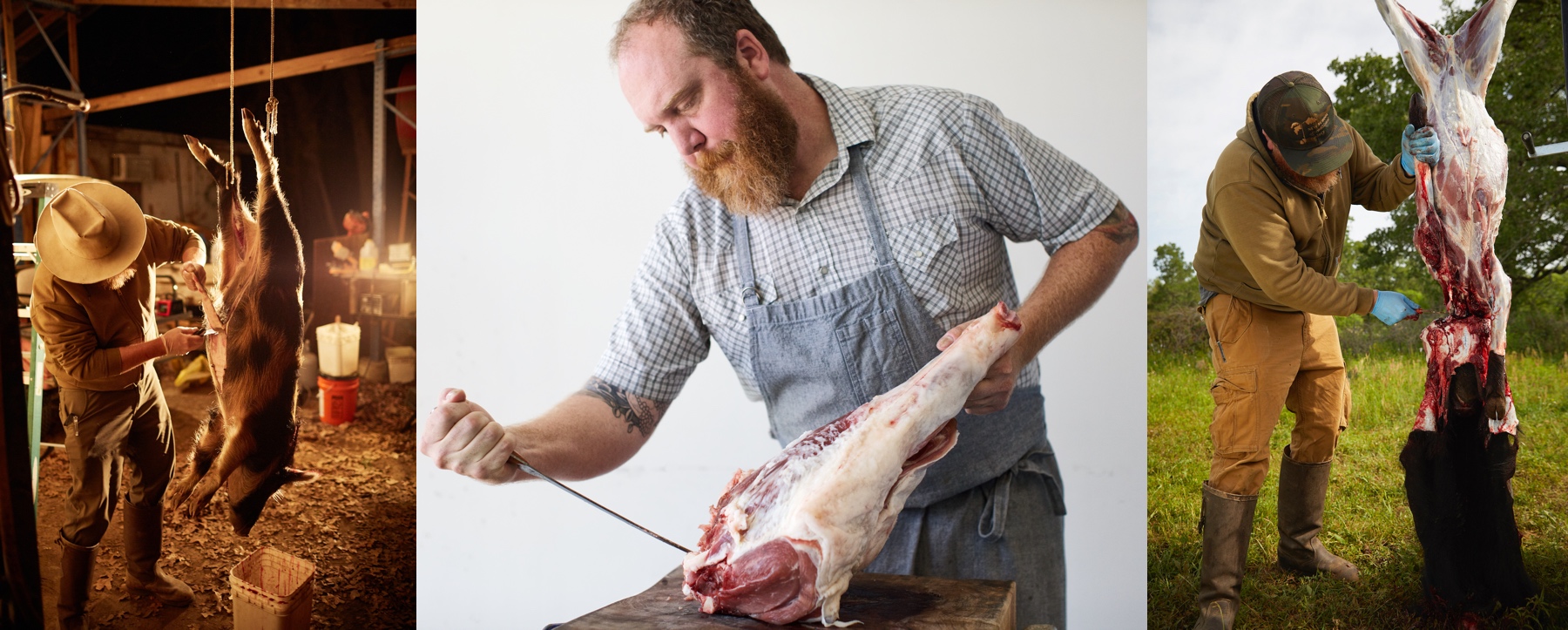
Jesse Griffiths is an Austin-based chef, author, hunter, and fisherman, and he’s also the co-owner of Dai Due Butcher Shop & Supper Club and the New School of Traditional Cookery. Jesse’s work has been featured everywhere from The New York Times to the Joe Rogan Experience, and he’s a regular contributor to Steven Rinella’s MeatEater. As an author, Jesse has received great praise for his two books, the James Beard Award-finalist cookbook, Afield: A Chef’s Guide to Preparing and Cooking Wild Game and Fish, as well as his most recent title, The Hog Book: A Chef’s Guide to Hunting, Preparing, and Cooking Wild Pigs.
Born and raised in Denton, Texas, Jesse grew up obsessed with fishing– he loved catching the fish, but he also loved cooking and eating them. As a teenager, he started working in restaurants and became more and more interested in cooking– an interest that he pursued full-time after graduating from high school. Propelled by a deep curiosity and a desire to broaden his perspective, he would save up his money and then travel, studying food and cooking in a wide variety of cultures around the world. Eventually, Jesse combined all of his unique personal and professional experiences and opened his own restaurant, Dia Due, which features food that is “produced in a fair and equitable way, represent(s) local culinary traditions, and support(s) farmers and ranchers who are striving to improve the quality of our food.”
I’ve been a fan of Jesse’s work for many years, so I was thrilled when we were introduced by a mutual friend. Over the course of our hour together, we covered a lot, include: Jesse’s upbringing in Texas and his early days in cooking, the importance of international travel, the challenges of getting Dai Due off the ground, the importance of humility and curiosity, a deep dive into wild hogs in Texas, his approach to writing, Jesse’s recent obsession with wild turkeys, and, of course, Jesse offers a ton of great book recommendations.
I loved this conversation and was blown away by Jesse’s kindness and humility. I really appreciate his taking the time to chat with me, and I know you’ll learn a lot from Jesse’s fascinating life story. Enjoy!
Photos by Jody Horton for The Hog Book
LISTEN & DOWNLOAD:
Apple Podcasts
Spotify
Google Podcasts
… or wherever you get your podcasts!
—
RESOURCES:
Topics Discussed:
- 3:15 – Jesse’s upbringing
- 7:30 – How Jesse got involved in cooking
- 12:15 – When Jesse first left the USA
- 13:30 – The importance of international travel
- 16:45 – Jesse’s mentors
- 24:15 – Getting Dai Due started
- 27:15 – How Jesse learned to be a manager
- 31:15 – The source of Jesse’s humility
- 36:15 – Jesse’s work with Texas wild hogs
- 50:15 – Jesse’s ethos in writing
- 51:30 – Jesse’s recent work with turkeys
- 1:01:15 – Jesse’s book recommendations
Information Referenced:
- Jesse Griffiths
- Dai Due
- New School of Traditional Cookery
- Texas Chapter of the Wildlife Society
- The Hog Book by Jesse Griffiths
- Afield by Jesse Griffiths
- Ed’s live event in Texas
- Romey Swanson
- Ed’s first elk hunt
- Dallas- Fort Worth metroplex
- Denton, TX
- Crappie
- Hanger Steak
- Venice
- Radicchio
- Dai Due on Bon Appetit
- Jesse on Joe Rogan
- Texas wild hogs
- Kevin Harlander
- First Lite
- National Wild Turkey Federation
- Ben O’Brien
- White-tailed deer
- Dove hunting in Texas
- White Bass
- The River Cottage Meat Book by Hugh Fearnley-Whittingstall
- Emeril Lagasse
- Julia Child
- American Sfoglino by Evan Funke
- Nate Schweber
- This America of Ours by Nate Schweber
- Bernard DeVoto
- Avis DeVoto
- Olympia Provisions by Elias Cairo
Enjoy this episode? Then you might like these too:
- Cole Mannix – Building Community through Land Stewardship and Local Food
- Land Tawney – Energetic & Optimistic
- Dylan Tomine – Protecting What He Loves
- Alvin Dedeaux – Living His Dream
- Reflections On My First Elk Hunt, with Adam Gall
- Hal Herring – A Man of Words & Wild Places
- Mark Kenyon – A Passion for Public Lands
- Kate Kavanaugh – Regeneration & Restoration
Visit the podcast page for a full, searchable list of episodes
Christian Beckwith, Part 2 – The Fascinating History of the 10th Mountain Division
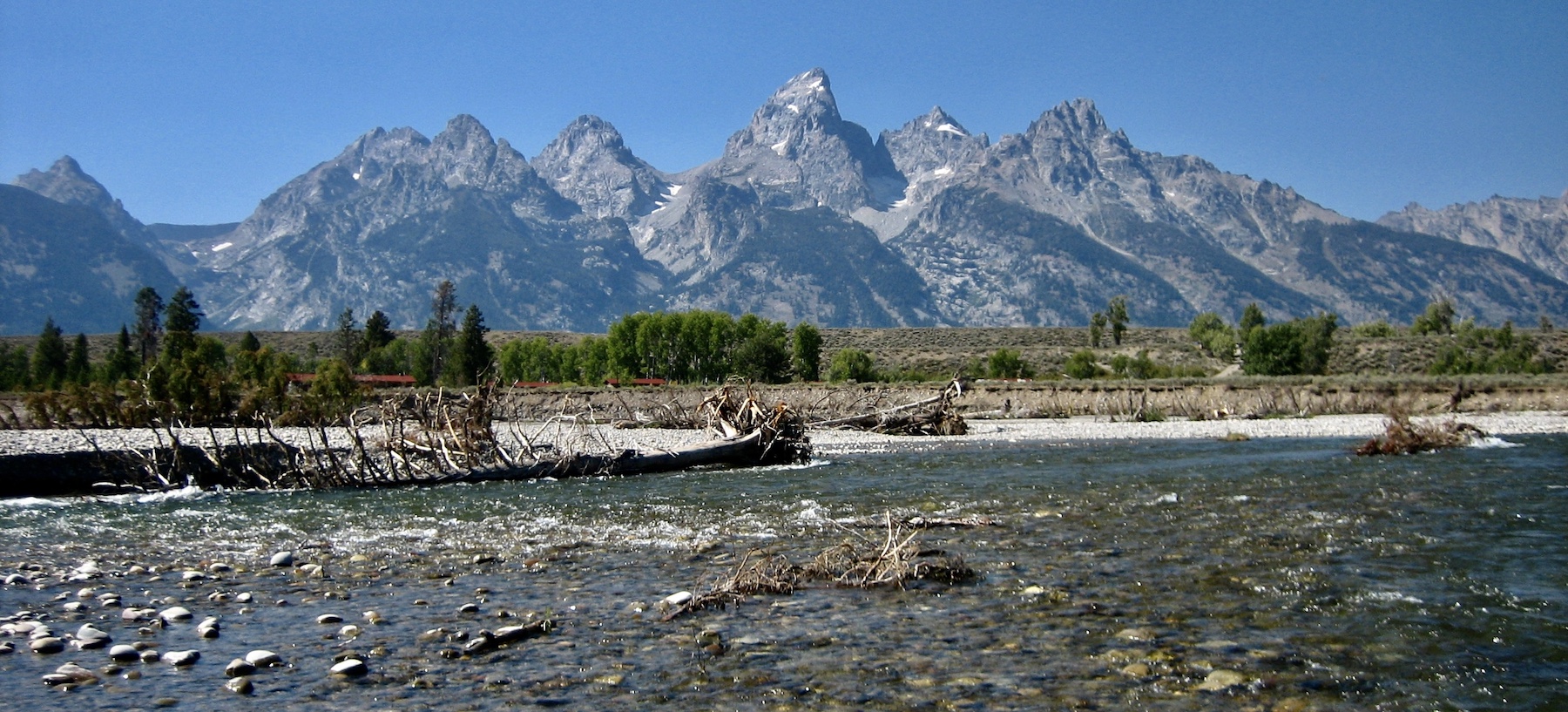
For today’s conversation, I was thrilled to chat once again with Christian Beckwith, a Jackson, Wyoming-based writer, historian, conservationist, and entrepreneur. Christian’s latest project is “Ninety-Pound Rucksack: A podcast about the US Army’s 10th Mountain Division and the dawn of outdoor recreation in America.”
If you enjoy spending time up high in the mountains here in the American West, then you’ve surely heard at least a passing mention of the 10th Mountain Division. It’s nearly impossible to travel up and down the I-70 corridor here in Colorado without seeing a few references to the 10th. But if you’re like me, you probably do not have a sufficient appreciation for the exciting story of how and why the division was formed, and how its creation set the trajectory for climbing, skiing, and recreational outdoor adventure for decades to come.
Whether you’re a climber, skier, or simply a history buff who enjoys diving into untold stories from pivotal moments in our past, then I highly recommend Ninety-Pound Rucksack. The podcast starts out exploring the 1939 Russian invasion of Finland, and how, despite being outmatched on nearly every level, the Fins were able to put up a heroic fight thanks to their ability to efficiently maneuver through cold, snowy, rugged terrain on skis. The story then shifts to America, where a small group of young mountaineers and skiers recognized the importance of mountain warfare and began to lobby the government to focus on this unconventional approach to battle. I won’t give any more details away, but the podcast is just the kind of history I love: big adventures, one-of-a-kind characters, and people driven by causes larger than themselves.
To learn more about Christian’s personal background, I’d encourage you to go back and listen to our first conversation from many years ago. Because in this one, we talk all history, all the time– from the backstory of the 10th, to the adventurous young men who dreamed it up, to how that time period affects us still today. Toward the end of the conversation, Christian offers up some valuable wisdom on the need to be tenacious in all creative and entrepreneurial endeavors, and he also has some really great book recommendations.
Follow the links in the episode notes to listen to Ninety-Pound Rucksack, and please pass the podcast along to any of your history-loving friends. A big thanks to Christian for working so hard to create this podcast and for joining me for another conversation. Hope you enjoy!
Headshot by David Stubbs
LISTEN & DOWNLOAD:
Apple Podcasts
Spotify
Google Podcasts
… or wherever you get your podcasts!
—
RESOURCES:
Topics Discussed:
- 3:15 – An overview of Christan’s background
- 13:15 – How the 10th Mountain Division was established
- 26:15 – How the 10th Mountain Division impacted the development of skiing in the US
- 32:15 – How digging into the history of the 10th impacted Christian’s thinking about the present
- 40:45 – Discussing Christian’s code switch from adventure writing to engaging history writing
- 45:15 – The podcast’s advisory council
- 50:15 – Christian’s advice for people who have an idea but feel they are not qualified to pursue it
- 54:45 – Discussing Christian’s tenacity
- 57:00 – What can we do to help get the word out about Christian’s work
- 1:00:00 – Christian’s book recommendations
Information Referenced:
- Christian Beckwith
- Chrsitan’s podcast, Ninety-Pound Rucksack
- Teton Range
- Yvon Chouinard
- Teton Boulder Park
- Snow King Mountain
- Jackson, WY
- Teton Climbers’ Coalition
- Climbing Area Modernization Project
- Joe Stettner
- Paul Stetner
- 10th Mountain Division
- Riva Ridge Operation
- Gothic Line
- John A. McCown II
- Grove McCown
- Camp Hale
- Russian invasion of Finland, the Winter War
- Charles Minot “Minnie” Dole
- National Ski Patrol System
- Roger Langley
- National Ski Association
- Alec Bright
- Robert Livermoore
- Bromley Mountain
- Champlain Valley
- US War Department
- American Alpine Club
- American Alpine Journal
- The American Alpine Journal 1946 edition
- H. Adams Carter
- Bob Bates
- Harvard Mountaineering Club
- Yukon
- Himalya
- General George C. Marshall
- Henry Stimson
- Dolomites
- Julian Alps
- Johann “Hannes” Schneider
- Arlberg technique
- Boston and Maine Ski Train
- Downhill ski racing
- Slalom ski racing
- Appalachian Mountain Club
- The Mountaineers
- Mazamas
- Colorado Mountain Club
- Molotov Cocktail
- Leslie McNair
- Henry Ford
- Narvik, Norway
- Narvik Netflix show
- Albania
- Italy’s invasion of Greece, the Greco-Italian War
- Rolf Monsen
- Harald Sorensen
- Hampton Sides
- Blood and Thunder by Hampton Sides
- On Desperate Ground by Hampton Sides
- The Last Ridge by McKay Jenkins
- Chris Juergens
- History Colorado
- Jeff Leich
- New England Ski Museum
- David Little
- Sepp Scanlin
- 10th Mountain Division and Fort Drum Museum
- Denver Public Library
- Keli Schmid
- Doug Schmidt
- National Association of the 10th Mountain Division
- Lance Blyth
- NORAD
- 10th Mountain Division Foundation
- Outside Magazine
- Navajo Nation
- Sebastian Junger
- Unbroken by Laura Hillenbrand
- Louis Zampirini
- The Rock Warrior’s Way by Arno Ilgner
- Carlos Castaneda
Enjoy this episode? Then you might like these too:
- Douglas Brinkley – Exploring the Past to Find Inspiration for the Future
- Peter Stark – Tales of Adventure, Exploration, & Epic Battles
- Betsy Gaines Quammen – A Fascinating History of Public Lands in the West
- Elliott Woods – Stories from Dangerous Places
- Shane Doyle – Reverence for the Past, Hope for the Future
- Jason Gardner – A Life of Purpose & Service
- Hampton Sides, Part 2 – How to Tell a Damn Good Story
- David Gessner, Part 3 – A Confluence of Conservation Ideals
Visit the podcast page for a full, searchable list of episodes
Matt Moorhead & Galen Guerrero-Murphy – Grasslands Conservation on the Southern High Plains
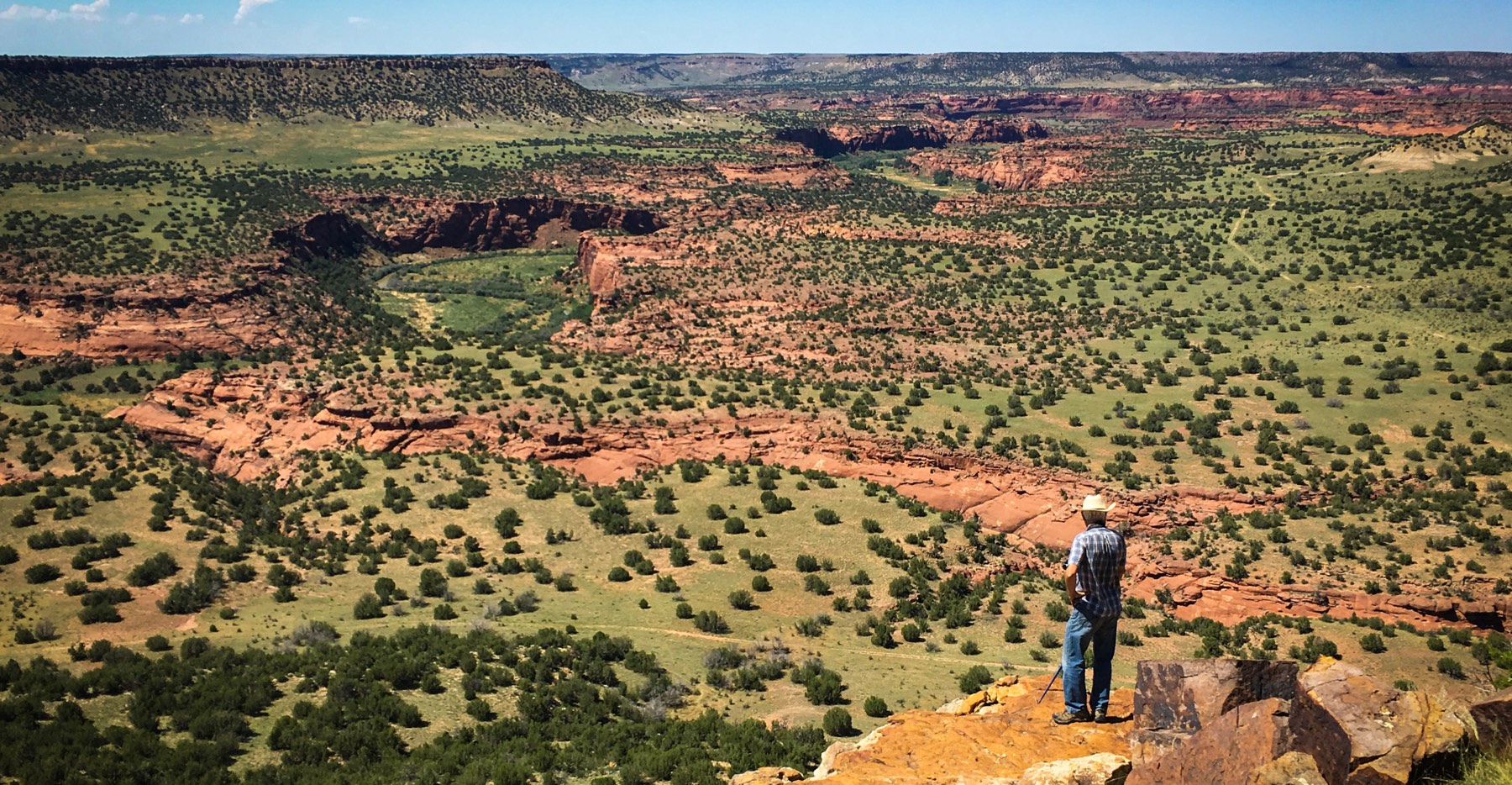
Matt Moorhead and Galen Guerrero-Murphy are conservationists who work for The Nature Conservancy on its Southern Highs Plains Initiative (SHPI), a collaboration between five states with the shared goal of protecting the nation’s grasslands. The Southern High Plains encompasses approximately 71 million acres across Colorado, Kansas, New Mexico, Oklahoma, and Texas. The region is home to some of the country’s most important grasslands, as well as the people and wildlife who depend on the invaluable shortgrass prairie ecosystem.
Officially, Matt is TNC’s Conservation Business & Partnership Development Advisor and Galen is TNC’s Land Conservation Program Manager– but at their core, they are both relationship builders. As you’ll hear in this conversation, both Matt and Galen work tirelessly to build long-term, rock-solid partnerships with landowners and conservation partners with the goal of finding win-win solutions that can be mutually beneficial for all parties. Through genuine curiosity, creative thinking, and a deep respect for landowners and their legacy, Matt and Galen have helped to implement lasting conservation outcomes in the Southern High Plains.
The three of us connected virtually and had a fascinating conversation about grasslands, ranching, buidling relationships, and purpose-driven work. We start out by defining exactly what constitutes the Southern High Plains and why this is such an important region for conservation. We then discuss why the large percentage of private ownership creates such a compelling case for conservation, the need for balancing conservation with various forms of energy development, the current markets around grasslands carbon sequestration, and the all-important role of TNC’s partners. We also discuss Matt and Galen’s mentors, how they measure conservation success, and some of their favorite books.
I’ve considered Matt and Galen to be friends and mentors for many years now, so I was grateful for the opportunity to talk with them on the podcast. Hope you enjoy.
Photos courtesy of The Nature Conservancy, header photo by Lauryn Wachs
LISTEN & DOWNLOAD:
Download on Apple Podcasts
Download on Spotify
Download on Google Podcasts
…or wherever you get your podcasts!
EPISODE PARTNER:
This episode is brought to you in partnership with the Colorado chapter of The Nature Conservancy. Guided by science and grounded by decades of collaborative partnerships, The Nature Conservancy has a long-standing legacy of achieving lasting results to create a world where nature and people thrive.
On the fourth Tuesday of every month throughout 2023, Mountain & Prairie will be delving into conversations with a wide range of The Nature Conservancy’s leaders, partners, collaborators, and stakeholders, highlighting the myriad of conservation challenges, opportunities, and solutions here in the American West. You can access all of the 2023 episodes here.
To learn more about The Nature Conservancy’s impactful work in Colorado and around the world, visit www.nature.org/colorado
RESOURCES:
Topics Discussed:
- 3:10 – Introductions
- 6:25 – What are the Southern High Plains
- 9:55 – Why the Southern High Plains are so critical in conservation
- 16:10 – How the patchwork of private lands in the Southern High Plains allows Matt and Galen to be effective in their conservation work
- 20:55 – The process of building relationships in private lands conservation work
- 29:10 – Balancing the potential for landowners to earn revenue through energy development with the interest in conserving landscapes
- 35:10 – Where things stand on grassland carbon sequestration as a method of generating both landowner revenue as well as conservation outcomes
- 39:10 – The importance and skills of TNC’s partners
- 43:10 – Matt and Galen’s mentors
- 50:10 – What progress on the Southern High Plains Initiative would make Matt and Galen happy in 10-15 years
- 53:40 – Matt and Galen’s book recommendations
Information Referenced:
- The Nature Conservancy, Colorado Chapter
- Matt Moorhead
- Galen Guerrero-Muphy
- Theodore Roosevelt
- Southern High Plains Initiative
- Colorado Cattlemen’s Association
- JE Canyon Ranch
- Arkansas River
- Canadian River
- Sangre de Cristo Mountains
- Santa Fe Trail
- American Serengeti by Dan Flores
- Roaring Fork Valley
- Spanish Land Grants
- Chris Pague
- Dust Bowl
- Colonial Conservation
- TRC Companies
- Pueblo, CO
- UC Davis study – Grasslands More Reliable Carbon Sink Than Trees
- David Smith
- Steve Massey
- John Ehrenfeld
- Palmer Land Conservancy
- Pueblo, Colorado
- The Complete Far Side by Gary Larson
- Celebrating Peanuts: 65 Years by Charles Schultz
- Guns, Germs, and Steel by Jared Diamond
- The Dawn of Everything by David Graeber
- Confessions of an Economic Hitman by John Perkins
- The Tree of Knowledge by Humberto R. Maturana and Francisco J. Varela
- This is Your Mind on Plants by Michael Pollan
- Braiding Sweetgrass by Robin Wall Kimmerer
- Saving Us by Katherine Hayhoe
Enjoy this episode? Then you might like these too:
- Cole Mannix – Building Community through Land Stewardship and Local Food
- Francesca Claverie – A Borderlands Conservation Success Story
- Kate Mannix – A Legacy of Land Stewardship
- Amber Smith – Creating Connection & Community
- Lesli Allison & Tuda Libby Crews – Durable Conservation in the West… and Beyond
- Daniela Ibarra-Howell – Healing the Land Holistically
- Russ Schnitzer – A Life Devoted to Western Landscapes
Visit the podcast page for a full list of episodes where you can filter episodes by topic and guests’ vocations.
Seven Years of Mountain & Prairie
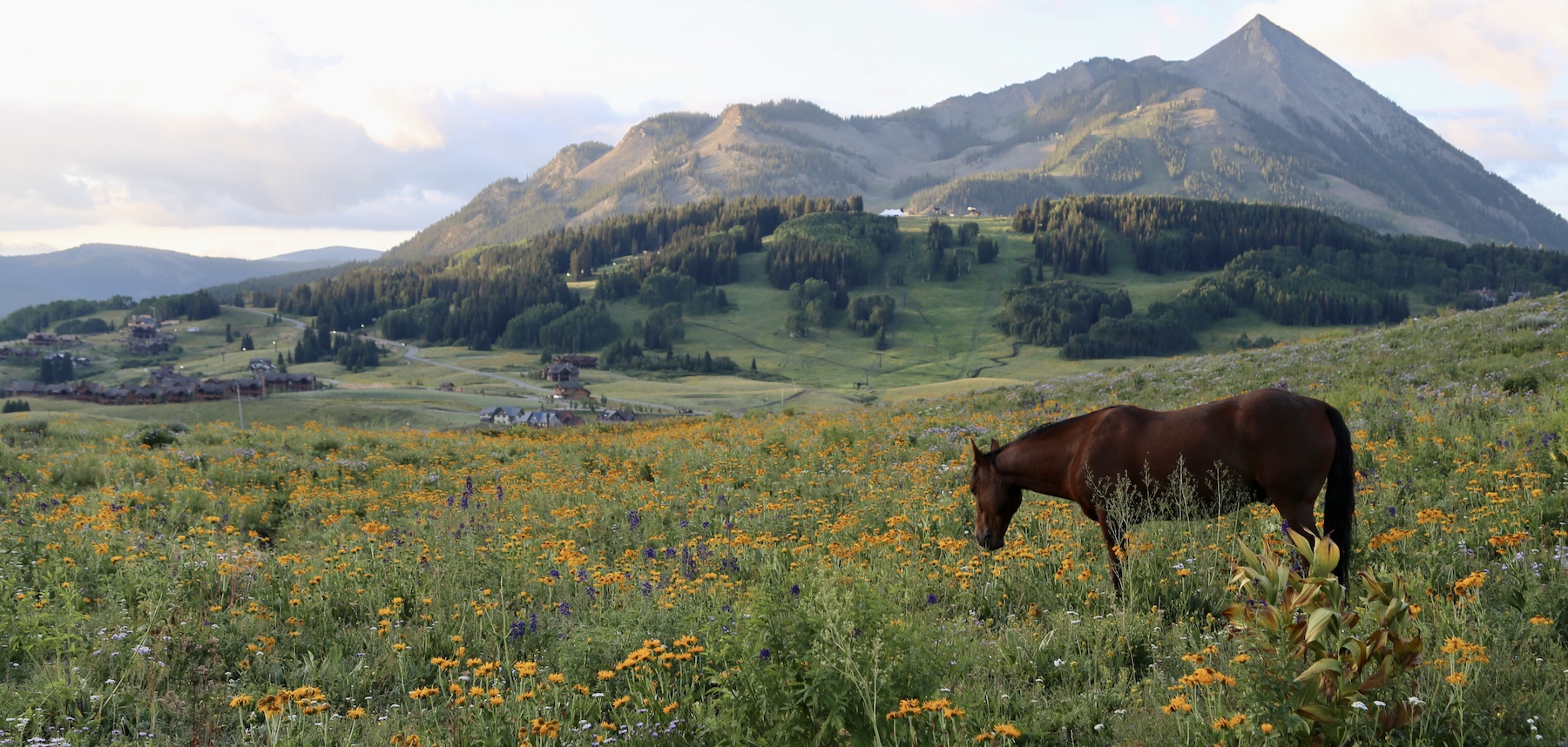
Exactly seven years ago TODAY, I hit publish on the first episode of Mountain & Prairie.
—
When I started the podcast, I had no expectation that anyone would listen.
It was just a selfish side project that allowed me to have substantive, focused conversations with people I admired and ask them deeper questions about their motivations, influences, and work– questions that would’ve been off-the-charts weird in a normal social situation.
So I went to Best Buy, bought the cheapest mic they had, plugged it into my laptop, and sat down with my friend and mentor Erik Glenn of the Colorado Cattlemen’s Agricultural Land Trust, who already knew I was a weirdo and patiently answered my questions.
That was Episode 1.
Then I did it again and again and again, every other week, for many years.
For a long time, very few people (other than my mom and dad) listened. But again, it was a selfish project that was improving my life, so I didn’t care.
But at some point, I realized that a lot more people were listening, and that they too were gleaning value from the conversations with all the amazing guests. 🤯🤯🤯
And now here we are—I’m still having oddly intense conversations with friends and colleagues, and, amazingly, I now get to sit down and talk with some of my heroes who I’ve admired from afar for decades. And I’m still learning from each conversation, as are many of you.
The whole thing is just crazy, in the best possible way. (Remember, if things had gone according to plan, I’d be a stockbroker.)
A sincere THANK YOU to all of the guests who have taken the time to talk with me and share their wisdom. Whether they know it or not, many, many people have gleaned great value from their stories.
Another sincere THANK YOU to everyone who listens. I am a complete maniac when it comes to protecting my time/attention and I assume y’all are too, so it’s a great honor that you devote hours of your time to M&P.
And a HUGE thank you to all of the various financial supporters– Patreon and individual supporters, episode partners, trip & retreat participants, show attendees, organizations that have hired me to speak/host, etc. I would’ve never expected this thing to be my job, but it is, and your support is invaluable.
Here are a few photos from a summer morning in Crested Butte– the morning I snapped the pic that ended up being the podcast’s thumbnail image.









Thank you, thank you! Here’s to the next seven years!
Walt Morgan – Helping People Discover Their Best Selves
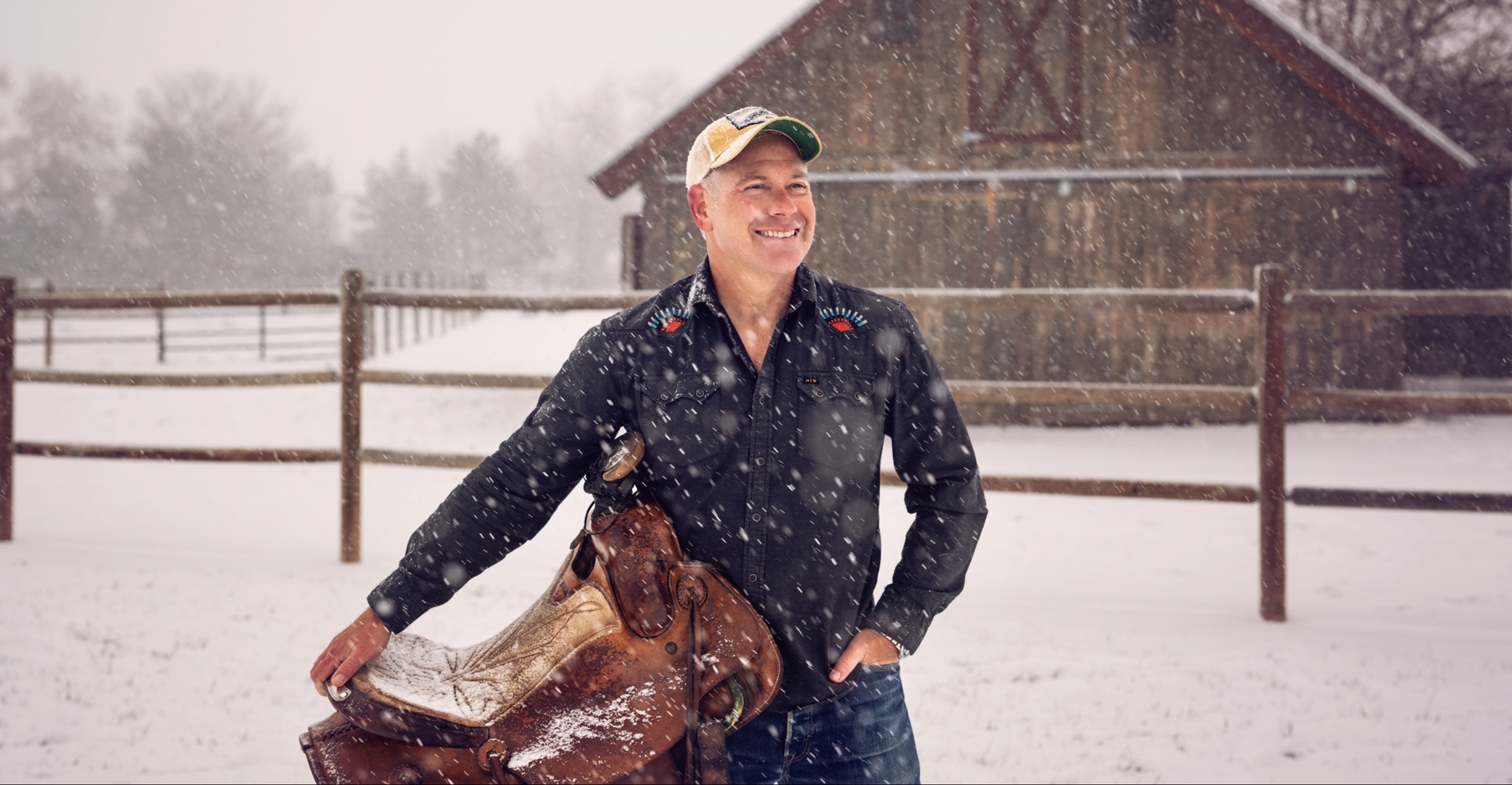
Walt Morgan is a retired Navy Commander and Navy helicopter pilot, and he’s also the founder of Translational Lift Coaching, where he works with individuals and teams to help them reach their full potential. Walt’s wide-ranging background as a leader, teacher, student, and parent gives him a unique approach to helping people identify what they are doing well, what they could be doing better, and how to make subtle-yet-powerful adjustments that can lead to lasting change.
Walt grew up in rural Oregon, where agriculture and working lands were an important part of his upbringing. He attended college on a military scholarship, graduated, and began flying helicopters for the Navy. After 23 rewarding years of service, Walt retired from the Navy and made his way into corporate America, where he quickly discovered his talent and passion for coaching. Today, Walt has combined his innate skills as a coach with his deep desire to help people, and he’s created a meaningful second act to his already impressive career.
I have had the great fortune of being coached by Walt for many years now, and I credit him and his guidance with helping me to identify the beliefs and ideas that are serving me well and to discard those that created friction. As you’ll hear in this conversation, several of the insights I gained from Walt’s coaching are what led me to leave the real estate business and fully focus on the purpose-driven work of conservation and this podcast. While I generally avoid blabbing about myself in these conversations, I feel that my personal experience with Walt speaks to the power of the work he does on a daily basis with many, many people.
Walt and I sat down at my dining room table and had a fun conversation about his life and career, including: Walt’s upbringing in rural Oregon; his decision to join the military; lessons learned from helicopters, deployments, and decades of service; his experience on the morning of 9/11 and his work in the aftermath; discovering his love of teaching; harnessing youthful wild energy into something productive; becoming a coach; the difference between coaching and therapy; the Enneagram and Integral Coaching methodology; favorite books and music; and much more.
A big thanks to Walt for taking the time to chat and for his guidance over the years. You can find links to everything Walt is doing in the episode notes, so be sure to click through. Hope you enjoy.
Photos courtesy of Walt Morgan, Header photo by D’Ann Boal
LISTEN & DOWNLOAD:
Apple Podcasts
Spotify
Google Podcasts
… or wherever you get your podcasts!
—
RESOURCES:
Topics Discussed:
- 3:30 – How a saddle made it into Walt’s living room (a look into his upbringing)
- 8:300 – Walt’s journey in college
- 10:00 – Discussing Walt’s hometown of Yoncalla, OR, and the remarkable people connected to it
- 13:45 – Why Walt became involved in the military
- 15:30 – Walt’s character pivot from his 19-year-old self to now
- 18:30 – When Walt started at the US Navy post-graduate school
- 19:15 – Discussing when flying helicopters became a dream of Walt’s
- 21:45 – Whether or not flight school was a means for Walt to channel the negative experiences he was having in his personal life into something productive
- 23:45 – Describing Walt’s missions with helicopters
- 28:15 – Where Walt was on 9/11
- 31:00 – Walt’s deployments following 9/11
- 34:45 – Walt’s spiritual and emotional journey in corporate America, and starting his own business
- 42:15 – People’s reactions (including Ed’s) to receiving the kind of coaching Walt provides
- 48:15 – Defining Integral Coaching and the process that Ed has specifically worked through with Walt
- 53:30 – The difference between Integral Coaching and therapy
- 56:45 – Exploring the Integral Coaching methodology further, and discussing success stories in Walt’s work
- 1:05:15 – Why this coaching strategy is not widespread
- 1:08:00 – How folks can work with Walt
- 1:13:45 – Walt’s book and music recommendations
Information Referenced:
- Walt Morgan
- Walt on LinkedIn
- Coronado, San Diego
- Bonita, CA
- California Polytechnic State University, San Luis Obispo
- Yosemite National Park
- Madonna Inn
- San Luis Obispo, CA
- Santa Cruz, CA
- Lompoc, CA
- Santa Maria Valley
- Team Roping
- Future Farmers of America
- University of Colorado, Boulder
- University of Purdue
- University of North Carolina at Chapel Hill
- Pepperdine University
- Less Than Zero
- Yoncalla, OR
- Church of the Brethren
- Martin Luther King Jr.
- Jesse Jackson
- Dr. Lydia Emery
- Warrant Officer, Marines
- Applegate Ranch
- Shannon Applegate
- Skookum by Shannon Applegate
- Rex Applegate
- Kill or Get Killed by Rex Applegate
- Living Among Headstones by Shannon Applegate
- West Lafayette, IN
- Reserve Officers’ Training Corps (ROTC)
- Ensign, Navy
- Pensacola, FL
- T-34 fixed wing aircraft
- Forrest Gump
- Huey Helicopter
- Guam
- Persian Gulf
- Vertical replenishment
- Video of Walt’s flying
- Top Gun: Maverick
- MH60 Sierra Helicopter
- Kinetic engagement
- War by Sebastian Junger
- Davita Healthcare
- Integral Coaching
- Enneagram
- Tim Ferris
- Ken Wilbur
- Integral Theory
- Laura Devine and Joanna Hunt
- Ivan Doig
- William Kitridge
- The Body by Bill Bryson
- A Short History of Nearly Everything by Bill Bryson
- Sapiens by Yuval Noah Herari
- 21 Lessons for the 21st Century by Yuval Noah Herari
- Circe by Madeline Miller
- Barbara Kingsolver
- John Irving
- Linda Ronstadt
- “Willin’” performed by Linda Rhonstat
- Lowell George
- Tyler Childers
- Sturgill Simpson
- Zoe Muth
- Lillie Mae
- Belinda Carlisle
- Emmylou Harris
- Dolly Parton
- Kaitlin Butts
Enjoy this episode? Then you might like these too:
- Dr. Eric Arzubi – A New Approach to Solving the West’s Mental Health Crisis
- Elliott Woods – Stories from Dangerous Places
- Jason Gardner – A Life of Purpose & Service
- Iris Gardner – Living with Intention
- George Hodgin – Mission-Driven Entrepreneur
- Juanita Vero, Part 2 – A Deep Desire to Serve
- Yemi Mobolade – Community Builder
Visit the podcast page for a full, searchable list of episodes
Kathie Sever – Chainstitching, Craftsmanship, and Cosmic Western Wear
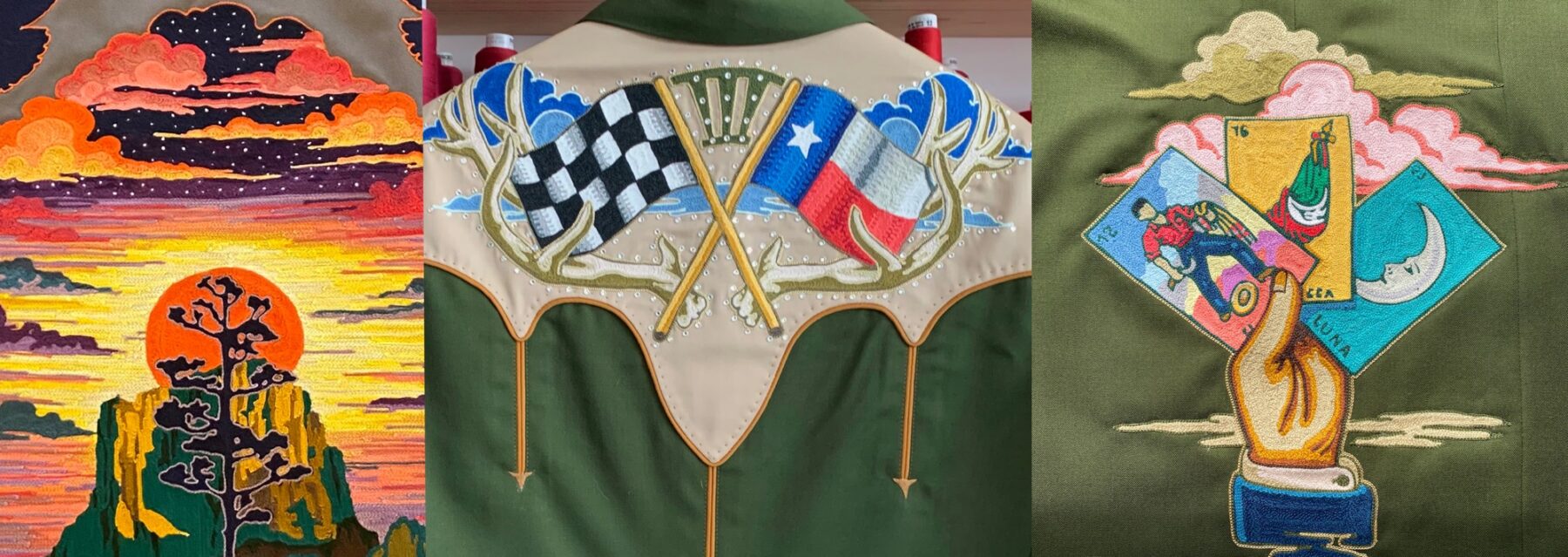
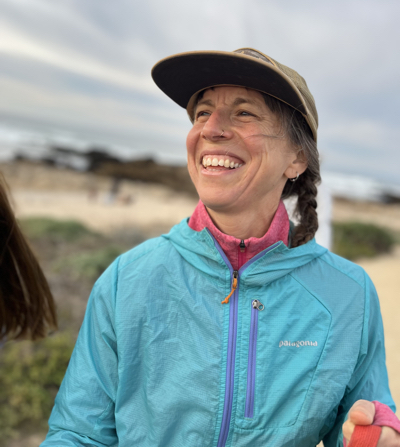
Kathie Sever is an artist, designer, and the founder of Fort Lonesome, an Austin-based company that creates one-of-a-kind, hand-cranked, chain-stitched western wear. What started with Kathie hand-embroidering garments for friends out of her home has transformed over the years into a globally known fashion brand that is worn by well-known personalities such as Matthew McConaughey and singer-songwriter Nikki Lane. Using decades-old chain stitching machines, Kathie and her team create some of the most intricate and rich designs imaginable, and Fort Lonesome has been credited with the resurgence of Western wear’s popularity in fashion circles around the world.
Kathie was born, raised, and educated in California, but soon after graduating from art school, she took off for Montana, where she worked at a dude ranch. She worked at the ranch off and on for several years, and she took note of how the ranchers brought creativity, craftsmanship, and an artist’s eye to so many of their tasks– from welding to sewing to leatherwork. Kathie loved the idea of functional art, and she has since made a career of combining handcrafted artistry with pragmatic design. And now, as the head of Fort Lonesome, she and her team continue to innovate and push the boundaries of functional art with Fort Lonesome’s unique brand of what they call Cosmic Western wear.
I loved this conversation with Kathie and could’ve talked with her for many more hours. We covered a lot, including Kathie’s upbringing in California and how her family affected her artistic trajectory; her experience in Montana and how it laid the foundation for Fort Lonesome; her work as a pastry chef and the challenges of working in the restaurant scene of the 1990s; the power that can come as a result of negative experiences; her growth and evolution as a manager and business owner; how parenthood affected her goals; the pros and cons of working with famous people; the nervous feelings that come with creating art; our shared Enneagram personality profiles; favorite books; and much, much more.
Whether you’re interested in art, fashion, the creative process, entrepreneurship, or balancing a career with the demands of parenthood, you’ll glean a lot of value from this conversation. A huge thank you to Kathie for the conversation, and thank you for listening.
Photos courtesy of Kathie Sever & Fort Lonesome
LISTEN & DOWNLOAD:
Apple Podcasts
Spotify
Google Podcasts
… or wherever you get your podcasts!
—
RESOURCES:
Topics Discussed:
- 3:15 – How Kathie’s childhood led her to a career in art
- 9:00 – Kathie’s goals as she went into art school
- 10:00 – How Kathie ended up in Montana
- 13:30 – Kathie’s takeaways from her time in Montana
- 15:45 – When Kathie started to recognize Western wear as a creative outlet
- 18:30 – Kathie’s next steps after working at a ranch in Montana
- 20:15 – When pastry making came into the equation, and exploring the connection between pastry making and art
- 23:30 – Kathie’s time in Austin and the misogyny she experienced in the restaurant scene in the late 90s
- 29:00 – Exploring the motivational power of negative experiences
- 32:00 – How having a kid impacted Kathie and how it lead to her work with clothing
- 37:45 – Kathie’s journey in figuring out the business side of making clothes
- 43:45 – When Kathie realized she was onto a good business idea, and how she balanced managing a small business from home while raising kids
- 1:00:00 – How oil painting impacted Kathie’s embroidery work
- 1:03:45 – The first time a celebrity reached out for one of Kathie’s pieces
- 1:07:15 – How Kathie balances her vision for her art with that of her clients when making clothes for performers
- 1:11:00 – Whether or not Kathie still feels nervous about putting her art into the world
- 1:18:30 – Kathie’s vision for Fort Lonesome in the next 5-7 years
- 1:22:15 – Kathie’s book recommendations
Information Referenced:
- Fort Lonesome
- Videos of Kathie working
- Darkroom
- Monterey Peninsula
- Pacific Grove, CA
- Carmel, CA
- Big Sur, CA
- Brett Weston
- Ansel Adams
- Yosemite National Park
- Friends of Photography
- Sierra Club
- McLeod, MT
- Livingston, MT
- Big Timber, MT
- A River Runs Through It
- Thomas McGuane
- Jimmy Buffett
- Mile Marker Zero by William McKeen
- Jim Harrison
- Hunter S. Thompson
- Austin, TX
- Rockabilly
- Grunge
- Humboldt State University
- School of the Museum of Fine Arts, Boston
- Nancy Silverton
- University of Texas
- The Baby Book by William Sears
- Yoke
- Piping
- Embroidery
- Austin Craft Mafia
- Crochet
- Sublime Stitching
- Jenny Hart
- Chain Stitch embroidery
- Richard Linklater
- Ethan Hawke
- Matthew McConaughey
- Nikki Lane
- Jenny Lewis
- Enneagram
- Seth Godin
- Rick Wittenbraker
- Howler Brothers
- Carl Jung
- Hamnet by Maggie O’Farrell
- The High Sierra: A Love Story by Kim Stanely Robinson
- The Martian by Andy Weir
Enjoy this episode? Then you might like these too:
- Cate Havstad-Casad, Part 2 – Building Businesses for the Greater Good
- Jess Mudgett – Humble & Grateful
- Christian Beamish – West Coast Craftsman
- Frances Ashforth – Art, Water, and Wide-Open Spaces
- Riddy Arman – Artistic Authenticity
- Kelsey Johnson – Chasing Her Artistic Ambitions
- Anna Brones – Committed to Creativity
- Live in Bozeman!
Visit the podcast page for a full, searchable list of episodes
Landscape-Scale Management in a Private Land State
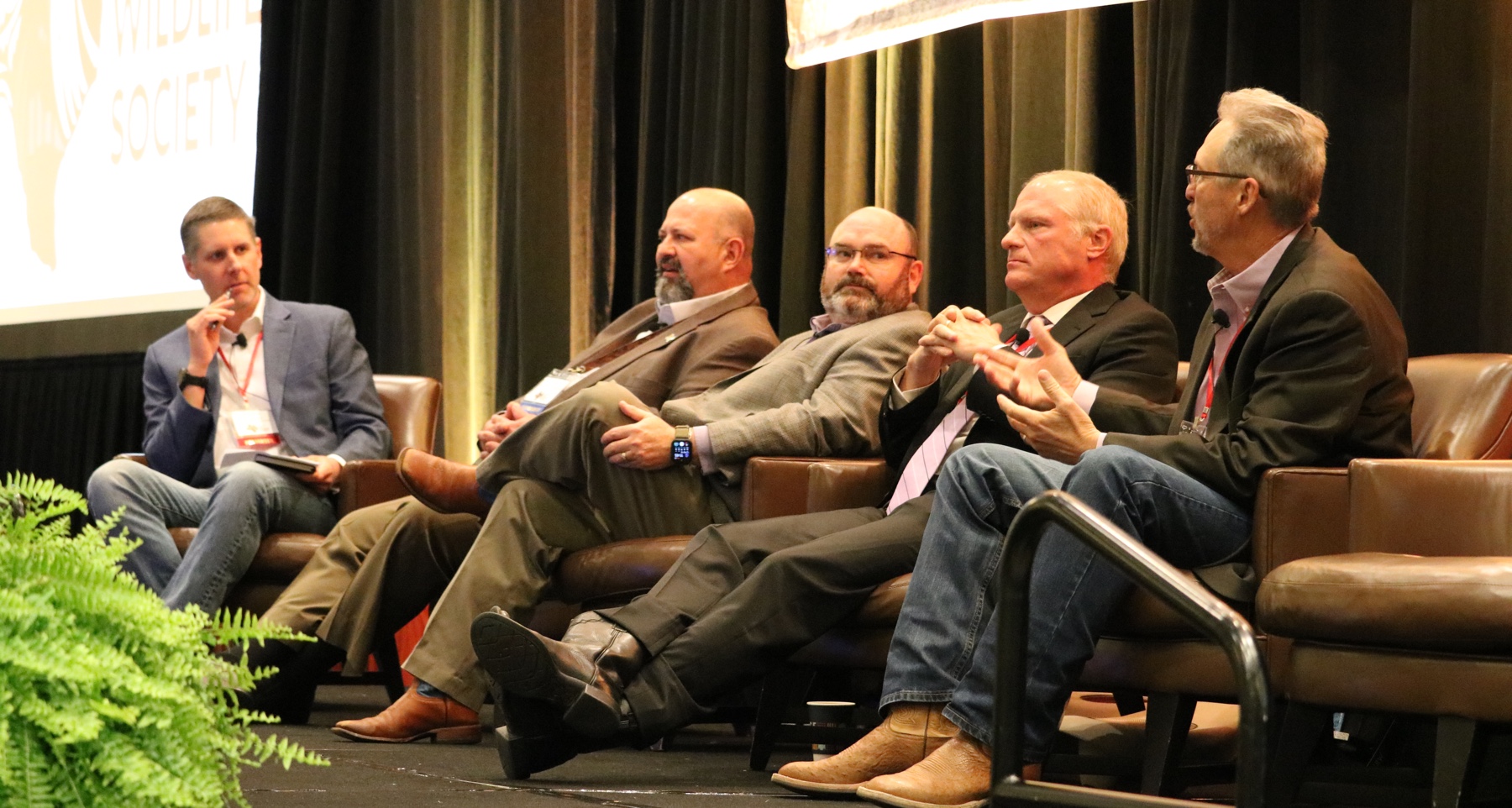
This is the second of two live episodes that were recorded at the Texas Chapter of The Wildlife Society’s 2023 annual meeting in Houston, Texas. The topic of this panel discussion was Achieving Landscape-Scale Management in a Private Land State. As you learned in the previous episode, Texas has very little public land compared to other western states, so large-landscape conservation in Texas brings with it a number of extremely unique challenges and opportunities. In this conversation, we heard from four of Texas’s most respected conservation leaders– individuals who are finding ways to achieve ambitious conservation goals using their own unique skillsets and approaches.
I was joined on stage in front of an audience of nearly 600 people by Roel Lopez, Director of the Texas A&M Natural Resources Institute; Chad Ellis, CEO of the Texas Agricultural Land Trust; Terry Anderson, co-founder of Conservation Equity Management and Conservation Equity Partners; and Billy Tarrant, Associate Director of Stewardship Services at Borderlands Research Institute. You can check out the episode notes for more information on each of the panelists and links to their respective bios and organizations.
As you’ll hear in the conversation, there are a wide range of innovative approaches and tools– from academic to non-profit to market-based– that are allowing Texas to be a trailblazer in private lands conservation in the United States. So we had a lot to cover in this hour-long session, including: The evolution and use of conservation easements, the importance of building solid relationships with landowners, new conservation tools on the horizon, how Texas has exported is private lands conservation tools to other states, data around population growth in Texas, advice for you and aspiring conservationists, and a long list of books, podcasts, and resources that have influenced these conservation leaders.
And just before this conversation, each of the panelists did a brief presentation that summarized all of the important work they are doing in Texas. If you’d like to listen to those talks and access their Powerpoint presentations, follow this link. However, you don’t need to listen to those presentations to get full value out of this episode– but they are there if you want to go a little deeper.
If you’re interested in conservation and learning from impressive individuals who have devoted their lives to land, stewardship, and conservation, then I know you’ll enjoy this episode. Once again, thanks to John Kinsey and the Texas Chapter of The Wildlife Society for inviting me down to Houston and for giving me the opportunity to have these meaningful conversations. Enjoy!
Photos courtesy of The Texas Chapter of The Wildlife Society
LISTEN & DOWNLOAD:
Apple Podcasts
Spotify
Google Podcasts
… or wherever you get your podcasts!
—
RESOURCES:
Topics Discussed:
- 3:00 – Introduction
- 5:00 – Discussing the Conservation Easement as a tool, and how it has evolved
- 10:30 – The importance of relationships in this work
- 13:30 – What new tools do we need in private lands conservation
- 22:00 – Discussing the private lands conservation strategies that Texas has been able to export to other states
- 27:15 – Whether or not the experts predicted the population numbers and growth that Texas is seeing today
- 29:45 – Advice for young professionals who want to become better storytellers
- 40:30 – The importance of building relationships with politicians for conservation work
- 53:00 – Books, podcasts, heroes, and other resources that have influenced the panelists
- 56:30 – Where the panelists find hope and motivation
Information Referenced:
- Texas Chapter of The Wildlife Society
- Roel Lopez
- Chad Ellis
- Billy Tarrant
- Terry Anderson
- Blair Fitzsimons
- Texas Agricultural Land Trust (TALT)
- Mitigation banking
- Ecosystem service markets
- The Nature Conservancy
- Colorado Cattlemen’s Agricultural Land Trust
- Republic Ranch magazine article about Terry
- Fault lines
- North Texas Water Municipal District
- Edwards Aquifer Protection Program
- Carter Smith
- The Partnership of Rangeland Trusts (PORT)
- Recovery Credit System
- Gopher Tortoise
- Dune Sagebrush Lizard Texas Conservation Plan
- Ocelots
- Marathon, TX
- How to Speed Read People by Liam Robinson
- Black-tailed deer
- Chronic Wasting Disease
- High Fence Deer Breeding/Hunting
- Pronghorn
- Farm Bill
- Texas Wildlife Association
- ESG – Environmental social, and Corporate Governance
- Texas Department of Transportation (TexDOT)
- US Roundtable for Sustainable Beef
- Bobwhite Quail Enhancement Program
- Good to Great by Jim Collins
- The 7 Habits of Highly Effective People by Stephen R. Covey
- The California Quail by Aldo Starker Leopold
- Aldo Starker Leopold
- Energy Sprawl Solutions Joseph M. Kiesecker
- Arizona Game & Fish Department
- Texas Parks and Wildlife Department
- Alpine, TX
- Texas A&M University
Enjoy this episode? Then you might like these too:
- Dr. David Hewitt – The Science of Wildlife Conservation
- Taylor Hawes – Innovative Conservation in the Colorado River Basin
- Cole Mannix – Building Community through Land Stewardship and Local Food
- Carlos Fernández, Part 2 – Creating Conservation Opportunities During Uncertain Times
- Amber Smith – Creating Connection & Community
- Kate Mannix – A Legacy of Land Stewardship
- Lesli Allison & Tuda Libby Crews – Durable Conservation in the West… and Beyond
Visit the podcast page for a full, searchable list of episodes
Equitable Access to the Outdoors in Texas
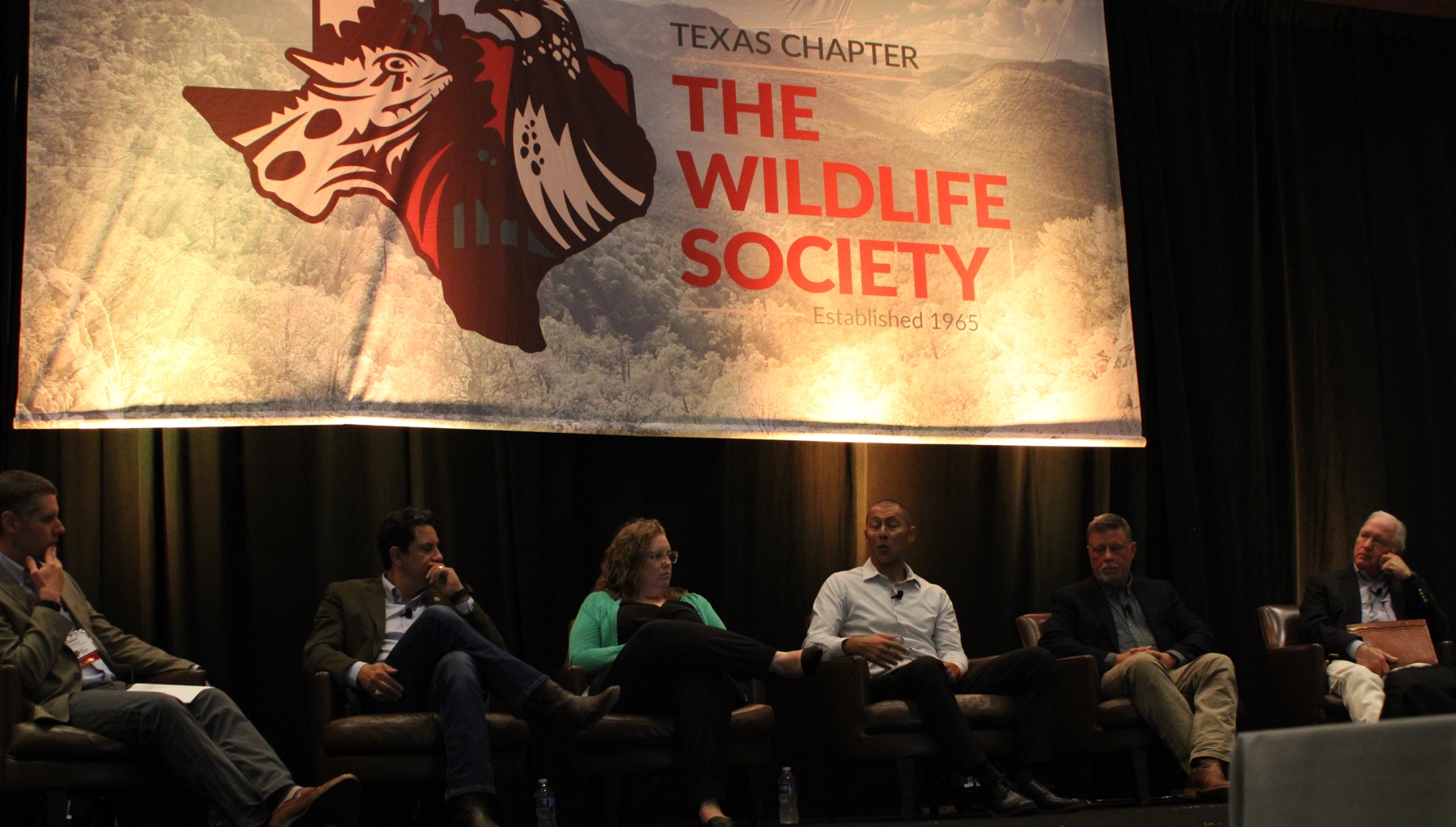
This is the first of two live episodes that were recorded at the Texas Chapter of The Wildlife Society’s 2023 annual meeting in Houston, Texas. The topic of this panel discussion was Equitable Access to the Outdoors, a subject that is timely and important in all areas of the West, but especially important in Texas, where 93% of the state’s land is privately owned. Whether your interest is outdoor recreation, public health, climate change, or public-private conservation partnerships, the ability for people to have access to parks, trails, open spaces, and wild places is becoming more and more important with each passing year.
For this conversation, I was joined on stage by five Texas conservation innovators– folks who are working hard to ensure that Texans of all stripes have ample opportunities to spend time outside– whether in the cities or in the state’s more rural areas. In order of their appearance in this conversation, we had Jaime González, Healthy Communities Director for the Nature Conservancy; Sarah Coles, Executive Director of the Texas Children in Nature Network; Immanuel Salas, Texas Parks and Wildlife’s R3 Coordinator for Hunting and Shooting Sports; Neal Wilkins, President and CEO of the East Foundation; and Joseph Fitzsimons, conservationist and owner of the San Pedro Ranch. You can check out the episode notes below for more information on each of the panelists and links to their respective bios and organizations.
I could’ve spent hours talking to each of the panelists individually, but as a group, we had a very informative and educational conversation– one that provided a different perspective from some of my past episodes that focused on equitable access. we covered a lot in this hour-long discussion, including: the importance of building thriving cities with ample parks, trails, and outdoor space; how these organizations are working to reverse some of the disheartening trends around children’s health and their access to the outdoors; the importance of collaborative partnerships, the R3 program in Texas– what it is, why it’s important, and how it is evolving; the role of private landowners in providing access opportunities; the importance of youth education; the role of government; public land in Texas; the need to engage with elected officials; favorite books; and much more.
I learned a lot from this conversation and was honored to share a stage with such an impressive group of people who are working so hard on this all-important issue. Click the link in your podcast player to access all of the notes and links from this episode– we’ve listed tons of excellent resources from this episode.
Thanks to John Kinsey and the Texas Chapter of The Wildlife Society for inviting me to host this event, and thank you for listening. Hope you enjoy!
Photos courtesy of The Texas Chapter of The Wildlife Society
LISTEN & DOWNLOAD:
Apple Podcasts
Spotify
Google Podcasts
… or wherever you get your podcasts!
—
RESOURCES:
Topics Discussed:
- 3:04 – An introduction, and then Jaime discusses his work with TNC in Houston
- 9:25 – The quantitative way that Jaime and TNC evaluate success in connecting youth with the outdoors
- 11:25 – Sarah introduces Texas Children in Nature Network
- 15:55 – Sarah explains TCINN’s partnership model
- 19:10 – Immanuel discusses the R3 program and its importance
- 26:40 – Neil introduces the East Foundation
- 30:55 – How the East Foundation’s educational programs have shifted over time
- 32:10 – How Joe became involved in public lands conservation work through the Texas Parks and Wildlife Commission
- 38:55 – The panelists’ experience in dealing with politics and elected officials
- 46:40 – The panelists discuss the importance of storytelling
- 58:40 – Panelists’ suggestions for books, podcasts, resources to access, etc
Information Referenced:
- Texas Chapter of The Wildlife Society
- Jaime Gonzales
- Sarah Coles
- Immanuel Salas
- Neil Wilkins
- Joseph B.C. Fitzsimons
- Dr. Dave Hewitt
- The Nature Conservancy
- Attwater Prairie Chicken National Wildlife Refuge
- World Wildlife Fund
- Harris County
- Memorial Park Conservancy
- Memorial Park Land Bridge and Prairie Project
- The One Health Model
- Texas Children in Nature Network (TCINN)
- Nature Smart Libraries
- Texas Parks and Wildlife Department
- R3
- Steven Rinella
- Backcountry Hunters and Anglers
- East Foundation
- El Sauz Ranch
- Rio Grande Valley (“The Valley”)
- Texas Wildlife Association
- Natural Resources Conservation Service
- The Museum of South Texas History
- Masi Mejia
- Laredo, TX
- San Antonio Viejo Ranch
- Blair Fitzsimons
- Black Gap Wildlife Management Area
- Sporting Goods Sales Tax
- City Kid Adventures
- Land and Water Conservation Fund
- Alan Simpson
- Agricultural land valuation in Texas
- Romey Swanson
- White-tailed deer
- Chronic Wasting Disease
- Austin Independent School District
- Garden and Gun magazine regarding East Foundation
- TCINN video
- Certified Interpretive Guide
- Texas Parks and Wildlife Department PBS show
- Lone Star Land Steward Awards
- Texas Youth Hunting Program
- Latino Outdoors
- Outdoor Afro
- Black Outside, Inc.
- Made to Stick by Chip Heath and Dan Heath
- Seth Godin
- Last Child in the Woods by Richard Louv
- The Nature Fix by Florence Williams
- Vitamin N by Richard Louv
- Balanced and Barefoot by Angela J. Hanscom
- Parker McMullen Bushman (Instagram)
- Inclusive Guide
- Goodbye to a River by John Graves
- From a Limestone Ledge by John Graves
- Hard Scrabble by John Graves
- Rancher, Farmer, Fisherman by Miriam Horn
- Rambunctious Garden by Emma Marris
- National Geographic stories by Emma Marris
- Dr. Drew Lanham
- Aldo LeopoldBeyond Fair Chase by Jim Posewitz
Enjoy this episode? Then you might like these too:
- Dr. David Hewitt – The Science of Wildlife Conservation
- Douglas Brinkley – Exploring the Past to Find Inspiration for the Future
- Rachel VandeVoort – Harnessing the Power of Outdoor Recreation
- Mike McTee & Vince Slabe – Win-Win Solutions in the Fight to Save Eagles
- Nate Schweber – A Forgotten Chapter of American Conservation
- Becky Edwards – Amplifying the Power of Women in the West
- Land Tawney – Energetic & Optimistic
- Alvin Dedeaux – Living His Dream
- Adam Gall – A Reverence for Wildlife & Wild Places
Visit the podcast page for a full, searchable list of episodes
Taylor Hawes – Innovative Conservation in the Colorado River Basin
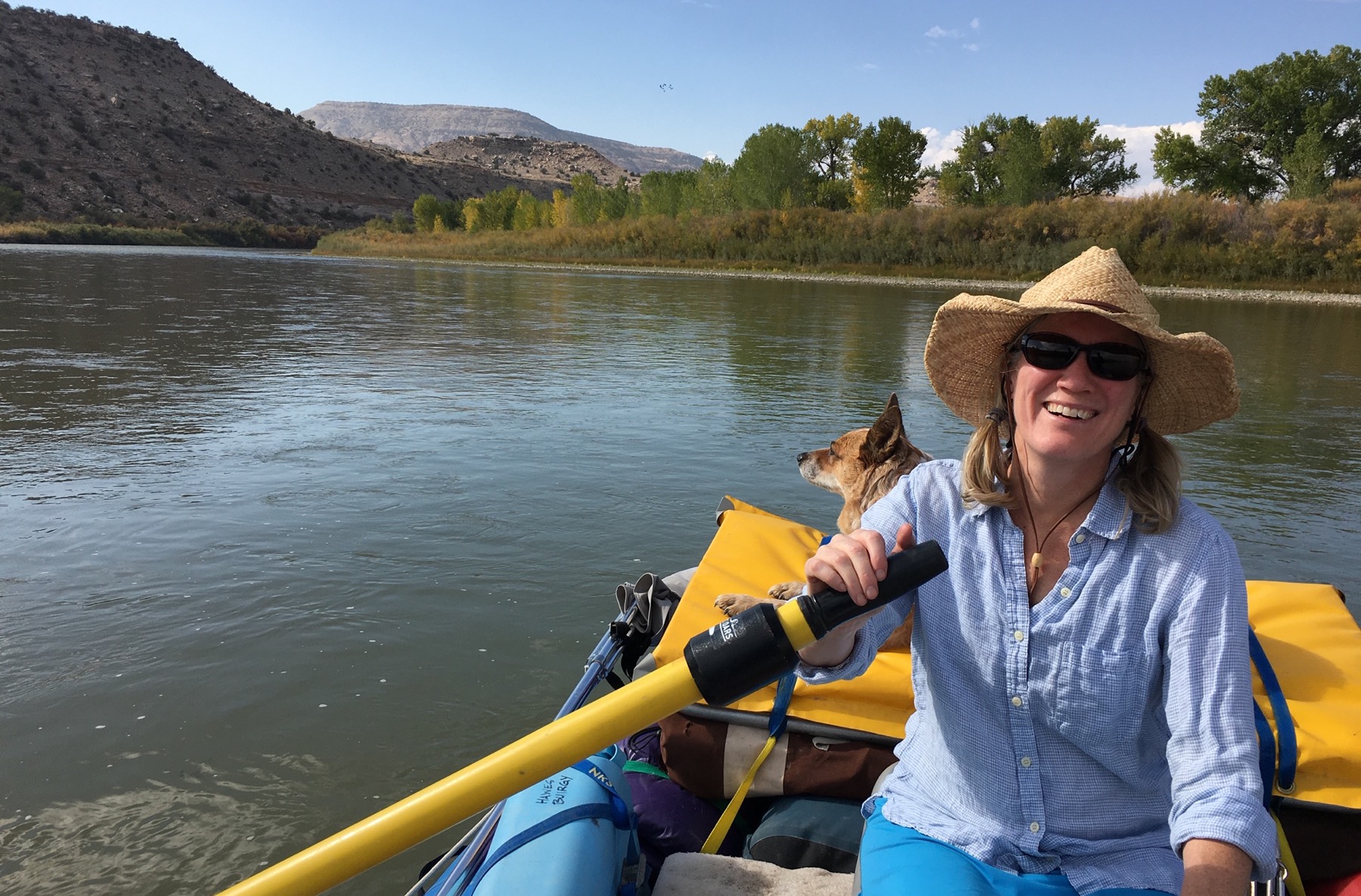
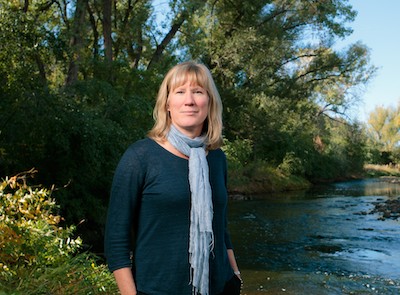
Photo credit: Matthew Staver
Taylor Hawes is the Director of the Colorado River Program for the Nature Conservancy. As the leader of the program, she guides TNC’s efforts to conserve the freshwater biodiversity of the Colorado River Basin while also meeting human demands for water– challenging objectives given the wide-ranging stresses facing the river today. But despite the challenges brought about by climate change, overallocation, and increasing demand, Taylor and her team are making great strides toward finding long-term solutions to create a sustainable future for the Colorado River and the people, plants, and animals that depend on it.
Taylor grew up on the east coast, and, from a young age, she felt a deep connection to land, water, and natural resources. She fell in love with wide-open spaces while on a course with the National Outdoor Leadership School, and she’s devoted her career to protecting land and water in the West. Prior to joining the team at TNC, she served as Associate Counsel to the Colorado River Water Conservation District on Colorado’s Western Slope, working on water quality, water policy, environmental permitting, and water rights litigation.
If you pay attention to the news, then you’ll know that the Colorado River has been receiving tons of media attention for the dire conditions and projections facing the entire region. Reservoirs are at historic lows, temperatures are rising, and the need for more water is increasing. In the first part of this conversation, I ask Taylor to decipher many of the surface-level sound bytes that I’ve heard in the news, and she provides some much-needed context and background regarding the river basin’s current challenges. We then talk about how TNC is working to solve these problems, by building community support, working collaboratively with Tribal nations, and helping agricultural producers become more efficient. And we spend the last part of the conversation talking about Taylor’s professional journey– why she chooses to do this work, what gives her hope, and her goals for her work on the Colorado River.
This was a timely conversation, and I hope it sheds some light on the challenges facing the Colorado River today– and provides some optimism about the river’s future. Thanks to Taylor for taking the time to chat, and thank you for listening.
Photos courtesy of Taylor Hawes and The Nature Conservancy
LISTEN & DOWNLOAD:
Download on Apple Podcasts
Download on Spotify
Download on Google Podcasts
…or wherever you get your podcasts!
EPISODE PARTNER:
This episode is brought to you in partnership with the Colorado chapter of The Nature Conservancy. Guided by science and grounded by decades of collaborative partnerships, The Nature Conservancy has a long-standing legacy of achieving lasting results to create a world where nature and people thrive.
On the fourth Tuesday of every month throughout 2023, Mountain & Prairie will be delving into conversations with a wide range of The Nature Conservancy’s leaders, partners, collaborators, and stakeholders, highlighting the myriad of conservation challenges, opportunities, and solutions here in the American West. You can access all of the 2023 episodes here.
To learn more about The Nature Conservancy’s impactful work in Colorado and around the world, visit www.nature.org/colorado
RESOURCES:
Topics Discussed:
- 3:15 – An overview of the situation regarding Colorado River water
- 8:00 – Discussing the “bandaid” solutions for the overallocated Colorado River implemented over the years
- 10:45 – Who is making the water allocation decisions for the Colorado River
- 12:00 – The breakdown of water use in the West
- 16:45 – Why has this situation has become an emergency right now, meriting the involvement of the federal government
- 19:30 – The timeline of Colorado river use reduction mandates
- 21:30 – The potential impacts of shrinking Colorado River on the Grand Canyon
- 23:00 – What will happen if the Colorado River Basin states do not agree on a plan to reduce water use in accordance with federal mandates
- 24:45 – How Taylor focuses on solutions regarding such a complex, difficult-to-model problem
- 28:30 – Some strategies TNC is employing to support and work with producers in reducing their water use
- 35:00 – Discussing the difficulties and importance of relationship building in this work
- 40:15 – TNC’s work supporting Tribal water challenges
- 44:45 – What drives Taylor’s work and what are her goals
- 47:00 – How Taylor ended up doing this work
- 53:45 – How law school helped Taylor
- 55:45 – What keeps Taylor energized about her work and TNC
- 58:15 – How anybody can get involved in this work
- 1:02:00 – Taylor’s book recommendations
Information Referenced:
- The Nature Conservancy, Colorado
- Taylor Hawes
- 5280 Magazine
- 5280 article with Taylor
- The Colorado River
- The Colorado River Compact
- Colorado River 2007 Interim Guidelines and Drought Contingency Plans
- Bureau of Reclamation
- Lake Powell
- Lake Mead
- SEIS: Supplemental Environmental Impact Statement
- Colorado Water Conservation Board
- Rebecca Mitchell
- Arizona Department of Water Resources
- State of California Colorado River Board
- Denver Water
- San Juan Mountains
- The Emerald Mile by Kevin Fedarko
- Glen Canyon Dam
- Page, AZ
- Navajo Nation
- Boulder, CO
- Acre-foot
- Smallmouth Bass
- CFS – cubic feet per second
- Arkansas River
- Colorado Springs, CO
- Kernza
- Alfalfa
- Hay Grass
- Riparian Doctrine
- Grand Valley
- Verde River
- Phoenix, AZ
- Barley
- Malt House
- Headgate
- Matt Moorhead
- Aaron Derwingson
- Klamath Basin
- Trout Unlimited
- TNC Colorado 2022 Year in Review
- Upper Basin Tribal Dialogue
- Yampa River
- University of North Carolina
- Savannah River
- Richard B. Russell Dam
- Jimmy Carter
- Chapel Hill, NC
- Exxon Valdez Oil Spill
- NOLS
- Prince William Sound
- Time Magazine coverage of the Exxon Valdez Spill
- Booms
- Gila River
- Virgin River
- Colorado River in Crisis podcast
- Audubon Society
- Cadillac Desert by Mark Reisner
Enjoy this episode? Then you might like these too:
- Carlos Fernández, Part 2 – Creating Conservation Opportunities During Uncertain Times
- Dr. Katharine Hayhoe – Effecting Change Through Authentic Conversation
- Pete McBride, Part 2: In Search of Silence
- Frances Ashforth – Art, Water, and Wide-Open Spaces
- Dylan Tomine – Protecting What He Loves
- Alvin Dedeaux – Living His Dream
- Mike Foote – Perfection is in the Process
- Chris Dombrowski, Part 2 – “The River You Touch”
Visit the podcast page for a full list of episodes where you can filter episodes by topic and guests’ vocations.
Beau Alexander – Paying Homage to the Past, While Focusing on the Future
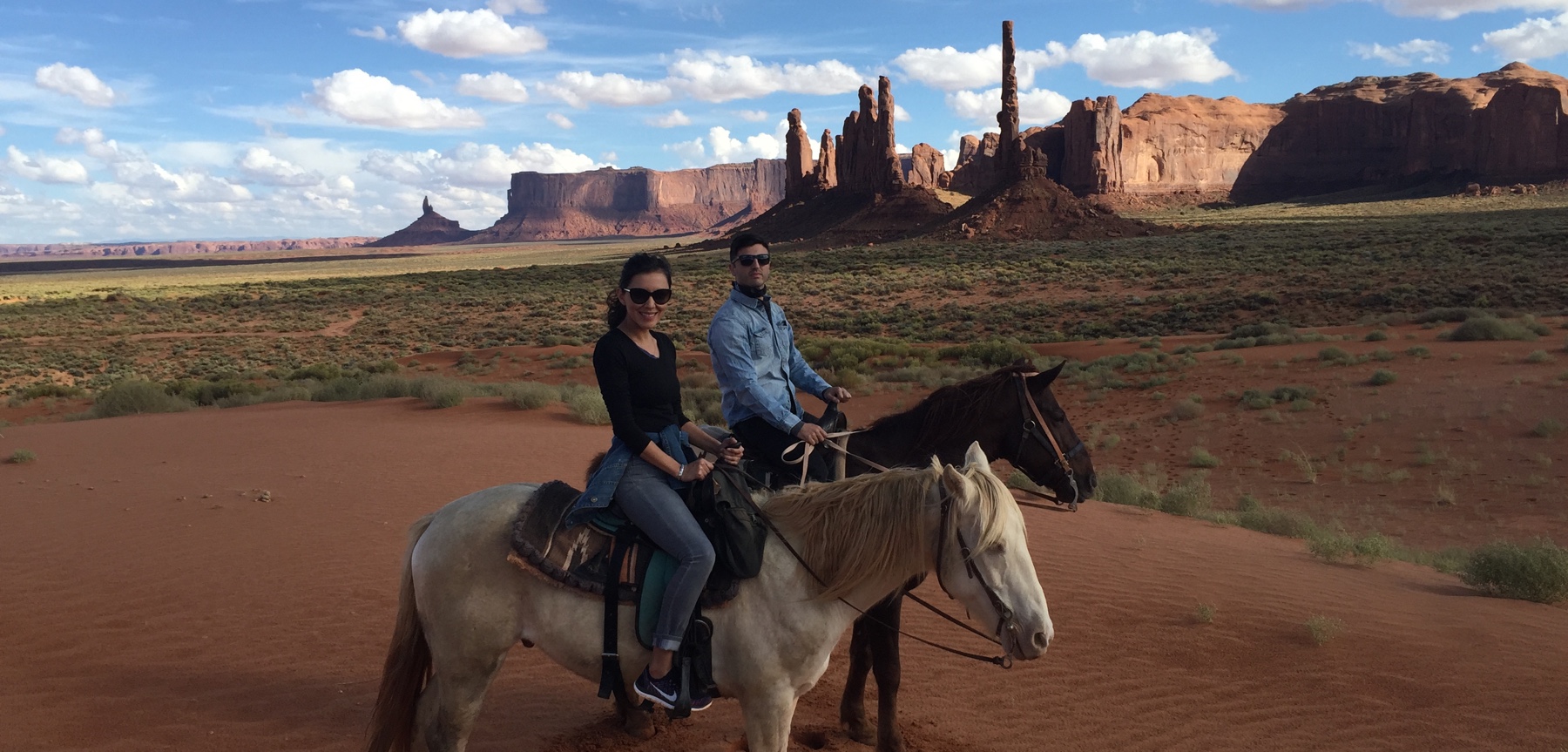
Beau Alexander is the owner and operator of Maxwell Alexander Gallery, a world-renowned art gallery that curates and celebrates “a new breed of fine art” here in the American West and beyond. Beau and his brother, the famed western artist Logan Maxwell Hagege, officially opened the gallery back in 2012, and their goals were simple: Represent one-of-a-kind artists, put the artists’ interests first, and serve as a trusted resource for a wide range of collectors around the globe. After many years of scrappy hard work and outside-the-box thinking, Maxwell Alexander Gallery has become a cornerstone of the Western art world.
Beau was born and raised in Los Angles and from an early age, he showed a talent for entrepreneurship and marketing. He and his brother Logan started a number of businesses together, combining their proclivity for creativity with the tireless work ethic they learned from their immigrant father. As Logan’s art career exploded, they both saw an opportunity to create an art gallery that takes care of its artists and clients– one that plays the long game and is deeply invested in the people behind the art… not solely focused on making a sale. So, in 2012 they opened Maxwell Alexander Gallery and have steadily risen to the top of the western contemporary art world. And just a few weeks ago, Beau was awarded the Autry Museum’s John J. Geraghty Award, which recognizes an individual for his or her Advancement of Contemporary Western art.
Beau and I met last fall in L.A. at Maxwell Alexander Gallery’s 10 Year Anniversary Exhibition, so I was thrilled to have him join me for a more in-depth conversation about his journey in western art. We started out by discussing his upbringing in LA and how entrepreneurship has always been a part of his life. We discuss some of the good and bad aspects of the old-school art gallery world that sparked the idea to start Maxwell Alexander Gallery. We discussed the early days of the business, and how he had to grind and be extremely creative in order to gain a foothold in the art world. We also discuss his irreverent, often times hilarious, approach to using social media as a marketing tool and the importance of introducing new collectors to western art. We discuss art valuation, the importance of treating people fairly, his other artistic influences, and his brother Logan’s evolution as an artist.
We talk a lot about Logan and the 10 Year Anniversary exhibition– you can listen to those podcasts by following these links: Logan Maxwell Hagege and Live from Maxwell Alexander Gallery. But for now, I hope you enjoy this inspiring conversation with Beau Alexander.
Photos courtesy of Beau Alexander
LISTEN & DOWNLOAD:
Apple Podcasts
Spotify
Google Podcasts
… or wherever you get your podcasts!
—
RESOURCES:
Topics Discussed:
- 3:45 – Setting the scene in Beau’s year leading up to starting the Maxwell Alexander Gallery
- 10:00 – Discussing Beau’s time studying business, before which he had actually started his own business
- 14:00 – How Beau prioritizes relationships in his business
- 17:30 – Beau’s process of evaluating artwork
- 21:30 – How the Maxwell Alexander Gallery is different from other art galleries
- 24:00 – When Beau figured out that the Maxwell Alexander Gallery was a unique idea to run with in the art world, and the early process of establishing the gallery
- 29:45 – Discussing Beau’s unconventional ways of advertising the gallery
- 31:15 – How long it took for the established art community to recognize and embrace the Maxwell Alexander Gallery model
- 36:45 – Discussing the 10 Year Anniversary of the gallery
- 39:30 – Talking about the finances and value of art
- 49:30 – Advice for young art collectors
- 52:30 – Beau’s favorite art
- 59:30 – Beau’s other influences outside of painting and sculpture, as well as the impact Logan Maxwell has had on the art world
Information Referenced:
- Maxwell Alexander Gallery
- Maxwell Alexander Gallery on Instagram
- Beau Alexander
- Maxwell Alexander Gallery 10 Year Anniversary Celebration
- Mountain and Prairie Live at the Maxwell Alexander Gallery 10 Year Anniversary
- Logan Maxwell Hagege
- Malibu, CA
- Jay-Z
- Jackson Hole, WY
- John J. Geraghty Award
- Glenn Dean
- Billy Schenck
- Josh Elliott
- Jeremy Lipking
- Contemporary Realism (definition | at the Maxwell Alexander Gallery)
- Michael Klein
- Joshua Larock
- David Kassan
- Kim Wiggins
- Eric Bowman
- Maxwell Alexander Gallery Black Friday Exhibition
- Pendleton collaboration
- Stetson collaboration
- Pasadena, CA
- Norton Simon Museum
- The Louvre
- The Tate Museum
- Pablo Picasso
- Henri Matisse
- Claude Monet
- Agnes Martin
- Minimalism
- Modernism
- American Modernism
- Ellsworth Kelly
- Brett Allen Johnson
- Earnest L. Blumenschein
- Taos Society of Artists
- William Herbert Dunton
- Ernest Martin Hennings
- Endurance: Shackleton’s Incredible Voyage
- Into Thin Air
- The Tipping Point
- The Millionaire Next Door
- Logan Maxwell Hagege – Desert Survey
- E. Martin Hennings & Walter Ufer (Edited by Thomas Smith) – A Place in the Sun
- Beyond the Visible Terrain by Ed Mell
- Mann Vol. 1 by Jeremy Mann
- Rich Dad, Poor Dad by Robert T. Kiyosaki
- How to Argue and Win Every Time by Gerry Spence
- The Salmagundi Club
Enjoy this episode? Then you might like these too:
- Logan Maxwell Hagege – Artistic Evolution
- Live from Maxwell Alexander Gallery
- Christian Beamish – West Coast Craftsman
- Jess Mudgett – Humble & Grateful
- Riddy Arman – Artistic Authenticity
- Chris Burkard, Part 2 – Seeking Beauty Through Adventure
- Ivan McClellan – A New Look at the Old West
- Chris La Tray – Rediscovering His Past, Writing His Future
- Peter Heller – Chasing the Flow
- Morgan Irons – Finding Her Muse
Visit the podcast page for a full, searchable list of episodes
Chandra Brown, Part 2 – Teaching & Learning in the West’s Wildest Landscapes
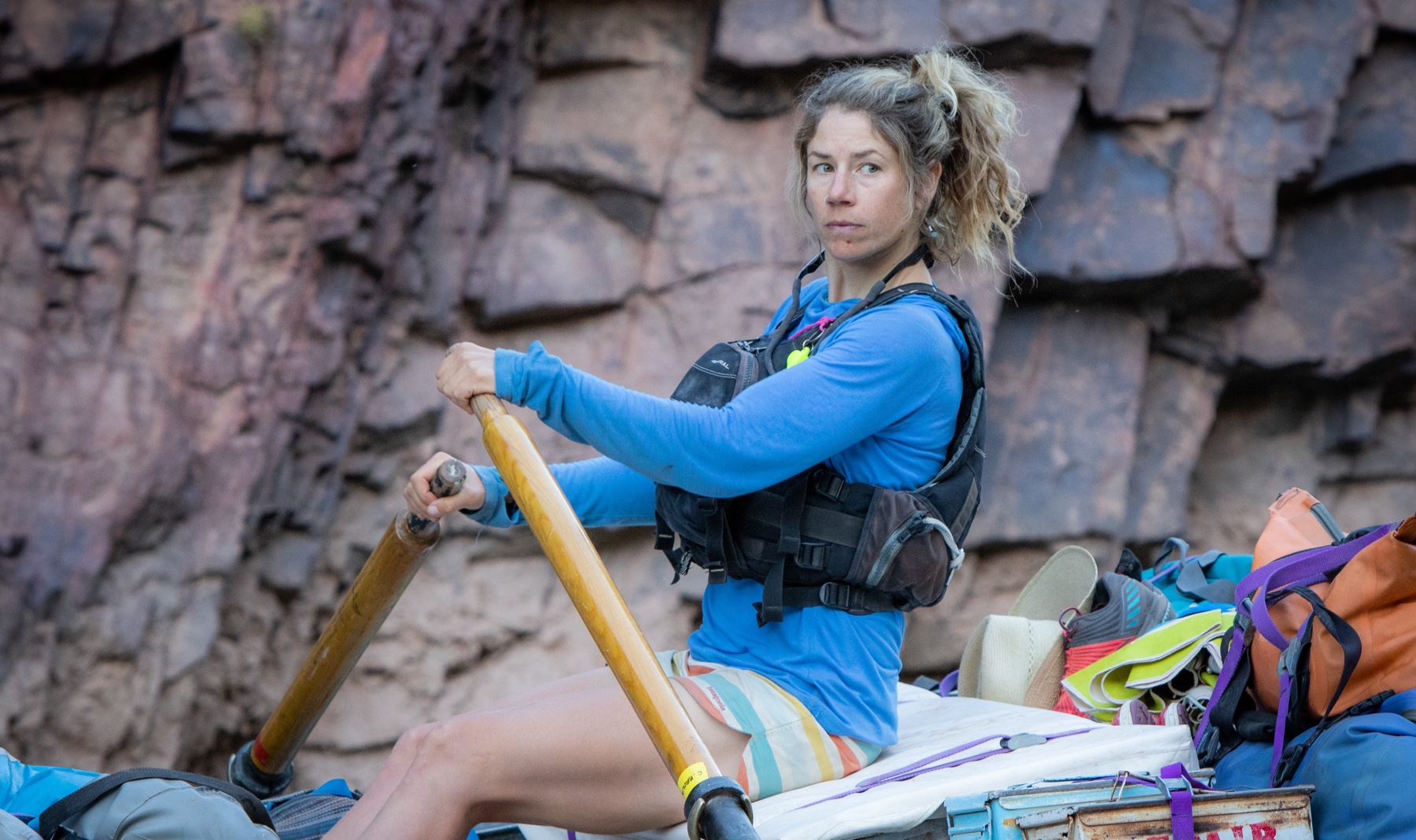
I first met Chandra Brown through the podcast more than four years ago, and with each passing year, I’ve been more and more inspired by her life and work. You may remember that she’s the founder of Freeflow Institute, a Montana-based organization that curates immersive outdoor learning experiences in Earth’s wildest classrooms. What started with combining summer river trips with writing workshops taught by some of the West’s greatest authors has turned into a year-round, immersive curriculum that incorporates many forms of art and storytelling.
If you’ve listened to a lot of Mountain & Prairie episodes, then you will recognize many past and present Freeflow Instructors– Hal Herring, Bill deBuys, Chris La Tray, Heather Hansman, Anna Brones, Brendan Leonard, Alexis Bonogofsky, and Elliott Woods. And you’ll also recognize the Freeflow classrooms, which include the Salmon River, Green River, Big Blackfoot River, San Juan Islands, and the canyon country of Southwest Colorado. The overlap between what Chandra has built at Freeflow and what we’re all doing here in Mountain & Prairie is significant, so I was excited to have Chandra join me for another conversation.
If you want to hear more about Chandra’s upbringing in Alaska and her fascinating life trajectory, I’d encourage you to go back and listen to our first episode. But also feel free to dive right into this conversation, as we had a wonderful chat about everything from cold water plunges to Freeflow’s growth and evolution to the challenges of running a small business during the pandemic years. We discuss some of the upcoming courses for this calendar year, Freeflow’s scholarship program, the importance of pursuing one’s own creative endeavors, and how Chandra and grown as a person over the past four years.
I’d also be crazy not to mention that I’m leading a Freeflow course late this summer, down the Green River in Utah, through Gates of Ladore and Dinosaur National Monument. We’ll be focused on the power of optimistic storytelling, and how storytelling can be used to effect change here in the West and beyond. You can check out the link in the episode notes to learn more, but my course is limited to 12 people and it’s already filling up. But even if you’re not interested in spending a week with me, I’d encourage you to check out all the courses and the scholarship opportunities. I wish I could go on all the courses!
Thanks for listening. Hope you enjoy!
Photos courtesy of Chandra Brown
LISTEN & DOWNLOAD:
Apple Podcasts
Spotify
Google Podcasts
… or wherever you get your podcasts!
—
This episode is brought to you in partnership with my friends at Stonefly Nets: Handcrafted Fishing Nets Made in Arkansas
RESOURCES:
Topics Discussed:
- 4:00 – Chandra’s most recent trip with Anna Brones
- 6:15 – How cold water became a part of Chandra’s life and practice
- 9:44 – An overview of Freeflow Institute and how it came to be
- 12:00 – How Freeflow has evolved
- 14:45 – Whether Freeflow’s evolution was more due to Chandra’s planning or her flexibility
- 16:30 – Chandra’s advice for someone thinking of quitting their steady job to build something new
- 19:45 – The business owners and creatives Chandra admires
- 22:45 – How the Freeflow Foundation came to be
- 25:15 – Some available scholarships through the Freeflow Foundation
- 27:45 – Running through some of the currently available Freeflow courses, with a brief tangent into dishwashing habits
- 30:45 – What makes a Freeflow Institute course successful for participants
- 34:00 – Success stories from past courses
- 41:30 – How Freeflow has changed Chandra
- 46:45 – Freeflow’s podcast and creative services
- 50:00 – Chandra’s book recommendations
Information Referenced:
- Chandra Brown
- Freeflow Institute
- Anna Brones
- Puget Sound
- Hillary Oliver
- Brendan Leonard
- Sympathetic nervous system
- William DeBuys
- Hal Herring
- Pam Houston
- David James Duncan
- Alexis Bonogofsky
- Elliot Woods
- “How Ugandans are Saving the Nile with River Sports Culture” by Chandra Brown
- Running to Stand Still – Freeflow course with Brendan Leonard
- Freeflow Foundation
- American Rivers
- American Prairie Reserve
- American Whitewater
- Craig Childs
- Dolores River
- The Desert Eye – Freeflow course with Craig Childs
- Joe Wilkins
- Blackfoot River
- River, Language, World – Freeflow course with Joe Wilkins
- Ana Maria Spagna
- San Juan Islands
- Writing the Nonhuman – Freeflow course with Ana Maria Spagna
- Chris La Tray
- Missouri River
- Rewilding Bodies, Rewilding Writing – Freeflow course with Chris La Tray
- Whitefish, MT
- Sherwin Bitsui
- Rio Grande
- Fort Lewis College
- Byron Aspaas
- Place, Power, and Purpose – Freeflow course with Ed Roberson
- Gates of Lodore
- Green River
- Freeflow Podcast
- The Prop Foundation
- Freeflow’s creative services
- Seth Godin
- This is Marketing by Seth Godin
- Akimbo – a podcast from Seth Godin
- Wintering by Katherine May
- Being Mortal by Atul Gawande
- Four Thousand Weeks by Oliver Burkeman
- Tim Ferriss
- Arctic Dreams by Berry Lopez
Enjoy this episode? Then you might like these too:
- Chris Dombrowski, Part 2 – “The River You Touch”
- Douglas Brinkley – Exploring the Past to Find Inspiration for the Future
- Peter Stark – Tales of Adventure, Exploration, & Epic Battles
- Frances Ashforth – Art, Water, and Wide-Open Spaces
- Nate Schweber – A Forgotten Chapter of American Conservation
- Pete McBride, Part 2: In Search of Silence
- Rick Ridgeway – Purpose-Driven Adventurer
- Riddy Arman – Artistic Authenticity
- Antonia Malchik – Exploring Culture & Complexity
- Nickolas Butler – The Craft of Creativity
Visit the podcast page for a full, searchable list of episodes
Cate Havstad-Casad, Part 2 – Building Businesses for the Greater Good
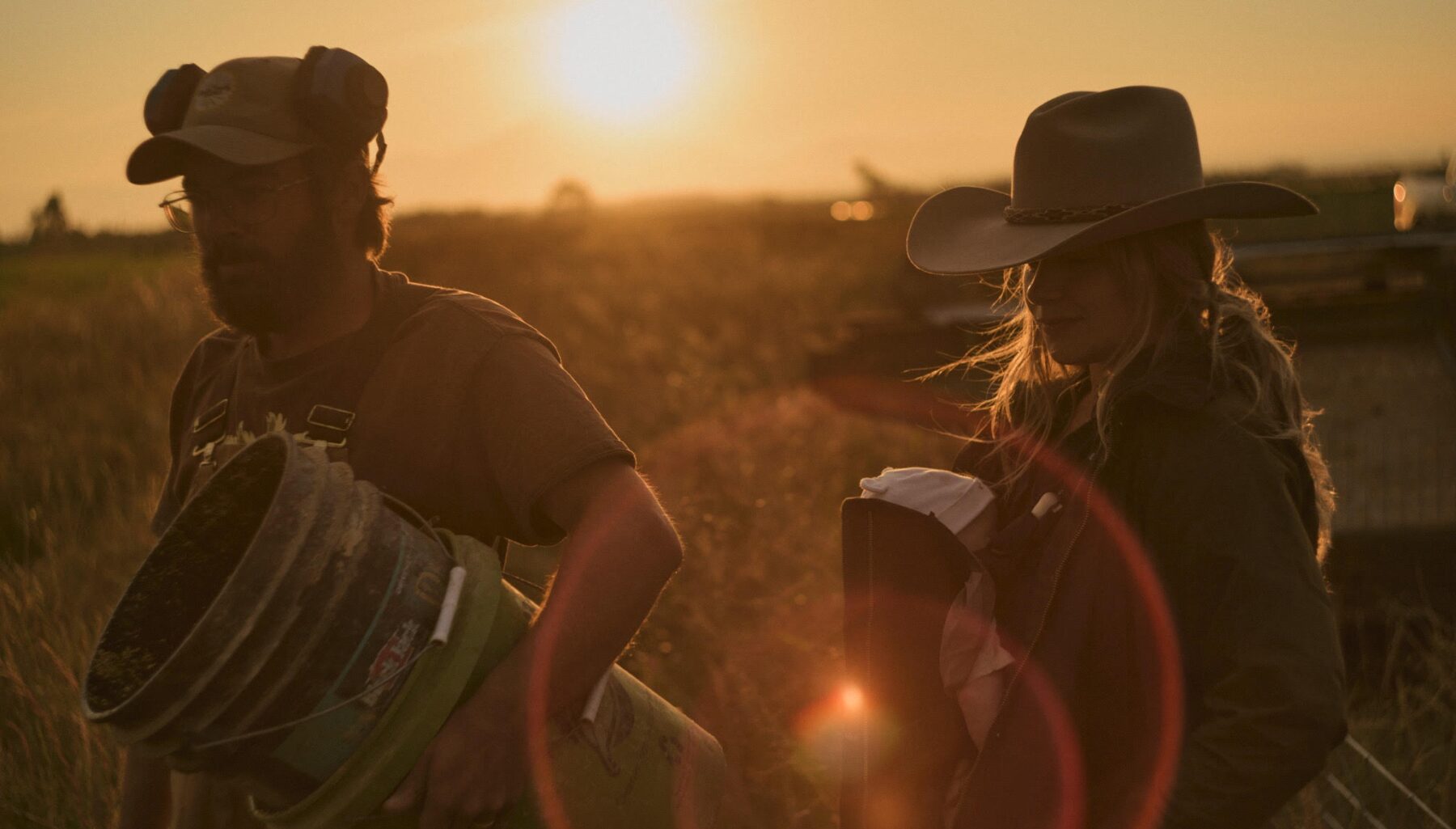
If you’ve listened to Mountain & Prairie since the early days, then I’m sure you remember Cate Havstad-Casad. She first joined me on the podcast in early 2018 for a conversation about her life and career as a hatmaker and farmer. In late 2019, she was one of the four amazing women who joined me on stage for a live podcast at the Bozeman’s Ellen Theatre. And today more than 5 years after that first conversation, she joins me once again to talk about her continued personal and professional evolution.
Over the past few years, Cate has been working at a dizzying pace, focusing on creating and building several purpose-driven businesses. She’s the founder and CEO of Range Revolution, the world’s first regenerative leather luggage company, as well as the co-founder of Agricultural Connections Co-Op, a regional food distribution business based in Bend, Oregon. Additionally, she and her husband Chris have continued to grow their organic farming business, and her hatmaking business, Havstad Hat Co., continues to grow and evolve in unexpected ways. And to top it all off, in 2021, Cate and Chris welcomed their first child into the world.
So, we had a lot to discuss! We started by talking about how Cate thinks about her work today versus five years ago, and why she feels it is important to continue to take business risks even after taking on the new responsibilities that come with parenthood. We talk a lot about Range Revolution and the Agricultural Connections Co-op, and Cate shares a ton of lessons learned from the process of founding these vastly different businesses. We discuss leadership and management, and Cate offers up some excellent books and resources that have helped her to become a better leader. We talk about fundraising, the importance of self-awareness, thinking versus doing, mentors, Wendell Berry, and our mutual love of hard work.
Cate obviously has a full schedule, so I appreciate her carving out time to chat with me. Check out the episode notes for links to her businesses and all of the resources we discuss. Thanks for listening, hope you enjoy.
Photos courtesy of Cate Havstad-Casad
LISTEN & DOWNLOAD:
Apple Podcasts
Spotify
Google Podcasts
… or wherever you get your podcasts!
—
RESOURCES:
Topics Discussed:
- 4:00 – Comparing 2017 Cate Havstad to Cate Havstad now
- 8:00 – Talking about starting businesses and incurring risk later in one’s career
- 11:15 – Discussing Range Revolution
- 15:00 – Where the business of Range Revolution stands
- 18:00 – Cate’s work ethic and how she got potential business partners to take her seriously
- 20:45 – Cate’s relationships with hard work and rest
- 23:45 – How Cate learned to build and manage teams in her work
- 27:15 – Cate’s business book recommendations
- 30:30 – Cate’s red flags in a teammate
- 32:00 – Discussing Agricultural Connections Co-op
- 34:30 – Defining a “cooperative entity” or “co-op”
- 36:15 – How Cate raised the money to start her co-op
- 38:00 – Why Cate is so good at fundraising and how she networks to that end
- 43:30 – Mistakes Cate made that taught valuable lessons
- 49:15 – Where Cate finds balance between action and reflective self-awareness
- 51:15 – Cate’s mentors
- 53:45 – Cate’s suggestions for Wendell Berry reads
- 58:00 – Other book and podcast recommendations from Cate
Information Referenced:
- Havstad Hat Co
- Range Revolution
- Casad Family Farms
- Agricultural Connections Co-op
- Madras, OR
- Land to Market
- Savory Institute
- Leaders Eat Last by Simon Sinek
- Jocko Willink
- Extreme Ownership by Jocko Willink
- Live podcast in Bozeman
- Cole Mannix
- Old Salt Co-op
- Old Salt Festival
- REI
- Ecotrust
- Portland, OR
- Ricardo Bayon
- Brené Brown
- Sallie Calhoun
- Wendell Berry
- It All Turns on Affection by Wendell Berry
- The Unsettling of America by Wendell Berry
- The World Ending Fire by Wendell Berry (essays)
- What are People For essays by Wendell Berry
- Fredrick Douglas
- Silent Spring Revolution by Douglas Brinkley
- Douglas Brinkley
- Rachel Carson
- Green Grass in the Spring by Tony Malmberg
- Tony Malmberg
- Andrea Malmberg
- Holistic management
- Kate Kavanaugh
- Mind, Body, and Soil podcast
- Dr. Anthony Gustin
- The Natural State podcast
- Smartless podcast
- Conan O’Brien
- Conan O’Brien Needs a Friend podcast
Enjoy this episode? Then you might like these too:
- Megan Torgerson – Storytelling from Rural America
- Cole Mannix – Building Community through Land Stewardship and Local Food
- Amber Smith – Creating Connection & Community
- Betsy Gaines Quammen – A Fascinating History of Public Lands in the West
- Kate Mannix – A Legacy of Land Stewardship
- Antonia Malchik – Exploring Culture & Complexity
- Juanita Vero, Part 2 – A Deep Desire to Serve
- Live in Bozeman!
- Kate Kavanaugh – Regeneration & Restoration
Visit the podcast page for a full, searchable list of episodes
Dr. Katharine Hayhoe – Effecting Change Through Authentic Conversation
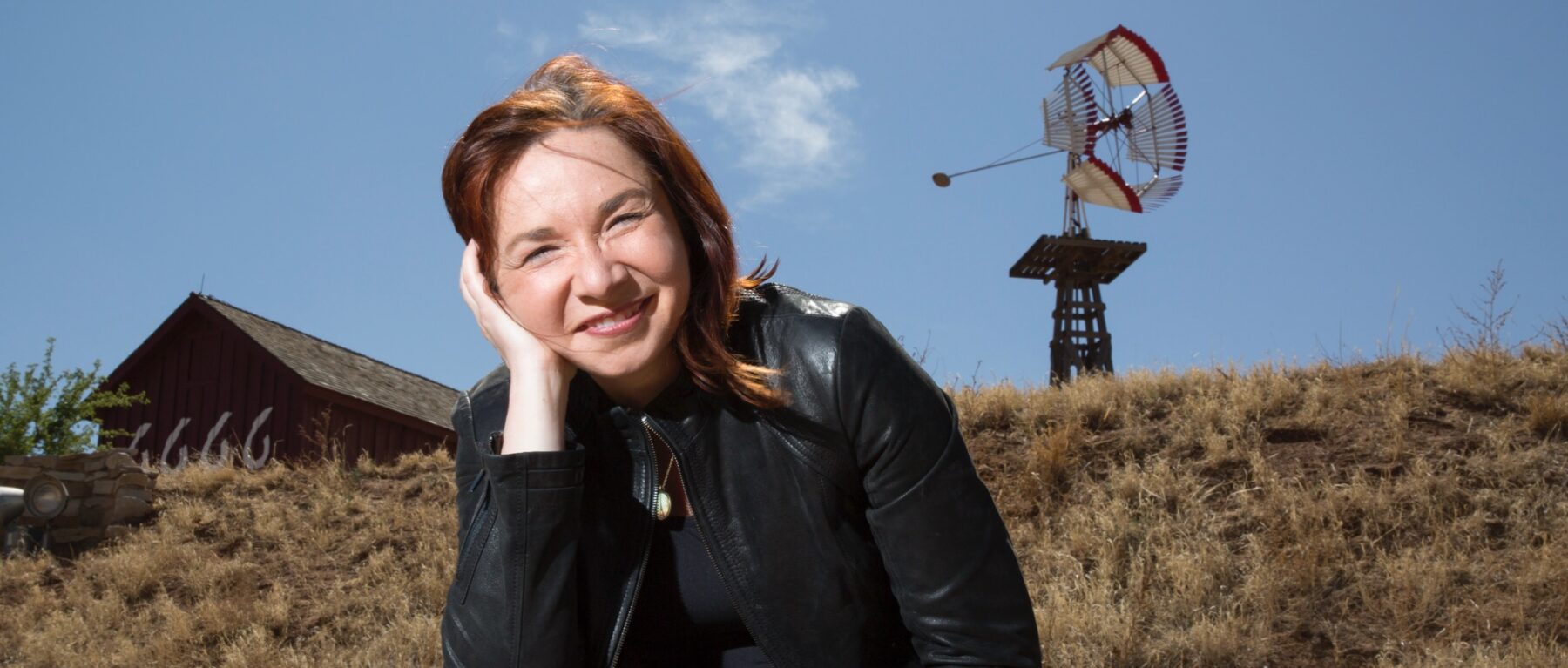
Dr. Katharine Hayhoe is a world-renowned climate scientist, professor, and Chief Scientist for The Nature Conservancy, where she leads and coordinates the organization’s scientific efforts. She is also the author of Saving Us: A Climate Scientist’s Case for Hope and Healing in a Divided World, an excellent book you’ve likely heard me reference on the podcast. Whether you are interested in learning more about the facts, data, or projections regarding climate change, or if you are seeking guidance on how best to approach challenging conversations about climate, I highly recommend Saving Us. It’s an optimistic, solutions-oriented guidebook for finding common ground and having productive conversations.
Katharine was born and raised in Canada and has been obsessed with science, the natural world, and the universe for as long as she can remember. Her undergraduate studies focused on physics and astronomy, but as she was finishing up her degree, she happened to take a climate science course, which captured her imagination and changed the focus of her education and career. Today, Katharine is a distinguished professor at Texas Tech, a highly respected researcher, and a sought-after speaker with a TED Talk that’s been viewed more than 4 million times. And to top it all off, in 2021, she joined The Nature Conservancy as its Chief Scientist.
Katharine and I met up in Steamboat Springs, Colorado, where she was the keynote speaker at a community event focused on climate and climate change in the Yampa Valley and beyond. Katharine and I chatted for an hour before her event, and we managed to cover a lot of ground. We discussed her book Saving Us, her TED talk, and a concept known as “The Six Americas of Global Warming.” We discuss how and why her Christian faith plays such an important role in her work to solve climate change, and she offers some common-sense, optimistic approaches to having challenging conversations with smart people who do not think that climate change is a threat. She also talks about her role at The Nature Conservancy, specific climate opportunities and challenges facing the American West, and she offers a ton of excellent book recommendations.
Thank you to Dr. Hayhoe for taking the time out of her busy schedule to chat with me, and thank you for listening. Hope you enjoy.
Header photo and headshot by Ashley Rodgers
LISTEN & DOWNLOAD:
Download on Apple Podcasts
Download on Spotify
Download on Google Podcasts
…or wherever you get your podcasts!
EPISODE PARTNER:
This episode is brought to you in partnership with the Colorado chapter of The Nature Conservancy. Guided by science and grounded by decades of collaborative partnerships, The Nature Conservancy has a long-standing legacy of achieving lasting results to create a world where nature and people thrive.
On the fourth Tuesday of every month throughout 2023, Mountain & Prairie will be delving into conversations with a wide range of The Nature Conservancy’s leaders, partners, collaborators, and stakeholders, highlighting the myriad of conservation challenges, opportunities, and solutions here in the American West. You can access all of the 2023 episodes here.
To learn more about The Nature Conservancy’s impactful work in Colorado and around the world, visit www.nature.org/colorado
RESOURCES:
Topics Discussed:
- 3:30 – Why Dr. Hayhoe wrote Saving Us
- 5:45 – Regarding Dr. Hayhoe’s TED Talk
- 8:15 – Discussing The Six Americas of Global Warming
- 12:00 – The relationship between Dr. Hayhoe’s faith and climate work
- 17:45 – When religion and climate change dismissal historically became tied together
- 21:30 – Discussing the balance between fear and guilt as motivating and stagnating forces
- 28:00 – What surprised Dr. Hayhoe in writing the book
- 33:45 – Role-playing how to interact with intelligent people who doubt climate science
- 37:30 – Applying lessons learned from COVID-19 to climate change
- 41:30 – Dr. Hayhoe’s time as a 9-year-old abroad in Columbia and how it influenced her thinking and career
- 46:15 – Why Dr. Hayhoe decided to work with The Nature Conservancy, and the impacts she hopes to make
- 50:15 – The stats Dr. Hayhoe would want to see to feel she has had an impact in five years
- 54:45 – The challenges and opportunities facing the arid West amidst climate change
- 57:00 – Dr. Hayhoe’s reading habits and some books she has loved
Information Referenced:
- Saving Us by Dr. Katharine Hayhoe
- The Nature Conservancy
- Poll Everywhere
- Dr. Hayhoe’s TED Talk (The Most Important Thing to Do to Fight Climate Change is to Talk About It)
- The Yale Program on Climate Change Communications
- Dr. Hayhoe’s conversation with Krista Tippett, On Being Podcast
- Douglas Brinkley
- Silent Spring Revolution by Douglas Brinkley
- Time Magazine climate change cover
- James Hansen
- James Hansen’s climate testimony
- Merchants of Doubt
- Winston-Salem, NC
- Wake Forest University
- R.J Reynolds Tobacco Company
- Boulder, CO
- Colorado Springs, CO
- COP27, Egypt
- EasyJet
- The Influential Mind by Tali Sharot
- American Psychological Association
- Texas Tech University
- Oxfam Sisters on the Planet
- Mangrove Forest
- Papua New Guinea
- Houghton College
- Wesleyan Church
- Brian Webb
- Harvard Extension School
- Citizens’ Climate Lobby
- The Righteous Mind by Jonathan Haidt
- King Tutankhamun
- The Amelia Peabody Series by Elizabeth Peters
- Dr. Ayana Elizabeth Johnson
Enjoy this episode? Then you might like these too:
- Daniela Ibarra-Howell – Healing the Land Holistically
- Marci McLean & Cora Neumann on COVID’s Impact on Native Communities
- Dr. David Hewitt – The Science of Wildlife Conservation
- Shane Doyle – Reverence for the Past, Hope for the Future
- Betsy Gaines Quammen – A Fascinating History of Public Lands in the West
- Pete McBride, Part 2: In Search of Silence
- Chris Dombrowski, Part 2 – “The River You Touch”
- Douglas Brinkley – Exploring the Past to Find Inspiration for the Future
Visit the podcast page for a full list of episodes where you can filter episodes by topic and guests’ vocations.
Megan Torgerson – Storytelling from Rural America
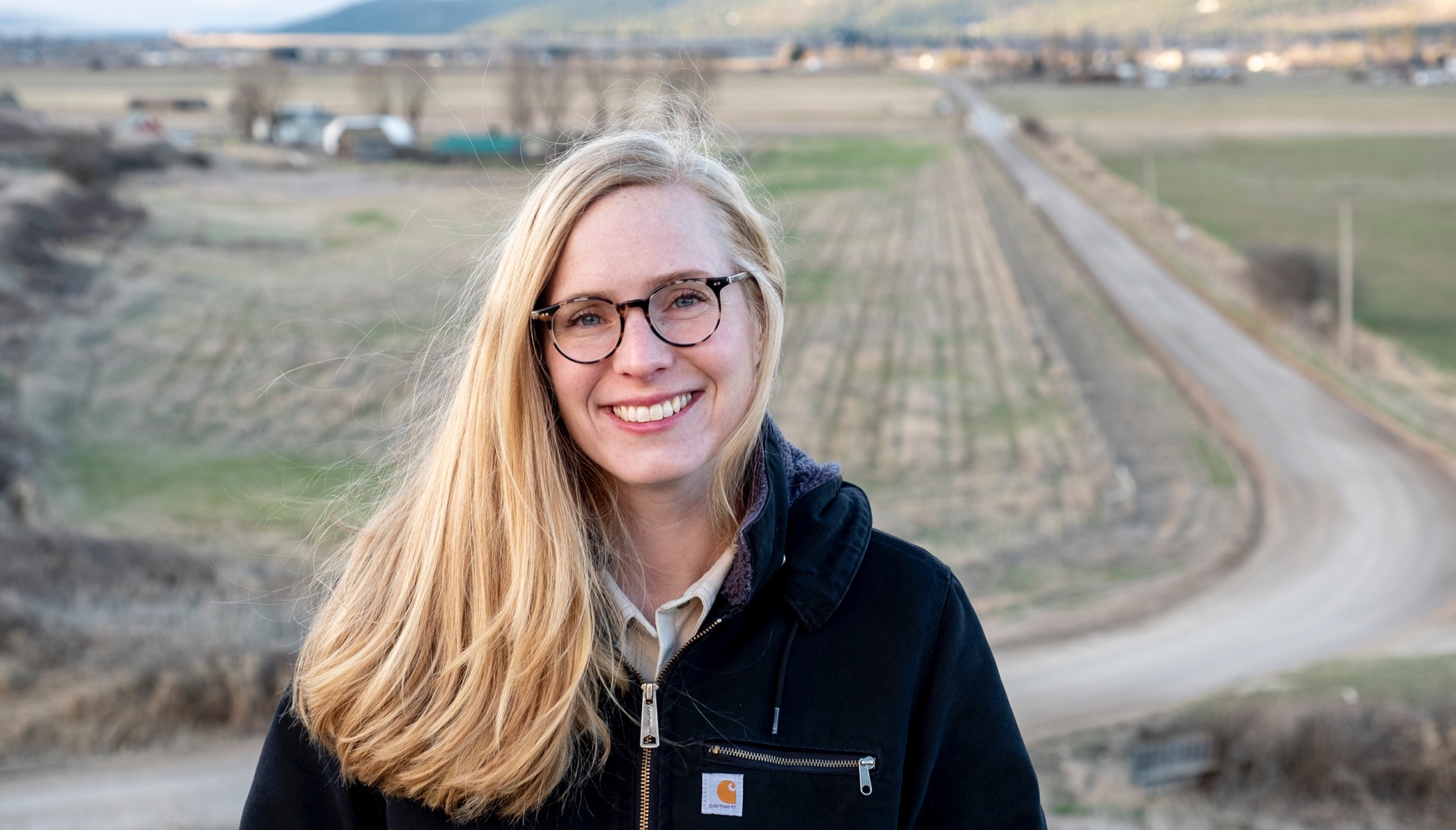
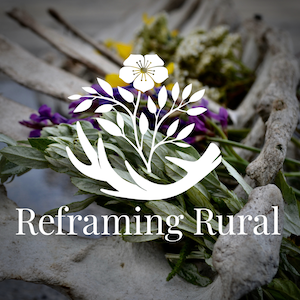
Megan Torgerson is a podcaster and the creator of Reframing Rural, a narrative podcast whose mission is to “share stories of people and places in rural America in an effort to celebrate culture, preserve history and cultivate curiosity and conversation across geographic, class and cultural divides.” In just three seasons, Megan has grown Reframing Rural from a spark of an idea into a highly regarded podcast, one that has been recognized by institutions such as the Headwaters Foundation, Montana Farmers Union, Humanities Montana, and more. Personally, I have learned a ton from Megan’s work, so it was an honor to have her join me on the podcast.
Megan was born and raised on the Great Plains of eastern Montana, primarily in the small town of Dagmar. She attended the University of Montana in Missoula and eventually made her way to graduate school in Seattle, where she earned her MFA. As you’ll hear in this conversation, during her time in grad school, Megan began exploring the idea of a podcast that focused on rural America. Rather than getting bogged down in endless planning and idea generation, she took action, produced Season 1, and put it out into the world in spring 2020. Fast forward to today, and Megan has a team that works with her, she continues to receive wide-ranging recognition, and the show is being broadcast on several Montana radio stations.
I’ve known Megan for a year or so, but this was the first time I had a chance to ask her detailed questions about her journey as a storyteller. We started out talking about her upbringing in Dagmar, as well as her educational background and early career. We discuss why she decided to create a narrative podcast, and she explains the very involved process of creating a single episode. We discuss some of the issues that she explores in Reframing Rural, including rural gentrification, which was the topic of one of her most recent episodes. We discuss her generosity in the podcast space, whether or not she considers herself a journalist, why she is optimistic about the future of rural America, some advice for aspiring podcasters, and she has lots of amazing book recommendations.
If you haven’t already, I’d encourage you to subscribe to Reframing Rural on your favorite podcast app. Megan is committed and she’s a pro, and I know that Mountain & Prairie listeners will appreciate the amazing work she’s putting into the world. Enjoy!
Photos courtesy of Megan Torgerson and Reframing Rural
LISTEN & DOWNLOAD:
Apple Podcasts
Spotify
Google Podcasts
… or wherever you get your podcasts!
—
RESOURCES:
Topics Discussed:
- 5:30 – Megan’s childhood
- 12:30 – What Megan hoped to do once she went to college in Missoula
- 15:00 – How Megan’s passions inspired hard work
- 17:15 – Why Megan started Reframing Rural
- 22:00 – Why Megan produces a narrative style podcast
- 26:00 – When did Megan plan for podcasting to become a job
- 28:30 – Megan’s experience with why podcasts generate such compelling stories and interviews
- 31:30 – Whether podcasting is a journalistic or creative endeavor for Megan, and whether she is concerned or not with “taking sides”
- 35:30 – An example of Megan’s podcast topics
- 39:30 – If Megan worries about negative feedback to her show, and how she handles it
- 44:30 – Where Megan’s generosity comes from
- 47:30 – What Megan is optimistic about regarding rural America
- 51:30 – How Megan measures success as a storyteller
- 53:30 – Other storytellers that Megan admires
- 55:15 – How to start a podcast, according to Megan
- 57:30 – How long the Dover episode took Megan to make
- 59:15 – Megan’s accolades
- 1:02:30 – Megan’s book recommendations
- 1:06:15 – Megan’s parting words of wisdom
Information Referenced:
- Reframing Rural
- Episode 1: Preservation and Motherhood on the Northern Great Plains (Kim Rudningen episode)
- Episode 5: A Snapshot of Family Farming Amid Cycles of Modernization and Migration (the episode with Megan’s family)
- “Groundwork” Episode 2: Farm Succession in Northeast Montana
- “Groundwork” Episode 3: A Conversation with Kathleen McLaughlin on Class Inequality & Cultural Extraction in a Changing Montana (an episode regarding rural gentrification)
- “Groundwork” Episode 4: Rural Gentrification in North Idaho
- Ashville, NC
- Dagmar, MT
- Williston, ND
- Sheridan county (MT)
- Medicine Lake, MT
- Saskatchewan
- Missoula, MT
- Prague
- Charles University
- Au pair
- Czechoslovakia
- Slovakia
- University of Montana
- National Outdoor Leadership School
- Big Sky Documentary Film Festival
- Seattle University
- SU Arts Leadership Program
- On Being Podcast with Krista Tippett
- The Modern West Podcast
- Decolonizing Methodologies by Linda Tuhiwai Smith
- Māori
- Quonset
- Business Impact NW
- Dover, ID
- Chloé Zhao
- Pine Ridge Reservation
- Songs My Brother Taught Me
- The Rider
- Billionaire Wilderness by Justin Farrell
- Pushed Out by Ryanne Pilgerim
- Sandpoint, ID
- Pend Oreille River
- Lake Pend Oreille
- Kalispell, MT
- Road House
- “Opinions vary” clip, Road House
- Tombstone
- Doc Holliday
- Billy Bob Thornton
- “I’m sorry I forgot you were there” clip, Tombstone
- The Rural Radio Collective
- Sunset Hill, Seattle
- Ballard, Seattle
- Red Ants Pants
- Sarah Calhoun
- Red Ants Pants Foundation
- Red Ants Pants Music Festival
- Girls Leadership Program
- Reimagining Rural, MSU Extension
- Amber Smith
- Women in Ranching
- Tara Mastel
- Pete McBride
- Headwaters Foundation
- Heartland by Sarah Smarsh
- S.G. Goodman
- Tascam field recorder
- Shure microphone
- Public Humanities Fellowship
- Butte America Radio
- Gallatin Valley Community Radio
- Missoula Community Access Television
- Humanities Montana
- Montana Farmers Union
- Braiding Sweetgrass by Robin Wall Kimmerer
- The Myth of Normal by Gabor Maté
- The Last Best Place Co-Edited by William Kitrich and Annick Smith
- Assiniboine people
- The Shepherd’s Life by James Rebanks
- English Pastoral by James Rebanks
- Dakota by Kathleen Norris
- The Hugo House
- Joe Wilkins Writing Classes at Hugo House
- Thieve by Joe Wilkins
- Killing the Murnion Dogs by Joe Wilkins
- Becoming Wise by Krista Tippett
- Sound Reporting by Jonathan
- Out on the Wire by Jessica Abel
- Jessica Abel
- Ira Glass
- On Writing Well by William Zinzer
- Writing Tools by Roy Peter Clark
- On Writing by Stephen King
- Norse Mythology by Neil Gaiman
- The Sentence by Louise Erdrich
- George Floyd
- The Overstory by Richard Powers
Enjoy this episode? Then you might like these too:
- John Branch – Seeking the Extraordinary in the Ordinary
- Shane Doyle – Reverence for the Past, Hope for the Future
- Heather Hansman, Part 2 – The Fascinating Story of Skiing’s Past, Present & Future
- Betsy Gaines Quammen – A Fascinating History of Public Lands in the West
- Pete McBride, Part 2: In Search of Silence
- Mike McTee & Vince Slabe – Win-Win Solutions in the Fight to Save Eagles
- Juanita Vero, Part 2 – A Deep Desire to Serve
- Jessica Wahl Turner – Outdoor Recreation & Rural Economies
Visit the podcast page for a full, searchable list of episodes
Bryce Andrews, Part 2 – “Holding Fire”
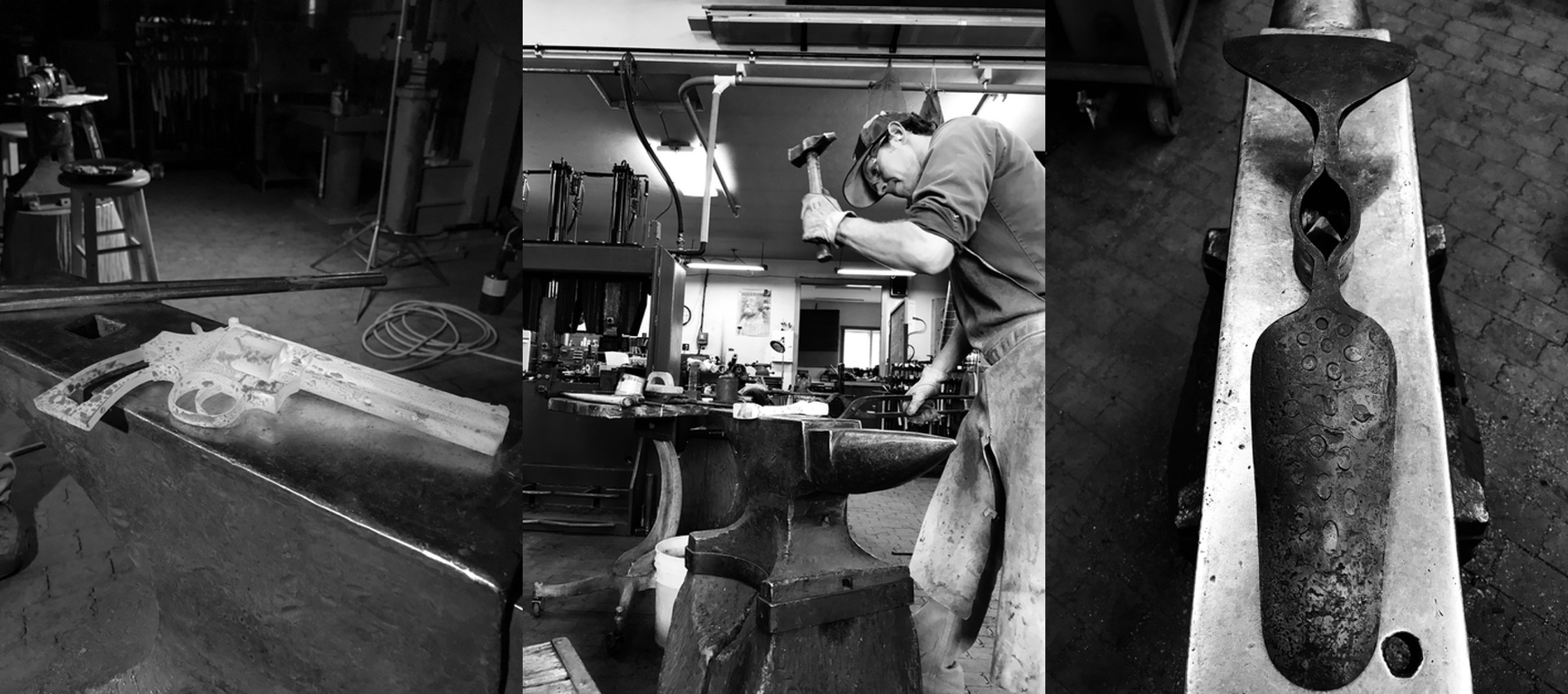
Bryce Andrews is a Montana-based rancher and writer, and he’s the author of the brand new book Holding Fire: A Reckoning with the American West. Longtime Mountain & Prairie listeners will remember my first conversation with Bryce back in 2019 when we discussed his writing, conservation work, ranching experience, and his first two books. I thoroughly enjoyed that first conversation and was so impressed with Bryce’s thoughtfulness, curiosity, and humility, so I was thrilled to have him back on the podcast to discuss Holding Fire.
Holding Fire is a thought-provoking memoir that explores Bryce’s complicated and evolving relationship with the landscape, culture, and history of the American West. Much of the story focuses on his grandfather’s Smith and Wesson revolver– a gun that he inherited and owned for many years while living and working in Montana. But despite being a committed big game hunter and owner of many guns, Bryce’s feelings toward the revolver began to change. As you’ll hear him explain, he eventually befriends a master blacksmith, learns to forge steel, and transforms the revolver from a gun into a tool that he now uses to plant trees on his property.
I loved the book, and it forced me to reexamine many of my baked-in notions about everything from the history of the West to my ideas about hunting for food, mental health, and the culture of the modern-day American West. We talked about why Bryce chose this particular topic for the subject of a book, his long-standing love of hunting, and why he decided to repurpose the revolver into a ranch tool. We discuss what he learned about craftsmanship from the blacksmith, the importance of converting guilt into action, and how fatherhood has changed his approach to life and work. We also talk about this summer’s Old Salt Festival, he and his wife’s stewardship of their ranch, and he offers up lots of excellent book recommendations.
And if you want to read and discuss a chapter of Bryce’s book for free, then download the new social reading app called Threadable. I have recently partnered with Threadable to highlight and discuss a number of readings about the history of the American West, including chapters from Sara Dant’s Losing Eden, and Roxanne Dunbar-Ortiz’s An Indigenous Peoples’ History of the United States. Threadable allows users to read portions of great books, then discuss them in a fun and interactive way. As of this recording, Threadable is only for iOS, but if you want to read a sample of Holding Fire and discuss it with the Mountain & Prairie community, follow this link to download the app (on your mobile device). I’ve really been enjoying it.
Thanks to Bryce for another wonderful conversation, and thank you for listening. Hope you enjoy.
Photos courtesy of Bryce Andrews
LISTEN & DOWNLOAD:
Apple Podcasts
Spotify
Google Podcasts
… or wherever you get your podcasts!
—
RESOURCES:
Topics Discussed:
- 3:00 – Bryce’s process for choosing the topic of Holding Fire
- 6:15 – Bryce’s father’s choices of nonviolence during the Vietnam War
- 11:30 – How guns became a part of Bryce’s life
- 13:45 – Bryce’s background in hunting
- 18:45 – Bryce’s scariest interaction with people and guns
- 21:45 – The problem with “tough guys with guns”
- 24:00 – A winter’s impact on Bryce’s thoughts regarding guns
- 29:45 – Exploring the concept of guilt
- 30:30 – Exploring the cultural significance of fire and firearms with women of the Salish and Kootenai Tribes
- 34:30 – What Bryce has done on his property since purchase
- 38:00 – How writing fits into Bryce’s busy life
- 44:45 – How having a daughter has changed Bryce’s work, writing, and life
- 48:30 – How Bryce became involved in the Old Salt Festival
- 51:30 – What Bryce learned about creativity from a metalsmith
- 54:30 – Discussing action as the antidote to despair
- 55:45 – Bryce’s book recommendations
Information Referenced:
- Holding Fire by Bryce Andrews
- Bryce Andrews
- Conscientious Objector
- The Sun Ranch
- Laurel, MT
- Ed’s Elk Hunt Episode
- Badluck Way by Bryce Andrews
- Missoula, MT
- .357 Magnum
- Dr. Katherine Hayhoe
- Germaine White
- Confederated Salish and Kootenai Tribes
- Plymouth Colony
- Rotational grazing
- Flathead Reservation
- The Memoirs of Stockholm Sven by Nathaniel Ian Miller
- Old Salt Festival
- Old Salt Co-op
- Cole Mannix
- Blackfoot Valley
- Helmville, MT
- David James Duncan
- Debra Magpie Earling
- Perma Red by Debrah Magpie Earling
- Chris Dombrowski
- Jeffrey Funk
- The New Agrarian School
- Smelting
- Salish Sea Region
- A Story as Sharp as a Knife by Robert Bringhurst
- Haida people
- The River You Touch by Chris Dombrowski
- Sun House by David James Duncan
Enjoy this episode? Then you might like these too:
- Chris Dombrowski, Part 2 – “The River You Touch”
- Cole Mannix – Building Community through Land Stewardship and Local Food
- Amber Smith – Creating Connection & Community
- Dr. Eric Arzubi – A New Approach to Solving the West’s Mental Health Crisis
- Reflections On My First Elk Hunt, with Adam Gall
- Elliott Woods – Stories from Dangerous Places
- Heather Hansman, Part 2 – The Fascinating Story of Skiing’s Past, Present & Future
- Antonia Malchik – Exploring Culture & Complexity
Visit the podcast page for a full, searchable list of episodes
Cole Mannix – Building Community through Land Stewardship and Local Food
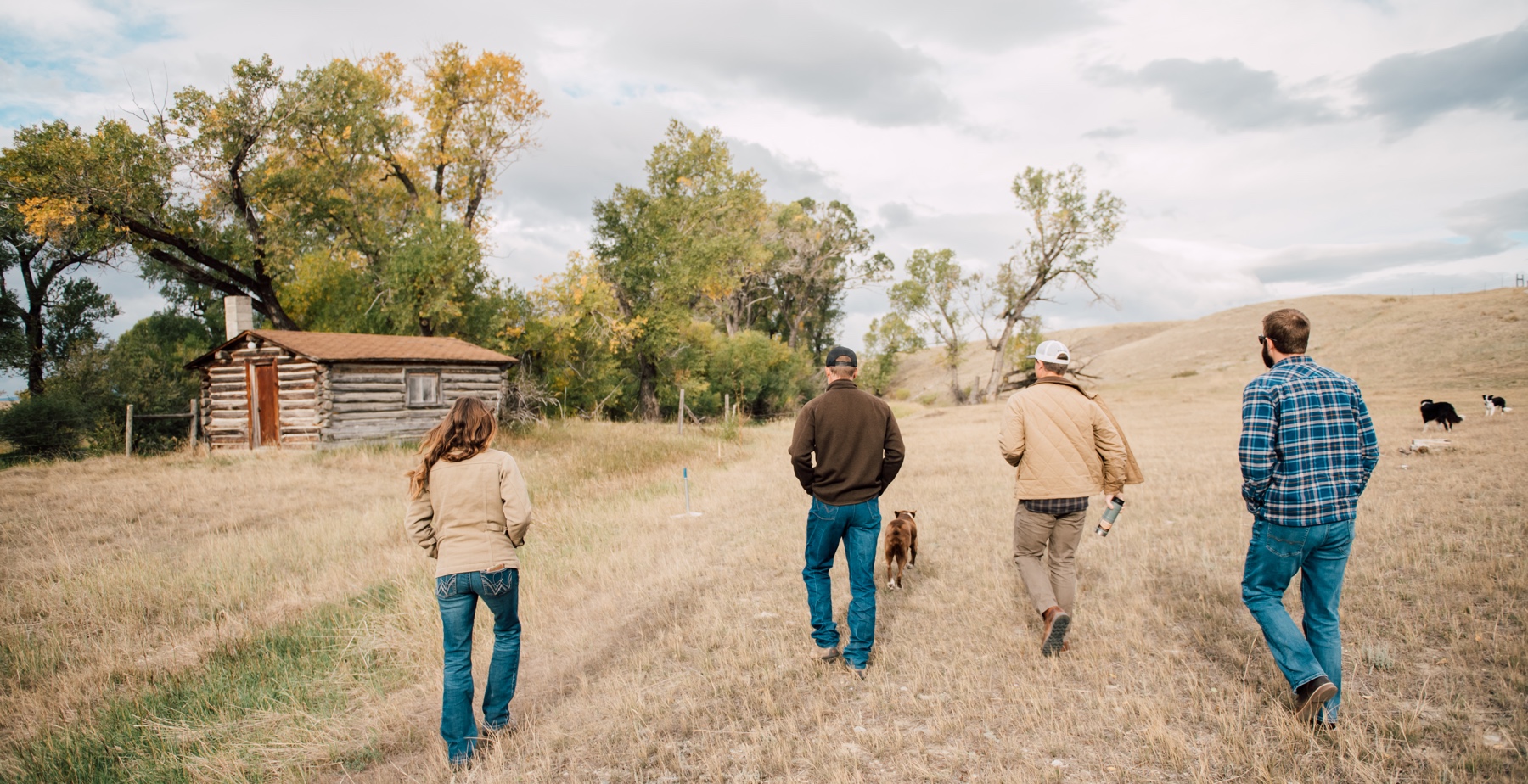
Cole Mannix is the President and Founder of the Old Salt Co-op, a new, purpose-driven company that “provides meat raised with integrity from Montana landscapes its customers know and care about.” Cole and his team partner with a growing number of Montana ranches, butchers, chefs, and businesses to connect customers and producers, while simultaneously encouraging and promoting a deeper understanding of land stewardship, community, and the interconnectedness of Montana landscapes.
Cole was born and raised in Montana, and he is a member of the fifth generation of the Mannix Family who has been stewarding their family ranch in Montana’s Blackfoot Valley since the late 1800s. Cole has followed a fascinating educational and career path, mixing his degrees in biology, philosophy, and theology with wide-ranging work in both entrepreneurial ventures and non-profit conservation work. And as you’ll hear in this conversation, the common thread that connects all of Cole’s experiences is a deep love and respect for the land and all that it can provide.
One of the most exciting projects that Cole is currently working on is the Old Salt Festival, a three-day festival taking place this June on the Mannix Ranch, just outside of Helmville, Montana. It’s much more than a music festival– it’s a celebration of land and land stewardship, and it will feature an eclectic mix of artists, authors, poets, storytellers, chefs and more. I’ll be at the event hosting some live podcast conversations, and there will be appearances by a number of past M&P guests, including singer-songwriter Riddy Arman, author-poet Chris Dombrowski, author-rancher Bryce Andrews, and more. Novelist David James Duncan will be reading, and chef Eduardo Garcia will be cooking. So we spend a lot of time discussing this event, its purpose, and how the whole idea came together.
This is a wonderful conversation about following your interests, working hard, and doing purpose-driven work that is connected to land and community. Check out the episode notes for a full list of all the topics we discussed, as well as links to the Co-op and this summer’s Festival. Thanks so much to Cole for joining me, and thanks to you for listening.
Photos courtesy of Cole Mannix and the Old Salt Co-op
LISTEN & DOWNLOAD:
Apple Podcasts
Spotify
Google Podcasts
… or wherever you get your podcasts!
—
RESOURCES:
Topics Discussed:
- 3:45 – Cole explains the Mannix family tree
- 5:45 – Cole discusses his family history
- 7:45 – Overview of the Old Salt Co-op
- 13:00 – Cole explains what motivated him to begin the Old Salt Co-op, and describes what it was like to leave a steady job to start something uncertain
- 17:45 – The value proposition that sets Old Salt Co-op apart
- 20:45 – The biggest obstacle/most important factor is for the business model of Old Salt Co-op
- 27:00 – The biggest surprises in the building of Old Salt Co-op
- 31:00 – How he stays focused and keeps track of real progress
- 33:45- The Old Salt Festival in more detail, including the musical, culinary, and land stewardship talent that will be featured
- 40:30 – Cole dives more into his career and backstory, including his interest and study in philosophy
- 45:45 – His career shift from teaching to entrepreneurship
- 53:45 – Lessons he learned from past business difficulties and how they inform his current enterprises
- 57:00 – Cole discusses what he does when he isn’t working
- 58:00 – Book recommendations
- 1:01:00 – Parting words of wisdom
Information Referenced:
- Cole Mannix
- Mannix Brothers Ranch
- Old Salt Co-op
- Old Salt Outpost
- Old Salt Festival
- Kate Mannix
- Helena, MT
- Helmville, MT
- Plant City, FL
- Sysco
- Food Services of America, Inc (owned by US Foods)
- Western Landowners Alliance
- Missoula, MT
- The Blackfoot River
- MeatEater
- This is Marketing by Seth Godin
- Austin, TX
- Portland, OR
- Build.com
- Hoodoo Mountain, MT
- Riddy Arman
- Jalan Crossland
- The River Why by David James Duncan
- The Brothers K by David James Duncan
- Debra Magpie Earling
- Jillian Lukiwski
- Cate Havstad
- Boulder, CO
- South Park, CO
- Campesinos
- Carroll College
- Ranching for Profit
- Executive Link
- Greeley, CO
- Fort Morgan, CO
- Denver, CO
- Country of Origin Labeling
- Shopify
- Horsefly, BC
- Pharis and Jason Romero
- On the Origin of Species by Charles Darwin
- Plato
- Allan Savory
- Small is Beautiful by E.F Schumacher
- Wes Jackson
- The Land Institute
- The Unsettling of America by Wendell Berry
- Jayber Crow by Wendell Berry
- Working Wilderness by Nathan Sayre
- Malpai Borderlands Group
- Blackfoot Challenge
- Jim Corbet
Enjoy this episode? Then you might like these too:
- Kate Mannix – A Legacy of Land Stewardship
- Amber Smith – Creating Connection & Community
- Riddy Arman – Artistic Authenticity
- Dr. David Hewitt – The Science of Wildlife Conservation
- Juanita Vero, Part 2 – A Deep Desire to Serve
- Daniela Ibarra-Howell – Healing the Land Holistically
- Land Tawney – Energetic & Optimistic
- Chris Dombrowski, Part 2 – “The River You Touch”
Visit the podcast page for a full, searchable list of episodes
Carlos Fernández, Part 2 – Creating Conservation Opportunities During Uncertain Times
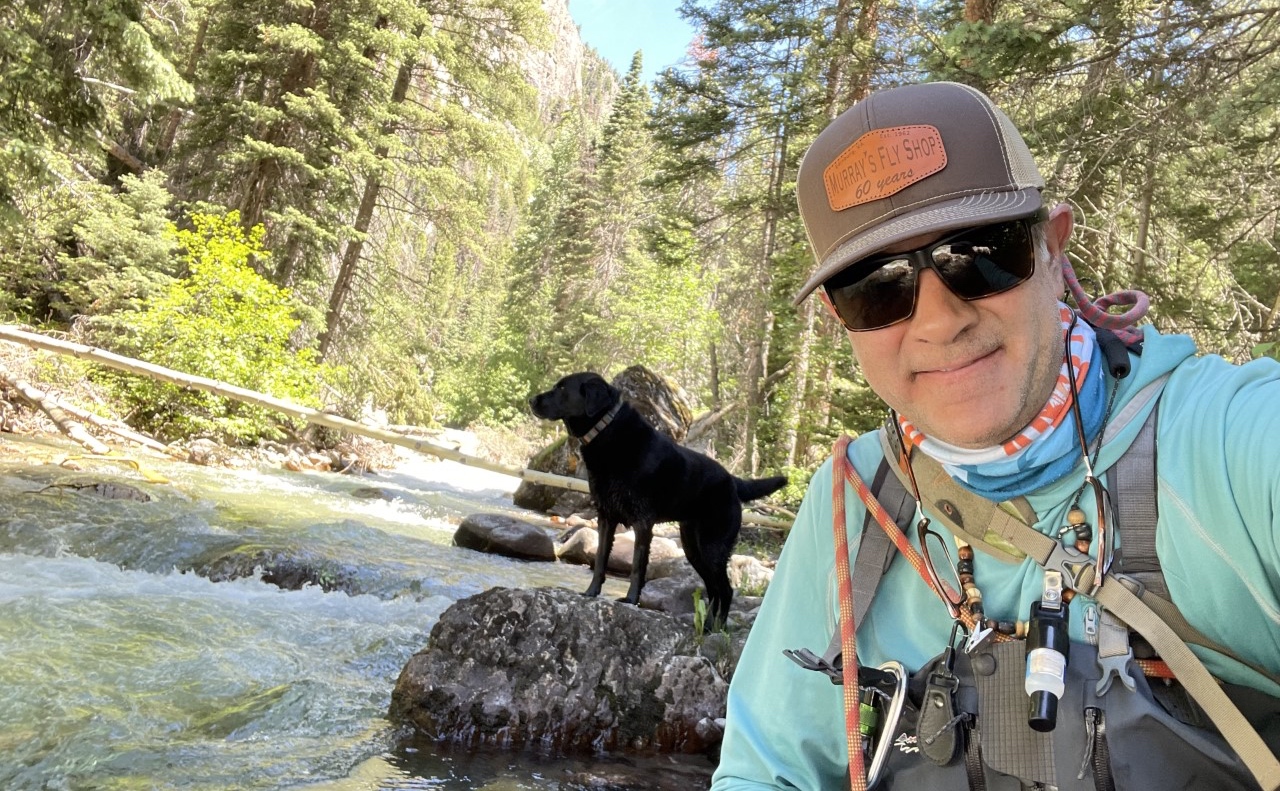
Carlos Fernandez is the Colorado State Director of The Nature Conservancy, one of the most effective conservation organizations in the American West and around the globe. You probably remember Carlos from our first conversation back in August of 2020, in which we discussed his inspiring career trajectory, the importance of collaborative conservation partnerships, and several of TNC’s cutting-edge initiatives throughout the West.
When we recorded that first episode, we were in the very early stages of the pandemic– a time marked by unprecedented uncertainty in almost every aspect of life. When we recorded today’s episode– nearly two-and-a-half years after that first conversation– the worst of the pandemic is now behind us. Carlos was able to look back on that trying period with some perspective, discussing the many challenges and opportunities that arose from such a difficult few years. This conversation is a case study of how critical work can be produced during challenging times, and how optimism, focus, and old-fashioned teamwork can lead to lasting outcomes.
Carlos and I met up at his office in Boulder and had an in-depth conversation about TNC’s conservation initiatives and collaborations over the past few years. I asked Carlos about his leadership strategies and tactics during the most intense days of the pandemic and what he and TNC learned from those challenges. We talk about Carlos’s recent 2022 year-end letter and TNC Colorado’s 2022 Year In Review, and we dig into several inspiring conservation victories from the past 12 months. We also revisit the Southern High Plains Initiative and the Yampa River Fund, and we discuss TNC’s future plans around climate change and diversity, equity, and inclusion. We also talk about this year-long partnership between TNC and Mountain & Prairie, which we are both very excited about.
A huge thank you to Carlos for taking the time to chat, and a huge thanks to all of you for listening. I hope you enjoy!
Photos courtesy of Carlos Fernández
LISTEN & DOWNLOAD:
Download on Apple Podcasts
Download on Spotify
Download on Google Podcasts
…or wherever you get your podcasts!
EPISODE PARTNER:
This episode is brought to you in partnership with the Colorado chapter of The Nature Conservancy. Guided by science and grounded by decades of collaborative partnerships, The Nature Conservancy has a long-standing legacy of achieving lasting results to create a world where nature and people thrive.
On the fourth Tuesday of every month throughout 2023, Mountain & Prairie will be delving into conversations with a wide range of The Nature Conservancy’s leaders, partners, collaborators, and stakeholders, highlighting the myriad of conservation challenges, opportunities, and solutions here in the American West. You can access all of the 2023 episodes here.
To learn more about The Nature Conservancy’s impactful work in Colorado and around the world, visit www.nature.org/colorado.
RESOURCES:
Topics Discussed:
- 3:00 – Carlos discusses the evolution of TNC Colorado during COVID
- 10:00 – Why the eastern plains and grasslands of Colorado are important and such a focus area of TNC Colorado’s work
- 12:00 – The power of partnerships in conservation work
- 14:45 – Why TNC Colorado feels it is important to focus on underserved and underrepresented groups in any work concerning climate change and conservation
- 19:30 – The importance of storytelling in conservation work
- 23:00 – How he and TNC prioritizes the focal points of their work, including who he seeks council from
- 30:45 – What he is excited about for TNC Colorado moving forward
- 33:30 – How he evaluates difficult choices and newest trends in conservation to ensure action is intentional and not controlled by external trends (not chasing every shiny object)
- 36:30 – What he thinks TNC Colorado’s role is in the state’s overall conservation sector, returning again to the importance of partnership and collaboration in this field
- 44:00 – The Yampa River Fund and updates us on its progress
- 49:45 – TNC’s relationships with businesses
- 53:00 – Advice for folks looking to work in conservation
- 56:00 – Carlos and Ed talk about the upcoming podcast series that Mountain & Prairie will be conducting with TNC Colorado
- 59:45 – Book recommendations
- 1:01:45 – Parting words of wisdom
Information Referenced:
- Carlos Fernández’s first interview – The Power of Partnerships
- The Nature Conservancy, Colorado
- Fishers Peak State Park
- Boulder, CO
- Steamboat Springs, CO
- Idaho Springs, CO
- Southern High Plains Initiative
- NRCS – Natural Resources Conservation Service
- TNC Colorado’s 2022 Year in Review
- Dust Bowl
- Colorado River Compact
- Southern Ute Indian Tribe
- Ute Mountain Ute Tribe
- Dr. Katharine Hayhoe
- RCN – Resilient and Connected Network
- Land Trust Alliance
- Great Outdoors Colorado
- Colorado Climate Plan
- Colorado Conservation, Outdoor Recreation, and Climate Resilience Planning
- Keep it Colorado
- Western Dry Forest and Fire Initiative
- Raton Pass
- Santa Fe, NM
- Trinidad, CO
- Colorado Department of Natural Resources
- Trust for Public Land
- Yampa River Fund
- Riparian area
- Yampa Valley Community Foundation
- Steamboat Ski Company
- Big Agnes
- Friends of the Yampa
- Eagle River
- San Juan River
- San Miguel River
- Telluride, CO
- Telluride Foundation
- Palmer Land Conservancy
- Colorado Outdoor Recreation Industry Office
- Smart Wool
- VF Corporation
- TNC Careers
- Next 100 Colorado
- Rick Ridgeway
- Saving Us by Catherine Heyho
- The Ministry for the Future by Kim Stanley Robinson
- Michael Bennet
- Joe Neguse
- David Gessner
- Mark Kenyon
- Steven Rinella
- Adam Gall
Enjoy this episode? Then you might like these too:
- Francesca Claverie – A Borderlands Conservation Success Story
- Nate Schweber – A Forgotten Chapter of American Conservation
- Pete McBride, Part 2: In Search of Silence
- Rick Ridgeway – Purpose-Driven Adventurer
- Land Tawney – Energetic & Optimistic
- Liz Moore – For the Love of Montana
- Kate Mannix – A Legacy of Land Stewardship
- Lesli Allison & Tuda Libby Crews – Durable Conservation in the West… and Beyond
Visit the podcast page for a full list of episodes where you can filter episodes by topic and guests’ vocations.
Christian Beamish – West Coast Craftsman

Christian Beamish is a writer, craftsman, surfboard shaper, and all-around adventurer who lives and works between Ventura and Carpinteria, California. He’s the author of one of my favorite books– The Voyage of the Cormorant– which tells his deeply personal story of building an open-hulled boat by hand and then sailing it down the Baja Peninsula alone, surfing and camping along the way. He’s also the owner of Surfboards California, where he hand-shapes a wide variety of custom boards for surfers of all skill levels.
Christian grew up in California, and for as long as he can remember, he’s been connected to the ocean and committed to building things. He’s lived an adventurous life that included a stint in the military, surf trips to the far reaches of the globe, and sailing trips up and down the Pacific Coast. And in addition to his work shaping surfboards and writing, he’s also a committed husband, father, and community member. I greatly admire how Christian manages to balance all of these sometimes-competing roles, and I gained a lot of valuable perspective from this conversation.
I met up with Christian in Carpinteria, just a few blocks from the Pacific Ocean, in a building that is home to several surfboard shapers and various creative folks. I’ve admired Christian’s writing for over a decade, so it was a dream come true to have the opportunity to spend the morning with him. We covered a ton in this hour-long conversation– his lifelong connection to the ocean and craftsmanship, lessons learned from the military, how he developed his skill for writing, his amazing book The Voyage of the Cormorant, fatherhood, dealing with intense emotions, the craft of shaping surfboards, favorite books and authors, and much more. You can check out the episode notes for a list of all the topics we discussed and links to everything.
A huge thanks to Christian for welcoming me into his shop, and thanks to all of you for listening. Hope you enjoy.
Photos courtesy of Christian Beamish
LISTEN & DOWNLOAD:
Apple Podcasts
Spotify
Google Podcasts
… or wherever you get your podcasts!
—
RESOURCES:
Topics Discussed:
- 4:00 – Christian talks about where he grew up
- 9:15 – What influenced his desire to build things
- 10:15 – Christian’s relationship with work
- 12:30 – His writing practice and talks about when writing came into his life
- 16:00 – Christian tangles with how his literary interests and writing reconcile with his service in the US Navy
- 17:15 – Overview of his book, The Voyage of the Cormorant
- 24:45 – Christian reflects on the person he was when he started the voyage that inspired his book
- 27:30 – The inner challenges he experienced during his voyage
- 31:30 – His strategies for dealing with emotional challenges
- 33:00 – How having kids has affected his life
- 38:45 – Christian describes the surfboards he designs
- 43:00 – His transition from more standard surfing to big wave surfing
- 50:45 – Christian and Ed briefly discuss skiing
- 54:30 – Book recommendations, and a discussion of his family’s history
- 1:01:00 – Parting words of advice for budding crafters and creators
Information Referenced:
- Christian Beamish
- Surfboards California
- The Voyage of the Cormorant by Christian Beamish
- Newport Beach, CA
- Orange County, CA
- Laguna Beach, CA
- Dane Kealoha
- Eddie Aikau
- Hokulea
- Seabee Battalion
- Gulfport, MS
- New Orleans, LA
- Cape Verde Islands
- Philippines
- Guam
- Pipe Masters
- Cabo San Lucas
- Baja
- Patagonia Books
- Ernest Hemingway
- Jack Kerouac
- Joan Didion
- The High Sierras
- Desolation Angels by Jack Kerouac
- Pigeon Point Lighthouse
- Halfmoon Bay
- Latin-rig boats
- Shetland
- The Surfer’s Journal
- Sabot
- Laser
- Tiller
- Balanced Lug Sail
- Back to the Future Part II
- Kelly Slater
- Ventura, CA
- Logan Hagege
- Concave bottom surfboards
- Duke Kahanamoku
- Heʻe Nalu
- Mavericks, CA
- Todos Santos
- UC Santa Cruz
- North Coast, CA
- McCoy Surf Designs, Greg Pautsch
- Greg Liddle
- Pintail surfboards
- Channel bottom
- Clinker boat building
- Danny Hess
- Cornice (snow)
- Santa Fe Ski Basin
- Concept of Aloha
- UC Santa Barbara
- Ireland Since the Famine by F.S. Lyons
- Skibbereen, Ireland
- County Cork
- Taranaki, NZ
- Irish Potato Famine
- Cape Fear River
- Patea, NZ
- The Royal Irish Armed Constabulary
- Ngāti Ruanui
- Iwi
- Hughes Aircraft
- The Life of Johnson by James Boswell
Enjoy this episode? Then you might like these too:
- Logan Maxwell Hagege – Artistic Evolution
- Jessica Lewis – Doing More With Less
- Peter Heller – Chasing the Flow
- Chris Burkard, Part 2 – Seeking Beauty Through Adventure
- Alvin Dedeaux – Living His Dream
- Frances Ashforth – Art, Water, and Wide-Open Spaces
- Chris Dombrowski, Part 2 – “The River You Touch”
- Steve Casimiro – Voice of Adventure
Visit the podcast page for a full, searchable list of episodes
Jess Mudgett – Humble & Grateful
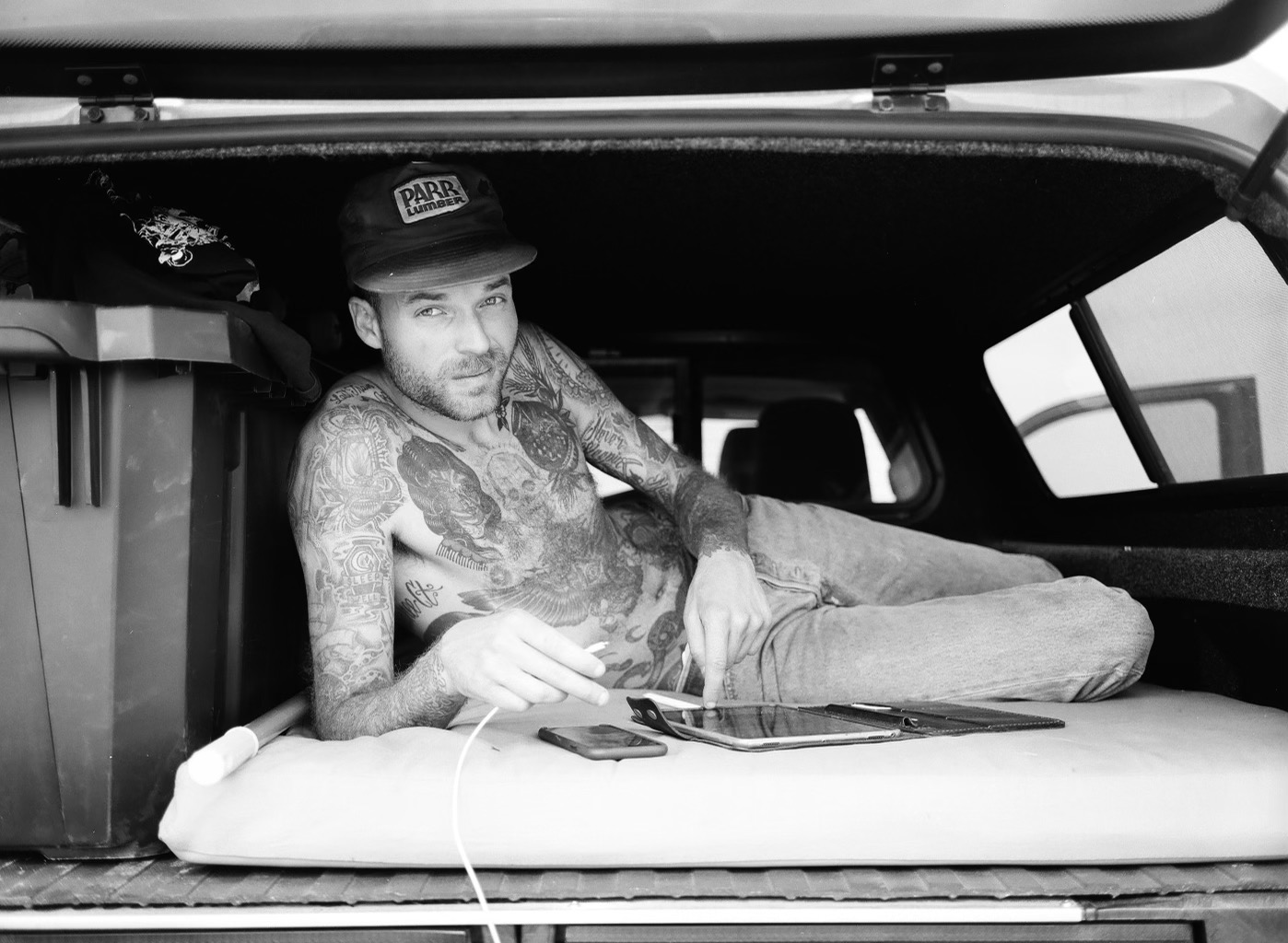
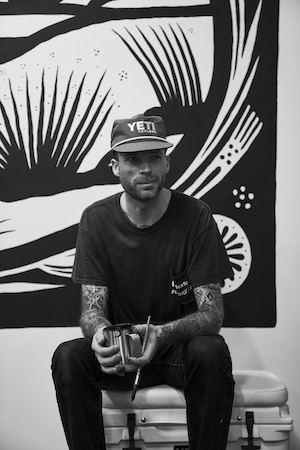
(photo credit: Dylan Schmitz)
Jess Mudgett is an artist, skater, surfer, and occasional ranch hand who specializes in one-of-a-kind designs that appear everywhere from murals in the rural West to the Yeti offices in downtown Austin. Fans of Jess’s work can spot his art from a mile away– he’s known for bold, often-times big portrayals of western landscapes, horses, birds, people, and more, all presented in a style that is uniquely his own. If you’re not familiar with Jess’s art, I’d encourage you to visit his Instagram page while listening– here’s a link.
Jess was raised in Fort Collins, Colorado, and grew up obsessed with and fully committed to skateboarding. While attending art school in Portland, he dropped out to go on a professionally funded skate trip, which ultimately led to getting his foot in the door with the art department of a skate company. After a few years, Jess returned to school to earn his degree, and his path as a professional artist was set. Currently, Jess is based in Portland, but spends big portions of the year traveling the West in his truck, creating art for a wide variety of well-known companies and individuals.
Jess and I met up at my house in Colorado Springs and had a fun conversation about his life as an artist. We started out discussing his upbringing in Fort Collins and how skating and art became the focus of his life. We discuss his creative process, his partnerships with popular brands, and his relationship with the renowned photographer (and past podcast guest) Chris Burkard. Jess describes his time working on Mark Carter’s Wyoming ranch, his lifestyle of living on the road, how he pushes through self-doubt, his love of tattoos, and some of the artists who have inspired him over the years. And what I loved most about this conversation was Jess’s overall vibe of deep gratitude and true humility– I think you’ll be inspired by his approach to life and art.
And as a surprise, Jess created a special Mountain & Prairie design that I know you’ll love– I sure do. I’m going to be offering this design on special edition t-shirts, stickers, and coffee mugs in the Mountain & Prairie shop. It’s an awesome design, and I’m honored that Jess took the time to create such a unique piece just for Mountain & Prairie listeners.
Once again, thanks for taking the time to listen. I hope you enjoy this conversation with the great Jess Mudgett.
Header photo by Mark Welsh, photo of Jess by Dylan Schmitz
LISTEN & DOWNLOAD:
Apple Podcasts
Spotify
Google Podcasts
… or wherever you get your podcasts!
—
RESOURCES:
Topics Discussed:
- 4:10 – Jess discusses growing up and the role his parents played in his childhood
- 6:00 – Jess talks about how skateboarding became a part of his life and art
- 7:15 – Jess discusses the next step in his life after high school: going to art school
- 13:45 – Jess and Ed talk about surfing
- 16:30 – Jess discusses his life after art school, including how he worked his way into NHS skate company
- 23:30 – Jess talks about his current lifestyle, including living out of his truck
- 26:45 – Jess discusses his stint working on a ranch at the beginning of COVID, as well as how it changed him
- 31:15 – Jess talks about how he manages his creative time
- 35:30 – Jess discusses his relationship with Chris Burkard, as well as why he thinks Chris has been so successful
- 41:45 – Jess talks about tattoos becoming a part of his life
- 43:45 – Jess describes his art as he sees it today
- 44:30 – Jess talks about the artists who inspire him
- 47:15 – Jess discusses self-criticism in his work
- 47:45 – Jess talks about how his relationship with Yeti began
- 51:00 – Jess talks about the times in his artistic career where he has felt like quitting
- 53:45 – Jess’s advice for your creatives
- 58:45 – Jess’s book recommendations
- 1:00:30 – Jess’s parting words of wisdom
Information Referenced:
- Jess Mudgett
- Fort Collins, CO
- Laramie, WY
- Charles Russell
- Jeremy Fish
- Shepard Fairey
- The Huberman Lab podcast
- Jocko Podcast
- NHS Inc.
- Geoff Rowley
- Rick Wittenbraker
- Mark Welsh
- Mark Carter
- Video of painting the abandoned building
- Monster Children
- Ten Sleep, WY
- Christian Beamish
- Callan Wink
- Ranchlands
- Chris Burkard
- Pismo Beach, CA
- Smith Optics
- Mark Maggiori
- Mike Giant
- Yeti
- Being Nixon by Evan Thomas
- Lonesome Dove by Larry McMurtry
- Blood and Thunder by Hampton Sides
- Blood Meridian by Cormac McCarthy
- The Alchemist by Paulo Coehlo
- Edward Abbey
Enjoy this episode? Then you might like these too:
- Chris Burkard, Part 2 – Seeking Beauty Through Adventure
- Pete McBride, Part 2: In Search of Silence
- Alvin Dedeaux – Living His Dream
- Riddy Arman – Artistic Authenticity
- Luke Smithwick – A Life in High Places
- Nicole Morgenthau – Curiosity & Creativity
- Jason Gardner – A Life of Purpose & Service
- Kelsey Johnson – Chasing Her Artistic Ambitions
- Iris Gardner – Living with Intention
- Kate Kavanaugh – Regeneration & Restoration
Visit the podcast page for a full, searchable list of episodes
2022 Reads
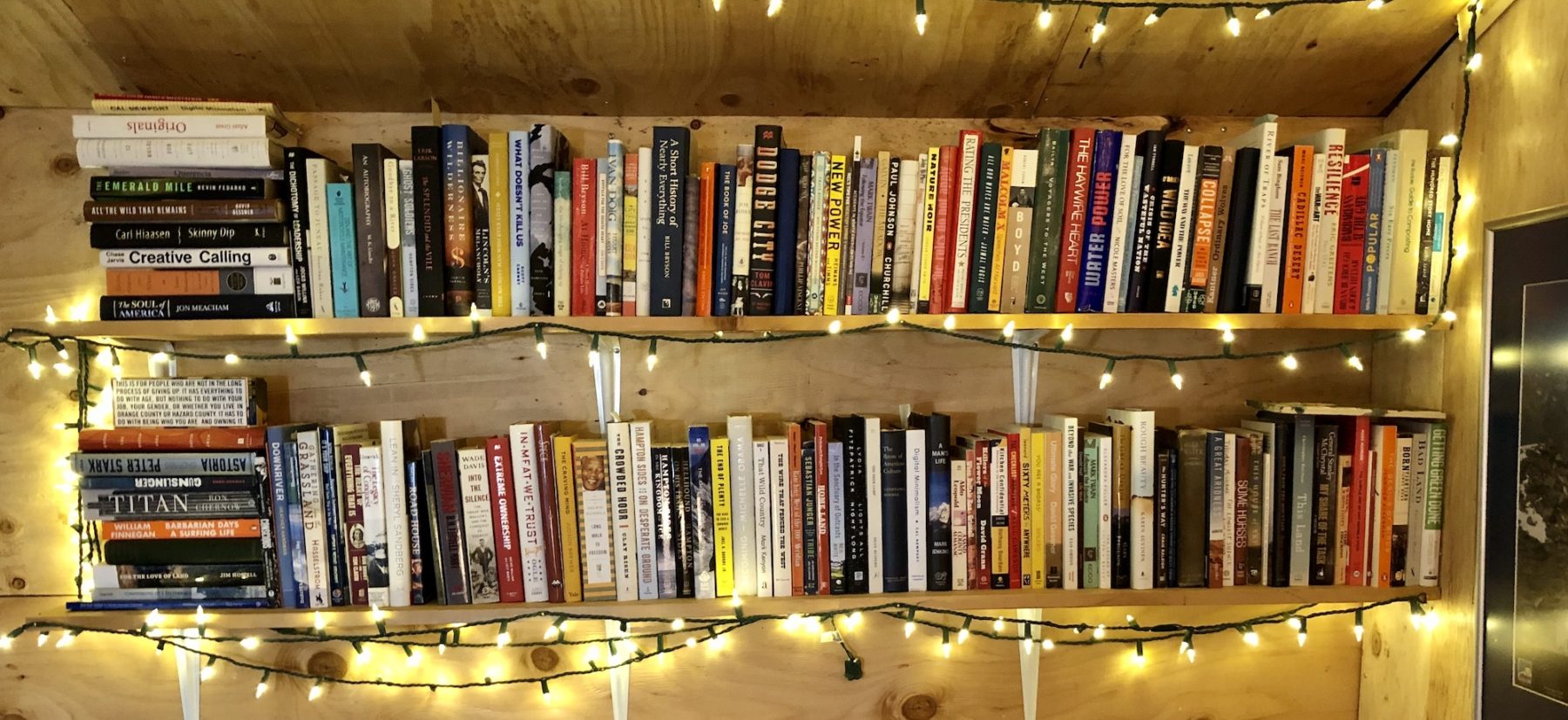
A comprehensive list of every book I recommended in 2022, taken directly from my bimonthly book recommendations email.
The Storyteller by Dave Grohl – While I’ve never considered myself a big-time Nirvana or Foo Fighters fan, I’ve always been intrigued by Dave Grohl– he struck me as a fascinating combo of hilarious yet sincere, wild & crazy yet down to earth. So I had high hopes for this memoir, and it surpassed all of my expectations. It’s Dave’s story of growing up a hyperactive kid in suburban Virginia, followed by his journey on the front lines of rock history–first as the drummer for Nirvana and then as the frontman for the Foo Fighters. It’s refreshing just how humble Dave seems to be– he writes as if he’s completely flabbergasted by his success and all of the rewards that accompany rock-stardom of the highest order. There’s nothing I love more than super-successful yet aggressively humble people. And if Dave Grohl can be humble and light-hearted, then there are very few (no?) people on earth who can claim the right to be arrogant. This is one of my all-time favorite memoirs. [Two others are Shoe Dog: A Memoir by the Creator of Nike by Phil Knight and Acid for the Children by Flea.]
Theodore Roosevelt: A Strenuous Life by Kathleen Dalton (the first half) – This 700+ page, microscopic-printed beast of a biography is on track to be my favorite TR book of all time. I had to take a break midway through to read other things; otherwise, this email would consist of only this one title. Dalton offers the most clear-eyed, detailed examination of TR’s personality and legacy that I’ve ever encountered– she does not get caught up in the hero-worship or mythology that often accompanies almost every other TR biography. She busts countless common TR myths and explores many of his often-ignored personality flaws. She also lays out the critical role that his wife Edith played in all aspects of his success, and how she often acted as the calming counterbalance to his sometimes self-sabotaging, shoot-from-the-hip demeanor. I don’t have anything in common with superheroes, but I can relate to mere mortals– so understanding TR as a flesh-and-blood human being who struggled with everything from his health to his self-confidence has only increased my admiration for the man. Stay tuned for my thoughts on the second half of the book. [For another clear-eyed look at TR, but one that is much more fun, funny, and easy to read, check out another of my TR favs: David Gessner’s Leave It As It Is: A Journey Through Theodore Roosevelt’s American Wilderness.]
Wayward by Chris Burkard – I was lucky enough to receive an advanced copy of this, Chris’s newest book, and it did not disappoint. It’s a collection of some of his best and never-before-seen photographs from the wildest places on earth. It also features extensive written stories detailing his fascinating career path and the challenges, mistakes, and adventures that made him into the artist he is today. The photographs are obviously stunning, but what I really appreciated was Chris’s willingness to share the lessons he’s learned along his professional journey– lessons that anyone can apply to their own creative endeavors, whether that’s photography, writing, music, or any art. I’ll be proud to display this book on my shelf for many years to come. [For another top-notch book that combines words and photographs, check out Pete McBride’s The Grand Canyon: Between River and Rim.]
The Voyage of the Cormorant by Christian Beamish: I first read this book back in 2015, but recently picked it up off my shelf and was immediately sucked back in for a second reading. It’s the story of California-based surfboard shaper and all-around craftsman Christian Beamish, who builds an 18-foot, open-hulled sailboat by hand– a boat he christened “The Cormorant.” Then, despite having no sailing experience, he takes The Cormorant on a surfing and sailing adventure down the coast of Baja, experiencing the power of the ocean and desert landscapes in a unique, at-times intense, life-changing voyage. The book melds together many genres I love: memoir, adventure narrative, natural history, and nature writing. So, if you’re drawn to tales of solo adventures, surfing, sailing, and/or substantive introspection, this is your book. [For a different kind of sailing adventure, check out In the Heart of the Sea: The Tragedy of the Whaleship Essex by Nathaniel Philbrick.]
Buck, Buck, Moose: Recipes and Techniques for Cooking Deer, Elk, Moose, Antelope and Other Antlered Things by Hank Shaw and The Complete Guide to Hunting, Butchering, and Cooking Wild Game: Volume 1: Big Game by Steven Rinella – In early January, I headed over the Continental Divide to Colorado’s Western Slope for my first-ever elk hunt. As a 44-year old longtime meat-eater (who has experimented with vegetarianism and veganism), I decided it was long past time for me to participate in all of the actions required to procure meat for my family. Long story short, my successful hunt and the act of processing the elk into 150+ pounds of healthy, organic meat completely upended my thoughts around food. I went from caring a little as possible about cooking to becoming obsessed with where my meat comes from, how it is processed, and specific techniques for cooking it. Both of these books came highly recommended by many of my food-obsessed hunter friends, and my wife and I have been referencing them weekly. Hunting is obviously not for everyone, but if you’re a meat-eater who wants to play a more involved role in procuring and preparing your food, look no further than these two titles. [For those who want the full story of the hunt, you can check out this podcast episode: Reflections On My First Elk Hunt, with Adam Gall.]
Saltwater Buddha: A Surfer’s Quest to Find Zen on the Sea by Jaimal Yogis – I reread this book at least once every other year– not according to any predetermined schedule, but because I often think of it, pick it up and begin leafing through it, then find myself reading the entire thing. The book traces the author’s journey from juvenile delinquent runway to a Buddhist monk in training to a fully committed soul surfer. Combining two of my life’s most life-improving activities–meditation and surfing–Saltwater Buddha is a much of a coming-of-age travelogue as it is an examination of Buddhist philosophy and the life-changing benefits of exploring one’s mind. [Love surfing adventures, but prefer less spirituality and more unsettling intensity and darkness? Then pick up a copy of In Search of Captain Zero: A Surfer’s Road Trip Beyond the End of the Road by Allan Weisbecker.]
And finally, for the past few months, I’ve been writing up monthly book recommendations for my friends at Ranchlands, all of which have been published on their excellent blog, The Ranchlands Review. Each month, I focus my recommendations on a different theme, offering five or six books that have been important to me over the years. If you’re not already “booked out” by this point in the email, you can check out all of the themes and associated recommendations here: Transition, Scale, Symbiosis, Time, Expertise, and Place… with more to come!
Closer to the Ground: An Outdoor Family’s Year on the Water, in the Woods, and at the Table by Dylan Tomine – Up until very recently, I could not have cared less about food. Weirdly so. All of my close friends thought it was extremely bizarre how little thought I put into the taste or preparation of my meals. But this past January, I procured and processed 150 pounds of clean, organic meat via my first elk hunt, and now I’m obsessed with the idea of nature-to-table eating. So, it was perfect timing when Closer to the Ground appeared at my doorstep soon after my conversion into this hunter/gatherer state of mind. Closer to the Ground is the story of the Tomine family’s commitment to filling their fridge, freezer, and pantry with food that they procured with their own hands, sustainably and respectfully, from the landscapes of the Pacific Northwest. After seeing my own kids’ curiosity around our now twice-weekly elk dinners, I was especially drawn to Dylan’s descriptions of teaching his children and their process of developing a deep relationship with the land. An important book that I will read again. [Another excelllent growing-your-own-food book is Animal, Vegetable, Miracle by Barbara Kingsolver.]
Headwaters: The Adventures, Obsession, and Evolution of a Fly Fisherman by Dylan Tomine – I enjoyed Closer to the Ground so much that I dove immediately into this, Dylan’s newest book. Headwaters is a collection of essays and stories from his life as a self-proclaimed fly fishing bum, a journey that has taken him from his home in the northwest to the far reaches of the globe and back again. I’m not a hardcore angler, yet I still felt a deep connection to the book– it’s an important read for anyone who loves wild places and our natural resources and feels drawn to protect them. And as is the case with everything published by Patagonia Books, Headwaters offers much more than just powerful writing. The book is filled with one-of-a-kind paintings of water, skies, and fish– all created by artist-angler Frances Ashforth. Come for the writing, stay for the paintings, and proudly display Headwaters on your shelf for many years to come. [Two other fishing books that I recommend time and again are Body of Water by Chris Dombrowski and Lords of the Fly by Monte Burke.]
Why Honor Matters by Tamler Sommers – When I saw that one rich movie star slap the other rich movie star, my first non-sad thought was recalling a podcast I’d heard a while back about “honor cultures.” I remembered an interview with philosopher Tamler Sommers, who wrote a book about why certain people go to great, even violent, lengths to protect their family’s “honor.” So I bought the book, which compares and contrasts “honor cultures” with “dignity cultures.” He makes a surprisingly compelling (to me) argument that we humans living in wealthy, cushy countries have become worse off as we have made efforts to eliminate the importance of honor in society. Sommers argues that by outsourcing rule-making, enforcement, and punishment to unbiased third parties, society suffers widespread, unexpected negative consequences. While I do not agree with every aspect of his analysis (especially the weird part about bike helmets), this book made me think, consider his point of view, and stress-test my own ideas, which, after all, is the whole point of reading all these dang books. [In this book, Sommers references one of my all-time favs: Tribe: On Homecoming and Belonging by Sebastian Junger.]
American Zion: Cliven Bundy, God & Public Land in the West by Betsy Gaines Quammen – This book had been high on my need-to-read list since its publication back in the spring of 2020. Nearly all of my friends who work in public lands conservation/advocacy had repeatedly told me that I needed to read it immediately. Well, I quit procrastinating and finally did, and I loved it. It’s the story of the Mormon settlement of the American West, and how certain subsets of the religion have shaped many of the present-day battles over public lands around the country. What I appreciated most about American Zion is how it connected the dots between the many books, podcasts, and articles I’ve consumed over the years about everything from the Mormons’ cross-country journey in search of their “Zion,” all the way to the recent Malheur Wildlife Refuge occupation by the Ammon Bundy and his lackeys. The book offers a clear, fair narrative that gave me a new appreciation for the power of belief and the ripple effects that a few charismatic individuals can have on entire societies. [Under the Banner of Heaven is an intense, eye-opening read, as is everything Jon Krakauer writes.]
Fear: Essential Wisdom for Getting Through the Storm by Thich Nhat Hanh – The world lost a once-in-a-generation teacher when Thich Nhat Hanh passed away in January. I’ve read a ridiculous number of books by a wide range of Buddhist teachers, and TNH is one of the most prolific and wise authors in the genre. If you’ve read much of his work, then you’re familiar with the structure of Fear: sparse yet powerful prose, short chapters, a strict economy of words, and simple-but-not-easy techniques for managing fear in our daily lives. He blends Buddhist principles with practical advice, packaging it all in a format that can be consumed in one sitting or over the course of a year. TNH seems to have written a book on every human weakness imaginable, so if you’re a tough guy who’s got fear completely under control, perhaps you could use some help with Anger. But regardless, if you are interested in better understanding your mind, I recommend checking out all things TNH. [Two other extremely wise teachers worth checking out are Pema Chodron and Tara Brach.]
Lying by Sam Harris: This is more of an essay than a book, and I try to re-read it at least every other year. In it, Harris makes a rock-solid case for never lying. No white lies, no little fibs to make people feel better about themselves. None. Ever. To be clear, he is not advocating for uncontrollably blurting out whatever unfiltered, half-baked opinion enters your brain. He’s simply committed to being 100% honest, 100% of the time. I initially read this essay eight years ago, and I still think of it often. Reading it would be a good use of an hour of your time. [Another short Sam Harris book that’ll make you think is Free Will.]
Life Lived Wild: Adventures at the Edge of the Map by Rick Ridgeway – Back when I was in college, I read Rick Ridgeway’s book Seven Summits, which opened my eyes to the then-crazy idea that an average person like me could slog up some of the world’s highest peaks. So when I heard Rick was publishing a memoir about his life of adventure and exploration, I impatiently and excitedly awaited its publication. And it was well worth the wait– the book recounts Rick’s mind-blowing exploits everywhere from the summit of K2 to the jungles of Borneo and many wild and dangerous places in between. But what I loved most about Rick’s life story is how he gradually shifted away from pursuing adventure for adventure’s sake and began using his skills as an athlete and explorer to advance more purpose-driven causes, including wildlife conservation and environmental advocacy. If you’re fascinated by humans who are equal parts ambitious, humble, and driven by motivations greater than themselves, this is your book. [And thanks to the great folks at Patagonia Books, I was able to sit down for an hour-long conversation with Rick– a dream come true.]
The End of Night: Searching for Natural Darkness in an Age of Artificial Light by Paul Bogard – I love books that open my eyes to ideas or phenomena that have been “hiding in plain sight” for most of my life– books that allow me to see parts of the world from a completely new and different perspective. It only took a few chapters of The End of Night for me to realize just how much artificial light dominates our daily lives and what a new and crazy phenomenon it is. (How had I never considered this!?) In a fun and easy-going style, Bogard lays out the relatively recent history of artificial light and how its prevalence in the world has exploded over the past few decades. Darkness used to be a fact of life– something we humans had to work around. But now, thanks to the world’s expanding resources and technology, darkness is something to be eliminated, or at least suppressed. I especially enjoyed Bogard’s exploration of why we humans need darkness, myths connecting safety with light, and the myriad of health challenges resulting from being perpetually blasted by artificial light. A fun and informative book. [Another perspective-shifting book is What Doesn’t Kill Us: How Freezing Water, Extreme Altitude, and Environmental Conditioning Will Renew Our Lost Evolutionary Strength by Scott Carney]
Seeing Silence: The Beauty of the World’s Most Quiet Places by Pete McBride – As I was reading The End of Night, I kept thinking, “I want to read a book about how human-caused noise dominates our lives.” And then, a few days later, as if the good folks at Rizzoli had read my mind, Seeing Silence arrived on my doorstep. It’s Pete McBride’s latest coffee-table-style book, one that combines his decades of experience photographing some of the earth’s wildest places with his top-notch writing on the ideas of silence and natural sound. From Himalayan glaciers to the African grasslands, Pete has experienced regions of the world completely void of man-made noise. And as expected, he does a wonderful job explaining why we humans are drawn to such wild and natural places. Pete wrote much of this book during the early stages of the pandemic, so the book also includes some eerie images of New York City during its most quiet moment. Seeing Silence is a book I’ll proudly display on my shelf and revisit often. [Another of my favorite coffee table books is Galen Rowell: A Retrospective.]
Poison: Sermons on Suffering by Mark F. Twight – When I first read renowned alpinist Mark Twight’s masterpiece Kiss of Kill, I didn’t connect with it. I’d heard it praised time and again by some of the world’s greatest climbers, but I did not understand what all the hype was about. Then, a few years later, after two trips deep into the Alaska Range where I learned the true meaning of “cold,” I re-read it. It was as if I was reading a different book– I connected with Kiss or Kill in a big way and quickly understood its genius. Poison is Twight’s newest book, a self-published collection of some of his most intense and incisive essays from the past decade+. The essays’ bare-bones titles will give you a idea of the no-nonsense themes of the book: Revolt, You Haven’t Earned It, Weakness, Mental Toughness, The Struggle, Go Down Fighting… you get the idea. While I’ll never be as tough or single-mindedly committed at Twight, I do glean great value from trying to understand his operating system– his personal code of conduct built around the ideas of hard work, no shortcuts, and clear-eyed, ruthless self-examination. [Another book that I initially dismissed but then connected with years later is The Rise of Theodore Roosevelt by Edmund Morris, the most important book I’ve ever read.]
Tribe: On Homecoming and Belonging by Sebastian Junger – I re-read Tribe at least once per year, and I review my highlights and underlined passages every few months. The more I revisit this book and the crazier the world seems to become, the more I appreciate just how clearly Junger has identified the primary source of many of our societal woes: A glaring lack of community and purpose. Since I’ve re-recommended this book at least a dozen times, I won’t rehash its details here. But if you are as perplexed as I am about the current state of our culture, this book will help you understand how things got off track and what you can do to stabilize your own little corner of the world. [And speaking of finding peace in your corner of the world, I’ll once again recommend Pema Chodron’s work, specifically Comfortable with Uncertainty: 108 Teachings on Cultivating Fearlessness and Compassion.]
Man’s Search for Meaning by Viktor E. Frankl – Yet another annual re-read that becomes more powerful and useful with each passing year. If Frankl can find happiness and contentment while awaiting execution in a Nazi-controlled concentration camp, it’s hard for me to feel sorry for myself in the face of unpleasant news or typical 21st-century day-to-day challenges. A short and powerful book that I believe every human above the age of 16 should read. [For a daily attitude adjustment, I recommend The Daily Stoic: 366 Meditations on Wisdom, Perseverance, and the Art of Living by Ryan Holiday.]
This America Of Ours: Bernard and Avis DeVoto and the Forgotten Fight to Save the Wild by Nate Schweber – Having read extensively about many aspects of the North American conservation movement, I figured I had a decent understanding of all of the key historical players. WRONG! After just a few chapters of This America of Ours, I discovered a massive blank spot in my mental map of conservation history, specifically the time between TR and FDR’s conservation efforts and the modern-day environmental movement. Situated prominently in the epicenter of that critical period were the DeVotos, a formidable power couple who are credited with spearheading some of the most important conservation victories of the 1950s. They locked horns with J. Edgar Hoover, Joseph McCarthy, and other infamous Washington DC bullies– but they never backed down and thankfully emerged victorious. As the subtitle states, this is a mostly “forgotten” time in the history of the West that needed to be revisited… so thank you, Nate! [I was lucky enough to chat with Nate about the book a few weeks ago, and I also recommend Sara Dant’s Losing Eden: An Environmental History of the American West.]
Wilted Wings: A Hunter’s Fight for Eagles by Mike McTee – As a newly minted big game hunter who fancied himself well-educated on most of the conservation issues in the West, I never once considered the detrimental impacts that lead ammunition has on eagles. Yes, I understood lead’s effect on waterfowl and the steps that were taken to remedy that damage. Still, I had (embarrassingly) never considered how lead makes its way from successful big game hunts and into the bloodstreams of these majestic raptors, eventually debilitating or killing them in an excruciating manner. In a mere 146 pages, McTee lays out this hiding-in-plain-sight issue, explains how we got here, and offers some reasonable, doable solutions that could solve the problem. I predict that years from now, we’ll look back on McTee’s book, as well as the groundbreaking work of scientists like Vince Slabe, as the catalyst for bolstering the populations of these iconic birds. [For more thoughtful, level-headed writing about hunting, conservation, public lands, and food, check out the Backcountry Journal from the good folks at Backcountry Hunters and Anglers.]
The Psychology of Money: Timeless Lessons on Wealth, Greed, and Happiness by Morgan Housel – I heard Housel on the Making Sense podcast and immediately ordered his book. Presented in 20 bite-sized, easy-to-read chapters, Housel lays out just how bizarrely we humans act when managing money, saving, or investing. He argues that our decisions around money– no matter how rational we believe them to be– are directly connected to our individual experiences and hard-wired personalities. He also offered some new-to-me perspectives on risk and the drivers of greed. More of a study of weird human behavior than financial theory, this book provided actionable insights that will (hopefully) help me approach all things Ca$h Money with a more rational mindset. I’ve long said that financial advisors and real estate agents should ignore business classes and instead study psychology, and this book seems to confirm my thinking. [For another book about how money makes people nutty as hell, read Justin Fox’s The Myth of the Rational Market: A History of Risk, Reward, and Delusion on Wall Street.]
The River You Touch: Making a Life on Moving Water by Chris Dombrowski – Ever since reading Body of Water back in 2017, I’ve been excitedly (impatiently!) waiting for Dombrowski’s next book. He’s a poet, author, fly fishing guide, upland bird hunter, conservationist, teacher, committed father and husband, and all-around thoughtful dude– if you lay out all these descriptors on a Venn diagram, the area of common overlap makes him exactly the kind of guy whose books I want to read. In The River You Touch, he take us on his personal journey from his home in Michigan and through his process of building a home and life in Missoula, Montana. From his profound connection to the West’s rivers and mountains, to his partnership with his wife, to the joys and uncertainties that accompany parenthood, Dombrowski has written a beautiful, poetic meditation on topics that are all near and dear to my heart. Awesome book, hitting shelves in early October. [For more soulful explorations of water and wild landscapes, check out Headwaters: The Adventures, Obsession and Evolution of a Fly Fisherman by Dylan Tomine.]
Sins of the Founding Father: George Washington, the Indigenous Tribes, and the Decisions that Shaped America’s Future By Peter Stark – Based exclusively on how he looked in portraits, I always assumed that George Washington was a buttoned-up, prim-and-proper colonial gentleman who approached all conflicts with the calmness and level-headedness of the Buddha. Once again, WRONG! Turns out, he was a bit of a wild man in his youth, and, throughout his entire life, he worked desperately to balance his personal ambition with his duty to his new country. In this short, 70-page e-and-audio book from Scribd, Stark provides a fascinating glimpse into the first President’s psyche and illuminates how the United States’ insatiable hunger for land drove almost every critical decision during the republic’s early years. Washington’s harsh choices in the aftermath of a deadly 1791 battle set the course for most of the unjust and violent policies against Native Americans for the next century and beyond. An eye-opening, quick read. [Peter Stark’s Astoria: John Jacob Astor and Thomas Jefferson’s Lost Pacific Empire: A Story of Wealth, Ambition, and Survival is one of my all-time favs.]
The War of Art: Break Through the Blocks and Win Your Inner Creative Battles by Steven Pressfield – I first read this book more than a decade ago, and I’ve revisited my underlined passages countless times over the years. Now that I’m all-in on creative work, I decided to read it again, front-to-back, cover-to-cover. Much to my surprise, I got more out of it this time than I did 10+ years ago. Pressfield’s descriptions of The Resistance– that invisible force that keeps us from pursuing meaningful creative work– hit harder now than ever before. Perhaps because I’ve spent the past 7+ years in a knock-down-drag-out fight with the Resistance, I now have first-hand experience with just how ruthless it can be– and appreciate Pressfield’s explanations even more. Whether you’re a wanna-be creative or a battle-scarred professional artist, this book is the gift that keeps on giving. [Seth Godin’s Linchpin: Are You Indispensable? also receives my highest praise.]
When McKinsey Comes to Town: The Hidden Influence of the World’s Most Powerful Consulting Firm by Walt Bogdanich and Michael Forsythe – I heard these authors interviewed on Fresh Air, and I ordered the book immediately. The book is predictably described as “explosive” and “devastating,” but, really, I wasn’t all that surprised by its findings– just another case in a long list of big-time businesses that lost their way while chasing the big bucks. What I gleaned from this book is not that McKinsey is a company full of scumbags– I have many friends who have worked there who are most definitely not bags of scum. Instead, the book offered me new insights into how and why many (most?) of the incentives of 21st-century mega-business are not aligned with behavior that has traditionally been accepted as respectable or values-driven. If you’re looking to be outraged by a few horror stories of McKinsey “turbo-charging” opioid sales, then listen to the podcast. But if you want to think a little more deeply about the incentive structures of American and global commerce, read the book. [This book reminded me of business school, which reminded me of The Art of Strategy: A Game Theorist’s Guide to Success in Business and Life by Avinash K. Dixit and Barry J. Nalebuff.]
The Prepared Leader: Emerge from Any Crisis More Resilient Than Before by Erika H. James and Lynn Perry Wooten – I read this book as part of a book discussion group that I was invited to join– a group that I quickly realized was made up of people who were all exponentially smarter than me. But despite my intellectual inability to contribute to the discussion, I gleaned quite a few valuable lessons from the book. Most notably, the need to frame all crises as opportunities– opportunities to learn, adjust, re-calibrate, or change course completely. Also, I appreciated the authors’ focus on the importance of seeking out opinions that clash with our own, so as to expose blind spots in our thinking. The book discussion also helped me to remember that many of my proudest personal and professional achievements grew out of some event that, at the time, I considered a crisis. A potent, quick read that adds value whether you lead a huge team or are a lone wolf like me. [Another guidebook for productively weathering life’s storms is When Things Fall Apart: Heart Advice for Difficult Times by Pema Chodron.]
I was a bit distracted over the past few months, thanks in part to a lot of fun-but-time-consuming work travel. Whenever I’m on the go and struggling to finish normal books, I turn to short story compilations to keep the reading momentum going (and to keep me off of my silly phone). One that was highly recommended by many friends was The Lone Ranger and Tonto Fistfight in Heaven by Sherman Alexie. The few stories I read made me chuckle uncontrollably while simultaneously feeling very sad for many of the characters and their circumstances. The stories also further hammered home the point of how ridiculously destructive alcohol abuse can be to communities. First and Wildest: The Gila Wilderness at 100, edited by Elizabeth Hightower Allen, is a collection of stories and reflections related to America’s first wilderness area, New Mexico’s half-a-million-acre Gila Wilderness. There are essays from Tom Udall, Martin Heinrich, and Pam Houston, and I look forward to reading every one of them. But for now, I especially enjoyed past podcast guest Gabe Vasquez’s essay, in which he highlights the importance of exposing under-served youths to the marvels of wild places. [When it comes to compilations, it’s hard to beat John Branch’s Sidecountry: Tales of Life and Death from the Back Roads of Sports.]
And speaking of shorter, bite-sized reads, I recently teamed up with the social reading app Threadable to lead a reading Circle on the topic of Conservation in the American West. What makes Threadable unique is that the readings are short– 20-to-25-page chapters from specific books– so you don’t have to read an entire book to participate in the discussion. The first reading I’m featuring is Chapter 1 of past podcast guest Dr. Sara Dant’s book Losing Eden: An Environmental History of the American West. This chapter provides an overview of the very early human migration into North America all the way up to just before Europeans descended on the continent. Two weeks from now, we’ll be reading Chapter 8: Indian Country from Roxanne Dunbar-Ortiz’s An Indigenous People’s History of the United States. The app and readings are FREE, the founders are cool, McKinsey does not advise them, and I’d love to have a few of you join me to virtually discuss books and conservation in the West. Open this link on your phone to join the Circle! [Sorry Android amigos, this is for iOS only.]
Endure: How to Work Hard, Outlast, and Keep Hammering by Cameron Hanes – For those not familiar, Hanes is a renowned bowhunter and legit ultrarunner, having completed many difficult mountain trail races, including the Moab 240. I was feeling bored with my normal podcast rotation, so I downloaded this audiobook on a whim, hoping for a jolt of motivation to help me ramp up my exercise routine. The book delivered the jolt (which was followed by debilitating soreness), but what I most enjoyed was learning about the non-physical aspects of Hanes’ life– particularly the long and grinding process that he endured in order to finally become a published author. Over and over throughout the book, Hanes repeats that he is not talented or smart or special in any way, with one exception: He is world-class at working hard. Whether or not I agree with his politics or connect with his demeanor, I do appreciate and respect his commitment to embracing the long-term grind. As a non-talented dude myself, I’m always happy to be reminded that hard-hardheaded hard work can also produce results. [Another audiobook that is over-the-top but surprisingly motivating is Can’t Hurt Me: Master Your Mind and Defy the Odds by David Goggins.]
15-Second Recipes: A Cookbook for Busy People by Brendan Leonard – Are you busy? Do you need to eat? Like to laugh? Looking to optimize your life far beyond anything Tim Ferriss can offer? This is your book. Hurry! Order it! Hurry!
The Majic Bus: An American Odyssey by Douglas Brinkley – Like many history buffs, I have long considered Brinkley to be my own personal history professor. Specifically, I owe him for teaching me everything there is to know about Theodore Roosevelt’s conservation legacy and for creating much of the source material for my understanding of public lands. So, in preparation for my interview with him, I wanted to understand the foundations of Doug’s career as an educator. This book is the story of the then-31-year-old Professor Brinkley, leading a busload of Hofstra University students on a six-week, cross-country road trip where they immersed themselves in the complex, perpetually fluid culture and history of the United States. From Washington DC to the Badlands of North Dakota to the Redwood forests of Northern California, Brinkley rejects textbooks and memorization and instead provides an opportunity for these students to truly understand US history– with all its warts and confusion and contradictions. Even if you don’t read the entire book, his introductory warning about the risks of “historical reductionism” is worth reading and is more important now than ever. [In our podcast conversation, Doug and I talk about how teaching is the foundation of all of his work.]
Silent Spring Revolution: John F. Kennedy, Rachel Carson, Lyndon Johnson, Richard Nixon, and the Great Environmental Awakening by Douglas Brinkley – It had been way too long since I tackled a serious, super-long history book, and this one reminded me of just how much I love the work of world-class historians. This 800-page+ tome examines the third wave of conservation in the United States, a movement that spanned three presidents and birthed our nation’s modern-day environmental consciousness. What I did not realize is that a single individual was the catalyst for our environmental awaking (and the laundry list of associated bipartisan conservation legislation). That individual? Rachel Carson– ocean lover, marine biologist, prolific writer, and author of Silent Spring. While I loved learning more about JFK, LBJ, and Nixon, I was especially inspired by the idea that a single “normal person” like Carson can be such a powerful force for change and can shift the trajectory of the world toward good. [To understand the first two waves of American conservation, read Brinkley’s Wilderness Warrior and Rightful Heritage.]
Fight Club: A Novel by Chuck Palahniuk – I spent all of December laid up recovering from shoulder surgery, with the first half of the month spent bumbling around in a low-grade painkiller-induced haze. My altered brain chemistry is the only explanation I can come up with as to why I decided to read this book– I’m generally not a fan of dark, weird, disturbing satire. But I loved it. The novel digs into themes that are much more pressing and in-your-face today than they were when it was published back in 1999: Young men’s failure to find purpose in modern-day, cubicle-based work, the need for “right of passage” ceremonies, a wave of growing anger and emptiness fueled by consumer culture, lack of community, and more. I cannot imagine how out-of-left-field this book may have seemed back in ’99, but, unfortunately, its themes make perfect sense to me some 23 years later. [For more on our societal lack of purpose and community, read Tribe by Sebastian Junger and Lost Connections by Johann Hari.]
Discipline Is Destiny: The Power of Self-Control by Ryan Holiday – If you’ve read any of Ryan Holiday’s other books, then you know exactly what to expect here: Pithy, easy-to-read chapters jam-packed with historical references that are fun to underline, highlight, and revisit months later. I have skipped several of his most recent titles, but picked this one up because of my often-futile obsession with self-discipline. Following his usual formula, Holiday references a wide range of historical figures, offering real-world examples of how they demonstrated exceptional discipline (or an embarrassingly exceptional lack of discipline)… and how you can too. I particularly enjoyed his descriptions of Queen Elizabeth II, who I knew next to nothing about and had no appreciation for her stoic, calm approach to service and life. I’m looking forward to reading more deeply about the Queen and several other new-to-me historical figures that this book introduced me to. [If you’re looking for a New Year’s instruction manual for building discipline, the best one I’ve found is James Clear’s Atomic Habits.]
BONUS EPISODE: Kate Matheson & The Ranchlands Podcast

If you’re a Mountain & Prairie Patreon supporter, then you probably already know that I recently began hosting another podcast for my friends at Ranchlands. It’s called the Ranchlands Podcast, and it features conversations with members of the Ranchlands community. As of today, we’re about ten episodes in, and we feel very grateful that the podcast has been well-received and shared widely.
For those of you who have not listened to it, I wanted to share one episode here on Mountain & Prairie. This one features my conversation with Kate Matheson, who is the ranch manager of the Zapata Ranch located in Colorado’s San Luis Valley. Kate was born and raised in England and enjoyed a successful career in publishing and fashion before picking up and heading to the American West. It’s a cool story.
This was a fun, inspiring conversation that I know will resonate with Mountain & Prairie listeners. If you want to listen to more of the Ranchlands Podcast, you can subscribe to it using the link in the notes or wherever you get your podcasts.
And if you want to hang out with Kate and me at the Zapata Ranch this upcoming summer, I encourage you to check out my second annual Strenuous Life Retreat, which takes place in August of 2023. It’s five full days of adventure, learning, conversation, and camaraderie, all in the spirit of Theodore Roosevelt’s commitment to living the Strenuous Life.
The 2022 retreat was a huge success: We hiked high into the Sangre de Cristo Range, rode horses in Great Sand Dunes National Park and alongside bison and elk on the Medano Ranch. We had discussions about conservation and regenerative agriculture with expert guests, we started each day with strenuous exercise and ended each day with top-notch dinners and a campfire.
The retreat is a one-of-a-kind opportunity to spend five days with a like-minded crew, immersed in one of the West’s most spectacular landscapes, pushing yourself hard both physically and intellectually.
But without further delay, here’s episode nine of the Ranchlands Podcast, featuring the amazing Kate Matheson.
Photos courtesy of Ranchlands
LISTEN & DOWNLOAD:
Apple Podcasts
Spotify
Google Podcasts
… or wherever you get your podcasts!
—
RESOURCES:
Topics Discussed:
- 4:20 – Kate’s history with horses
- 10:00 – School and career post-high school
- 14:40 – Breaking into the magazine business
- 20:45 – Kate’s impression of the US before moving here
- 22:45 – Moving to Montana
- 28:00 – How did Montana change Kate?
- 32:40 – Quitting her job and moving back to Montana
- 36:00 – Meeting the Phillips family
- 41:54 – Beginning work at Ranchlands
- 44:15 – How Kate combines her passions with her career
- 50:00 – Life-changing experiences at Zapata
- 54:20 – Why should city dwellers care about the land
- 55:25 – Misconceptions about ranching
- 56:45 – Resources
- 57:40 – Sources of hope
Information Referenced:
- Mojo Magazine
- Bliss Magazine
- Glamour Magazine
- Billings, MT
- Chico Basin Ranch
- Zapata Ranch
- For the Love of Soil by Nicole Masters
- Sacred Cow by Diane Rodgers
Live with the Cowboy Artists of America
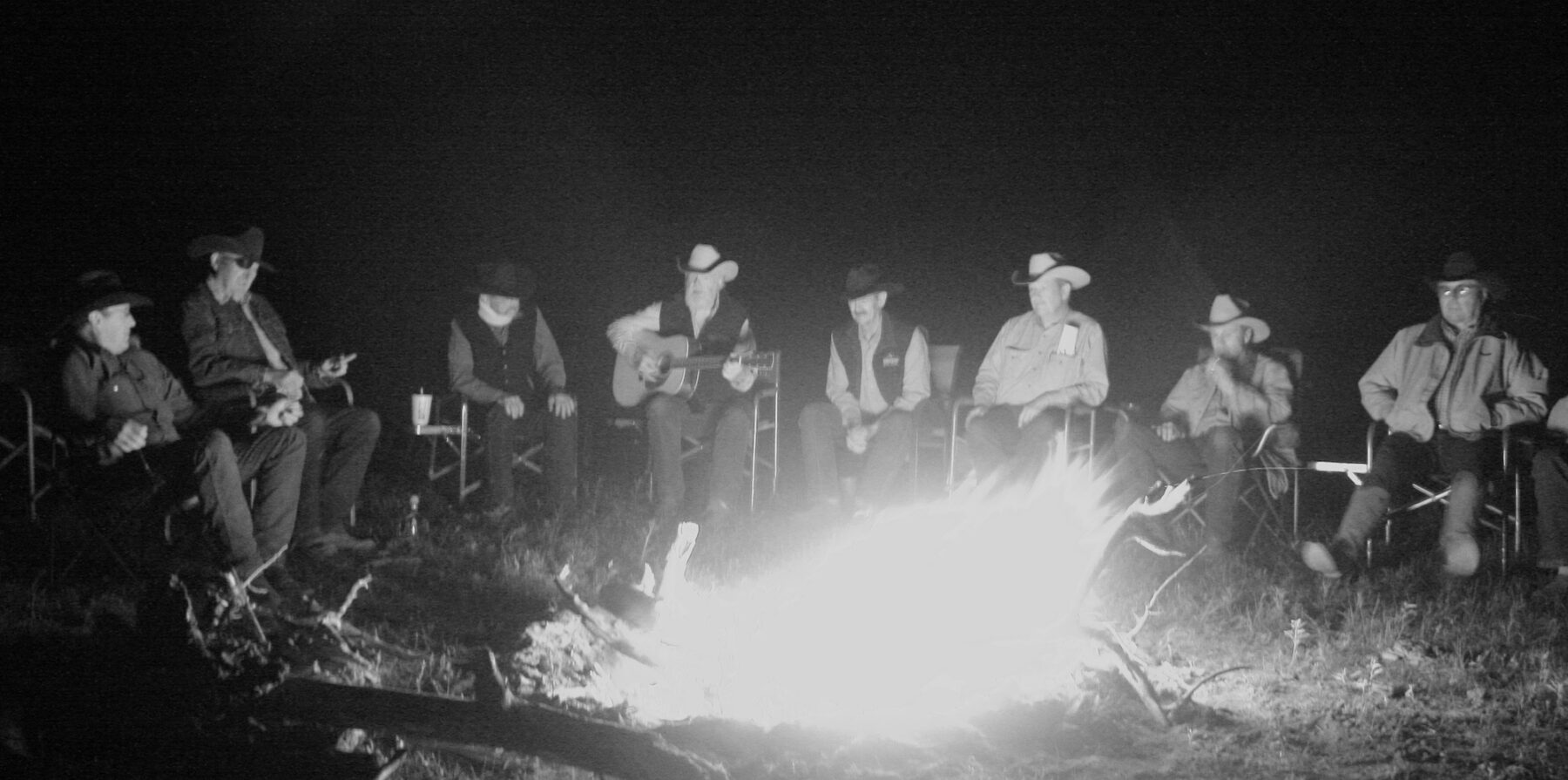
This is a special episode that was recorded live in Fort Worth, Texas as part of the Cowboy Artists of America’s 56th annual exhibition and sale. The show was called “Stories From Around the Campfire,” and it was held at the world-renowned Amon Carter Musem of American Art. I was joined on stage by seven influential members CAA community, and we had a panel discussion about the rich history and bright future of the organization. As you’ll hear, the event was partly an in-depth, educational discussion about the history of the CAA and western art markets, with the other part being hilarious stories from the organization’s past 56 years.
This event was the brainchild of CAA member and my good friend Teal Blake, who joined me on the podcast several years ago. Sitting on stage with me for the event were Fred Fellows, Jody Beeler, Bill Nebeker, Seth Hopkins, Tim Newton, Red Steagall, and Bruce Greene, all of whom are legends in the western art world– you can read more about all of them using the links below. Each of these gentlemen brought a unique perspective and distinct experiences to the conversation. But across the board, they all share a deep love of the West, authentic artistic humility, and unwavering respect for the legacy of the CAA.
This conversation winds in and out of many fascinating (and sometimes hilarious) topics. We had great discussions about the creative process, the idea of fully committing to the life of an artist, and how mentorship plays a huge role in the artist’s journey. We discussed the CAA’s unprecedented longevity in the art world, and how the group’s annual trail ride plays an important role in building friendships and strong bonds between the artists. We talk about how the CAA selects new members, and how the organization has evolved artistically over the decades. There is no lack of sense of humor among these guys, so they share plenty of crazy stories about the pranks and practical jokes that they’ve played on each other over the past 56 years. You can hear from the audience’s laughter that everyone in the auditorium was having a great time.
I was honored to share a stage with these seven men, and I greatly appreciate Teal inviting me to be a part of such a special few days. Hope you enjoy!
Photos courtesy of the Cowboy Artists of America
LISTEN & DOWNLOAD:
Apple Podcasts
Spotify
Google Podcasts
Overcast
… or wherever you get your podcasts!
—
RESOURCES:
Topics Discussed:
- 2:40 – Intro
- 4:55 – Fred Fellows’ journey from Northrop Aircraft to professional artist
- 13:20 – Jody talks about Joe Beelor’s focus and work ethic
- 15:40 Bill Nebeker tells one of his world-famous jokes
- 18:40 – Bill discusses mentorship and art education for the next generation
- 25:40 – Seth Hopkins discusses the CAA’s longevity in the art world
- 28:10 – Tim Newton discusses how the CA began his journey in the art world
- 33:10 – Red Stegall talks about his deep respect for the CAA
- 38:40 – Bruce Greene discusses the balance of being an individual with being a member of a brotherhood of artists
- 46:25 – Fred discusses the CA trail ride
- 49:40 – Crazy pranks and funny stories from the trail ride
- 1:00:40 – What are the criteria for joining the CAA?
- 1:05:55 – What does the future of the CAA look like?
- 1:07:40 – Early days of selling western art, before there was a robust western art market
- 1:10:40 – How does CA pick trail ride locations
- 1:12:55 – How the CA built the western art market
- 1:16:10 – How the CA thinks about finding new artists in the future
Information Referenced:
- Cowboy Artists of America
- 56th Annual Exhibition and Sale
- Teal Blake
- Fred Fellows
- Jody Beeler
- Bill Nebeker
- Seth Hopkins
- Tim Newton
- Red Steagall
- Bruce Greene
- All CAA active members
- All CAA emeritus members
- Western Horseman
- Booth Museum
- Taos Society
- Tribe by Sebastian Junger
- Joe Beeler Foundation
Enjoy this episode? Then you might like these too:
- Teal Blake – On Being Authentic & Original
- Duke Beardsley – Art in the Big, Bold American West
- Mark Maggiori – A Fresh View of the American West
- Jason Rich – The Humility and Hard Work of Creativity
- Daniel Vergés – The Pursuit of Simplicity in Art & Life
- Melissa DiNino – Building a Unique Life in Big Sky Country
- Jessica Lewis – Doing More With Less
- Morgan Irons – Finding Her Muse
- Chris Douglas – An Unexpected Artistic Journey
- Kelsey Johnson – Chasing Her Artistic Ambitions
- Frances Ashforth – Art, Water, and Wide-Open Spaces
- Live from Maxwell Alexander Gallery
Visit the podcast page for a full list of episodes that can be sorted by topic.
Chris Dombrowski, Part 2 – “The River You Touch”
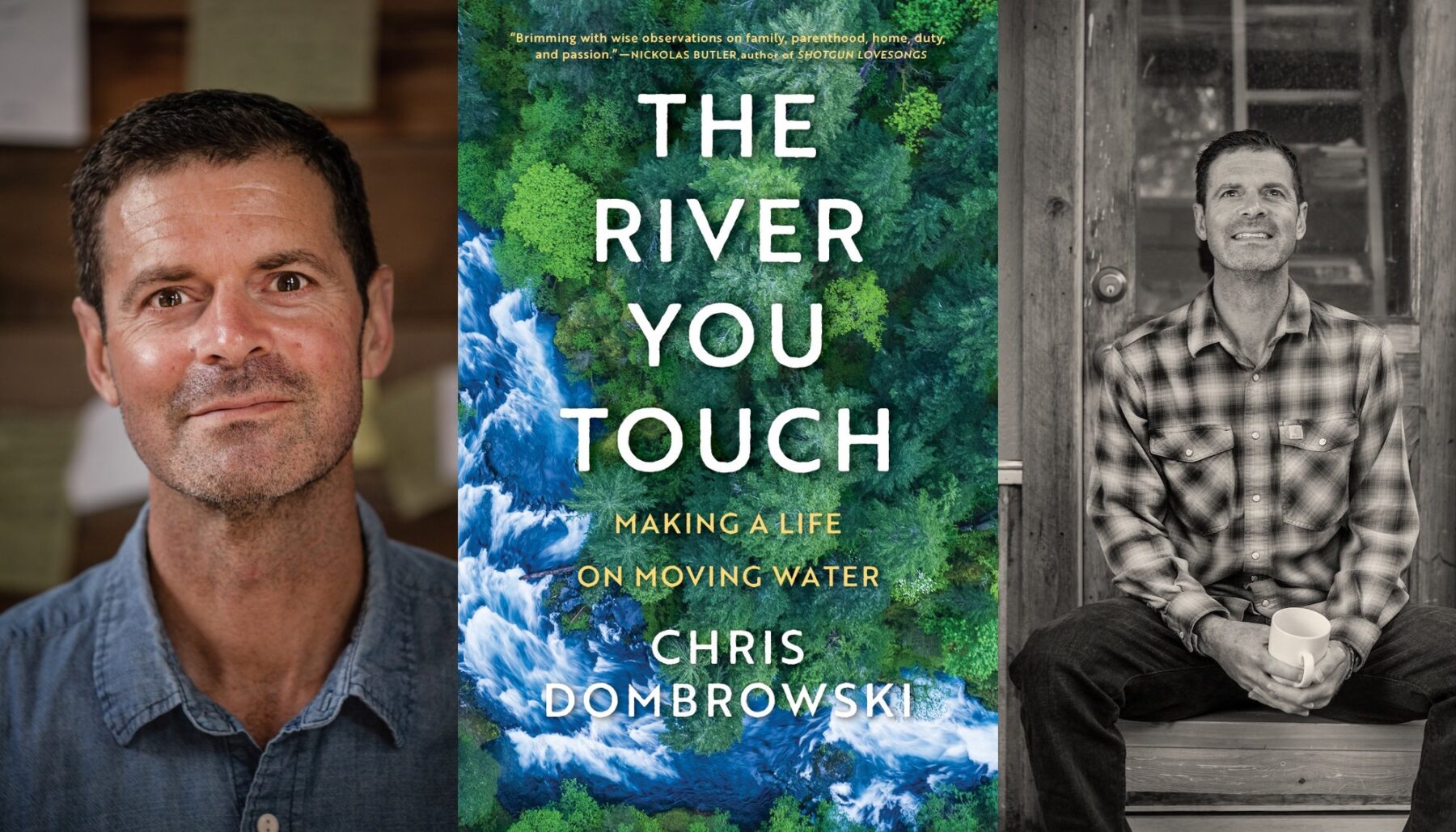
Chris Dombrowski is a Missoula-based writer, poet, teacher, and fishing guide, and he’s also the author of the excellent new book The River You Touch: Making a Life on Moving Water. If you’re a longtime Mountain & Prairie listener, you probably remember Chris’s first appearance on the podcast in which we discussed his first book Body of Water and his poetry collection, Ragged Anthem. Since that first conversation, Chris has become a great friend, sounding board, and supporter, and his generous spirit and creative commitment continue to be a huge source of inspiration for everything I’m trying to do here at Mountain & Prairie.
Like me, Chris is not originally from the West, but since moving here, he has built a meaningful, purpose-driven life that is deeply connected to the region’s rugged land and powerful rivers. Whether guiding fishing clients on the Big Hole, foraging food with his family, or hunting birds with his dog Zeke, the West’s wild places are a cornerstone of Chris’s life– professionally, personally, and spiritually. His new book The River You Touch offers rich insights into his journey from his home state of Michigan to his now-home of Montana, as well as his personal evolution as a husband, father, friend, and community member. Beautifully written, surprisingly vulnerable, and extremely inspiring, The River You Touch is one of the best books I’ve read this year.
Chris and I connected virtually and had a fun conversation about the book, fatherhood, adventure, writing, and much more. We started by discussing how The River You Touch came to be, which has an interesting connection to our first podcast conversation. We talk about his process of combining poetic prose with non-fiction narrative, as well as his desire to explore ideas around masculinity and vulnerability. We talk a lot about Jim Harrison– their friendship, Harrison’s genius, and his other-worldly work ethic. We discuss family, the blessing of having strong and tough wives, advice for aspiring writers, and more good book recommendations. Enjoy!
Photos by (past podcast guest) Erik Petersen
LISTEN & DOWNLOAD:
Apple Podcasts
Spotify
Google Podcasts
Overcast
… or wherever you get your podcasts!
—
RESOURCES:
Topics Discussed:
- 3:15 – Chris talks about how he came upon the idea that became his most recent book, The River You Touch
- 8:30 – Chris discusses his motivations for writing
- 14:30 – Chris talks about his writing process for The River Your Touch
- 20:30 – Chris discusses being vulnerable in his writing
- 30:30 – Chris talks about the need for more writing that discusses masculinity and vulnerability
- 34:45 – Chris discusses his relationship with Jim Harrison and how he operated with such a work hard, play hard mentality
- 42:15 – Chris explains the advice he received from Jim Harrison: “Don’t let your life become the sloppy leftovers of your work.”
- 45:45 – Chris reads a section from The River You Touch
- 48:30 – Chris discusses his thinking regarding having children and their environmental impact
- 51:45 – Chris talks about his wife and continuing his writing career after having children
- 54:15 – Chris discusses how he advises students who may not want to write as much as they think they do
- 1:00:15 – Chris talks about his audiobook narrator for The River You Touch
- 1:04:00 – Chris’s book recommendations
Information Referenced:
- The River Your Touch by Chris Dombrowski
- Body of Water by Chris Dombrowski
- Jeffery Foucault
- Upper Big Hole River
- Montana Arctic Grayling
- Draft No. 4 by John McPhee
- Salish peoples
- Bill Bryson
- Jim Harrison
- Boys and Oil: Growing up Gay in a Fractured Land by Taylor Brorby
- Sergei Yesenin
- Raymond Carver
- Richard Ford
- Tobias Wolff
- Dirty Realism
- John Updike
- Mile Marker Zero by William McKeen
- Thomas McGuane
- Jimmy Buffett
- Hunter S. Thompson
- Juanita Vero
- Chandra Brown
- Freeflow Institute
- Jonathan Franzen
- Lois Welch
- Norman McLean
- David Gessner
- Taj Mahal
- Nick Adams Stories by Ernest Hemingway
- The Sun Also Rises by Ernest Hemingway
- Milkweed Editions
- Mary Austin Speaker
- Tecovas
- Nickolas Butler
- Adam Gall
- One Long River of Song by Brian Doyle
- Believers by Lisa Wells
- Perma Red by Debra Magpie Earling
- The Lost Journals of Sacajewea by Debra Magpie Earling
- Fools Crow by James Welch
Enjoy this episode? Then you might like these too:
- Dylan Tomine – Protecting What He Loves
- Peter Stark – Tales of Adventure, Exploration, & Epic Battles
- Antonia Malchik – Exploring Culture & Complexity
- Nickolas Butler – The Craft of Creativity
- Peter Heller – Chasing the Flow
- Hal Herring – A Man of Words & Wild Places
- Monte Burke – Exploring Obsession
- Juanita Vero, Part 2 – A Deep Desire to Serve
- Malcolm Brooks – Epic Tales from the American West
- Mike Foote – Perfection is in the Process
- Brendan Leonard, Part 2 – On Running, Creating, and Other Irrational Passions
- Chris La Tray – Rediscovering His Past, Writing His Future
Visit the podcast page for a full list of episodes where
Douglas Brinkley – Exploring the Past to Find Inspiration for the Future
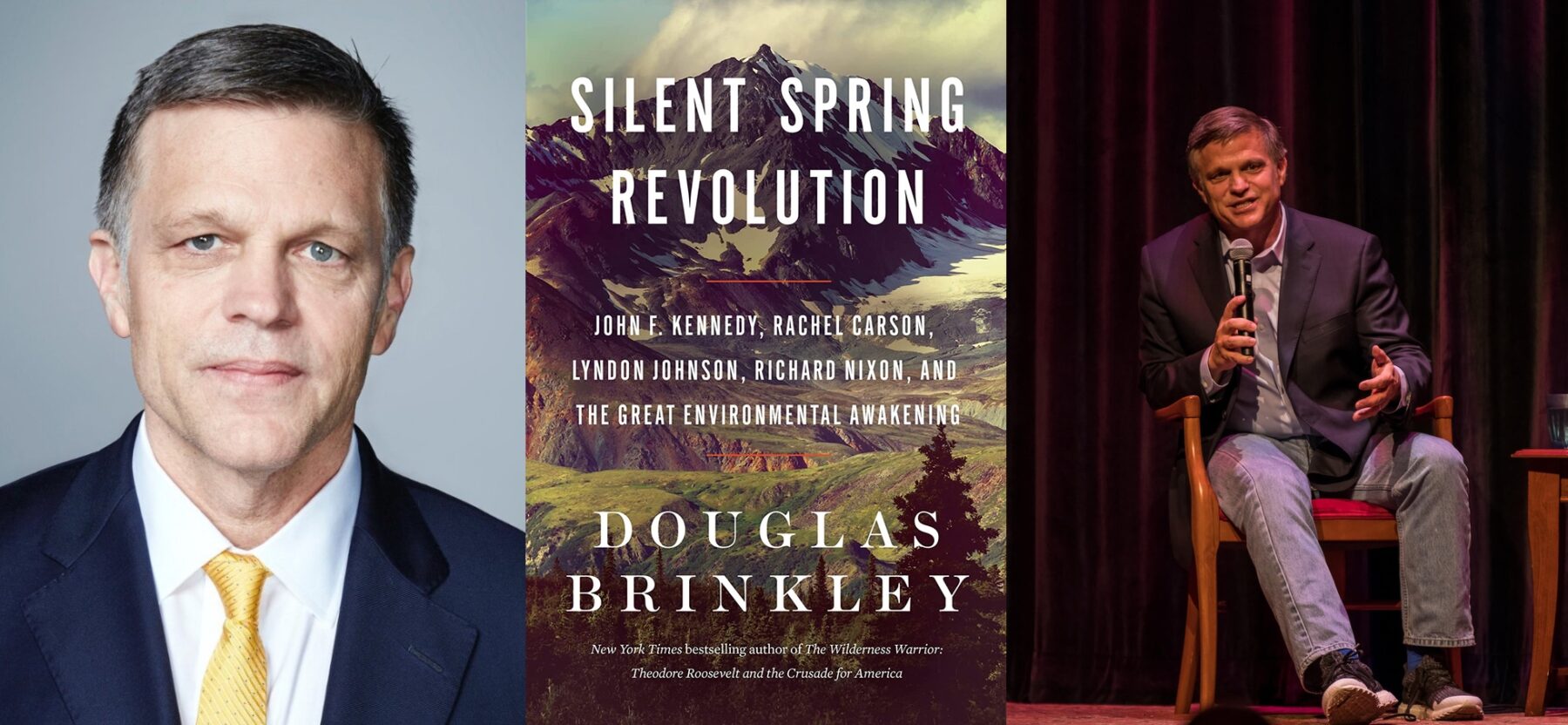
Douglas Brinkley is a world-renowned historian, author, and professor who may be best known to Mountain & Prairie listeners as the author of The Wilderness Warrior: Theodore Roosevelt and the Crusade for America and Rightful Heritage: Franklin D. Roosevelt and the Land of America, which detailed the first two waves of the United States’ conservation movement. His most recent book is Silent Spring Revolution: John F. Kennedy, Rachel Carson, Lyndon Johnson, Richard Nixon, and the Great Environmental Awakening, which delves into the third wave of conservation and the rise of the modern environmental movement. I was lucky enough to read an advanced copy of Silent Spring Revolution, and I highly recommend it.
Doug was raised in Ohio and from an early age, his parents instilled in him and deep love and respect for wild places, national parks, and the rich history of conservation in the United States. After earning his M.A. and Ph.D. from Georgetown University, Doug began his career as a professor and historian, and he went on to teach at numerous prestigious institutions, including the US Naval Academy, Princeton, Hofstra, Tulane, and, most recently, Rice University. The prolific nature of Doug’s writing life is hard to comprehend– he’s written extensively about everyone from TR to FDR, JFK to Rosa Parks, and about places ranging from the Alaskan Wilderness to the moon. He’s the literary executor of Hunter S. Thompson’s estate and has edited the diaries of Jack Kerouac for two separate books. He’s also served on the boards of numerous conservation organizations and has won awards for his contributions to the conservation movement. And those accomplishments just scratch the surface of his career…
Doug has been a long-time literary hero of mine, and I credit The Wilderness Warrior with fueling my obsession with TR and inspiring me to move out of the real estate business and into land and water conservation work. So when I had the opportunity to join Doug at his home in Austin for a conversation about Silent Spring Revolution, I didn’t hesitate to jump on a plane to Texas. We had a wonderful, wide-ranging conversation about the book, exploring everything from the life and work of Rachel Carson to the TR-like qualities of Supreme Court Justice William O. Douglas to the environmental legacies of JFK, LBJ, and Nixon. We also talk about Doug’s longstanding personal connection to conservation and how a deep love of teaching is at the core of all of his work. Doug also talks about the roles that art and music play in his life, what gives him hope for the future, and much more. The episode notes are jam-packed with everything we discussed, so be sure to visit the episode webpage for copious resources and links.
Again, I highly recommend Silent Spring Revolution, but really, I highly recommend all of Doug’s work. I greatly appreciate Doug welcoming me into his home and taking the time to chat, I hope you enjoy both this conversation and Silent Spring Revolution as much as I did.
All photos courtesy of Douglas Brinkley
LISTEN & DOWNLOAD:
Apple Podcasts
Spotify
Google Podcasts
Overcast
… or wherever you get your podcasts!
—
RESOURCES:
Topics Discussed:
- 5:30 – Doug walks us through a brief history of American conservation, as well as his love for Thoreau
- 9:00 – JFK’s connection to the ocean and how it influenced his conservation ethic
- 15:30 – Wiliam O’Douglas’s impact on American conservation
- 20:00 – How Rachel Carson’s work ended up connecting her to JFK
- 31:30 – The bond that developed between Rachel Carson and JFK
- 34:30 – The Nixon legacy in American Conservation
- 41:45 – Sewage treatment and its unexpected contribution to the environmental movement
- 45:00 – The formation of the Endangered Species Act
- 46:00 – Doug talks about how he writes, his relationship with teaching, and his National Park travels
- 52:00 – Doug discusses the more art-focused parts of his life
- 56:20 – Doug talks about what gives him hope despite climate change
Information Referenced:
- Silent Spring Revolution by Douglas Brinkley
- Henry David Thoreau
- The Wilderness Warrior by Douglas Brinkley
- John Muir
- Gifford Pinchot
- National Wildlife Refuge System
- Franklin Delano Roosevelt
- Civilian Conservation Corps
- Dust Bowl
- Rachel Carson
- Silent Spring by Rachel Carson
- John F. Kennedy
- Lyndon B. Johnson
- Richard Nixon
- Cape Cod by Henry David Thoreau
- Rose Kennedy
- Brookline, MA
- Walden Pond
- Concord, MA
- Cape Cod, MA
- Hyannis Port, MA
- William O. Douglas
- Provincetown, MA
- Wellfleet, MA
- Truro, MA
- Cape Cod National Seashore
- Padre Island National Seashore
- Point Reyes National Seashore
- Muir Woods National Monument
- Cape Lookout National Seashore
- Assateague Island National Seashore
- Fire Island National Seashore
- Cumberland Island National Seashore
- Apostle Island National Lakeshore
- Sleeping Bear Dunes National Lakeshore
- Indiana Dunes National Park
- Marin County, CA
- Ralph Yarborough, D-TX
- Yakima, WA
- Mt. Adams
- Mt. Baker
- Whitman College
- Columbia University
- Princeton University
- Joseph Kennedy
- C&O Canal
- Cumberland, MD
- Olympics Range
- Buffalo River, AR
- Red River Gorge
- Wendell Berry
- My Wilderness: East to Katahdin by William O’Douglas
- My Wilderness: The Pacific West by William O’Douglas
- Environmental Protection Agency
- Audubon Society
- Isaak Walton League
- Trout Unlimited
- Eric Sevareid
- Springdale, PA
- Allegheny River
- Howard Zahniser
- The Wilderness Society
- Harold L. Ickes
- Edward Abbey
- Clarion River
- Chapman University
- Johns Hopkins University
- Woods Hole, MA
- Baltimore Sun
- US Fish and Wildlife Service
- American shad
- “Conservation in Action” booklets by Rachel Carson
- Works Progress Administration guides
- Library of America
- Jacques Gusteau
- Jean Kennedy Smith
- Anne Morrow Lindbergh
- Sanibel Island, FL
- DDT
- Patuxent Wildlife Center
- Malaria
- Reader’s Digest
- Jimmy Carter
- Plains, GA
- Sumter County, GA
- Marjorie Spock
- Long Island, NY
- United States Department of Agriculture
- Benjamin Spock
- The New Yorker
- Common Sense by Thomas Payne
- Uncle Tom’s Cabin by Harriot Beecher Stowe
- The Jungle by Upton Sinclair
- William Ruckelshaus
- Environmental Defense Fund
- National Environmental Policy Act
- Environmental Impact Statement
- National Democratic Institute Advisory Councils
- Jackie Kennedy
- Eleanor Roosevelt
- Robert F. Kennedy
- Hickory Hill
- Addison’s Disease
- Stewart Udall
- Frank Church
- Ed Muskie
- Wilderness Act
- Wild and Scenic Rivers Act
- Endangered Species Act
- Key Deer
- Black-footed Ferret
- Everglades
- Florida Panther
- Manatee
- Tricia Nixon Cox
- Watergate
- Nixon Library
- San Clemente, CA
- Santa Barbara Oil Spill (Refugio)
- Cuyahoga River
- Dana Point, CA
- Laguna Beach, CA
- Bebe Rebozo
- Flipper
- John Ehrlichman
- David Brower
- Sierra Club
- Henry M. (Scoop) Jackson
- North Cascades National Park
- Boeing
- George McGovern
- Eugene McCarthy
- Gaylord Nelson
- Berkeley, CA
- Ronald Reagan
- Great Basin National Park
- Badlands National Park
- Clean Air Act
- Clean Water Act
- The Majic Bus by Douglas Brinkely
- Korean War
- Big Bend National Park
- Grand Canyon National Park
- Yosemite National Park
- Glacier National Park
- Traverse City, MI
- Empire, MI
- Medora, ND
- Ken Burns
- Missouri River
- Pisgah National Forest
- Ashville, NC
- Davidson River
- Brevard College
- Cleveland, OH
- Lake Erie
- Canyonlands National Park
- Guadalupe Mountains National Park
- Hunter S. Thompson
- Bob Dylan
- Lena Horne
- Duke Ellington
- Miles Davis
- Charlie Parker
- Coleman Hawkins
- Jann Wenner
- Rolling Stone Magazine
- Warren Zevon
- Willie Nelson
- Larry McMurtry
- Lonesome Dove by Larry McMurtry
- James McMurtry
- Continental Club
- Georgetown University
- The Phillips Collection
- Cesar Chavez
- San Joaquin Valley, CA
- Coachella Valley, CA
- Washburn Fire
- Mariposa Grove
- Hurricane Katrina
- Waveland, MS
- Neil Young
- Marvin Gaye
- Mercy Me (The Ecology)
- Joan Baez
- Pete Seeger
- Gary Snyder
Enjoy this episode? Then you might like these too:
- Hampton Sides – Live at the Aspen Institute
- Sara Dant – A Deep Dive Into the History of the West
- Mike Phillips – Audacious Goals, Relentless Action
- Heather Hansman – Demystifying Water in the West
- Hal Herring – A Man of Words & Wild Places
- Mark Kenyon – A Passion for Public Lands
- David Gessner, Part 3 – A Confluence of Conservation Ideals
- Dr. David Hewitt – The Science of Wildlife Conservation
- Betsy Gaines Quammen – A Fascinating History of Public Lands in the West
- Peter Stark – Tales of Adventure, Exploration, & Epic Battles
Visit the podcast page for a full list of episodes where
